September 5, 2021
Martha O'Kennon
A week split in two. Until Wednesday, that grinding heat we had felt for so long. And then, suddenly... Relief through the worlds. I've never seen the Asters accelerate their ripening so suddenly. Usually, it's one, two, three,... But this week it has been one, two, ten! I look forward to the big blooming days, but at the same time I want it to come over me one, two, how about four? This is another of my favorite colors - hottish Pink! The August Orange are still at it on September 4! And the Fall Phlox, natural and cultivated, are still going!
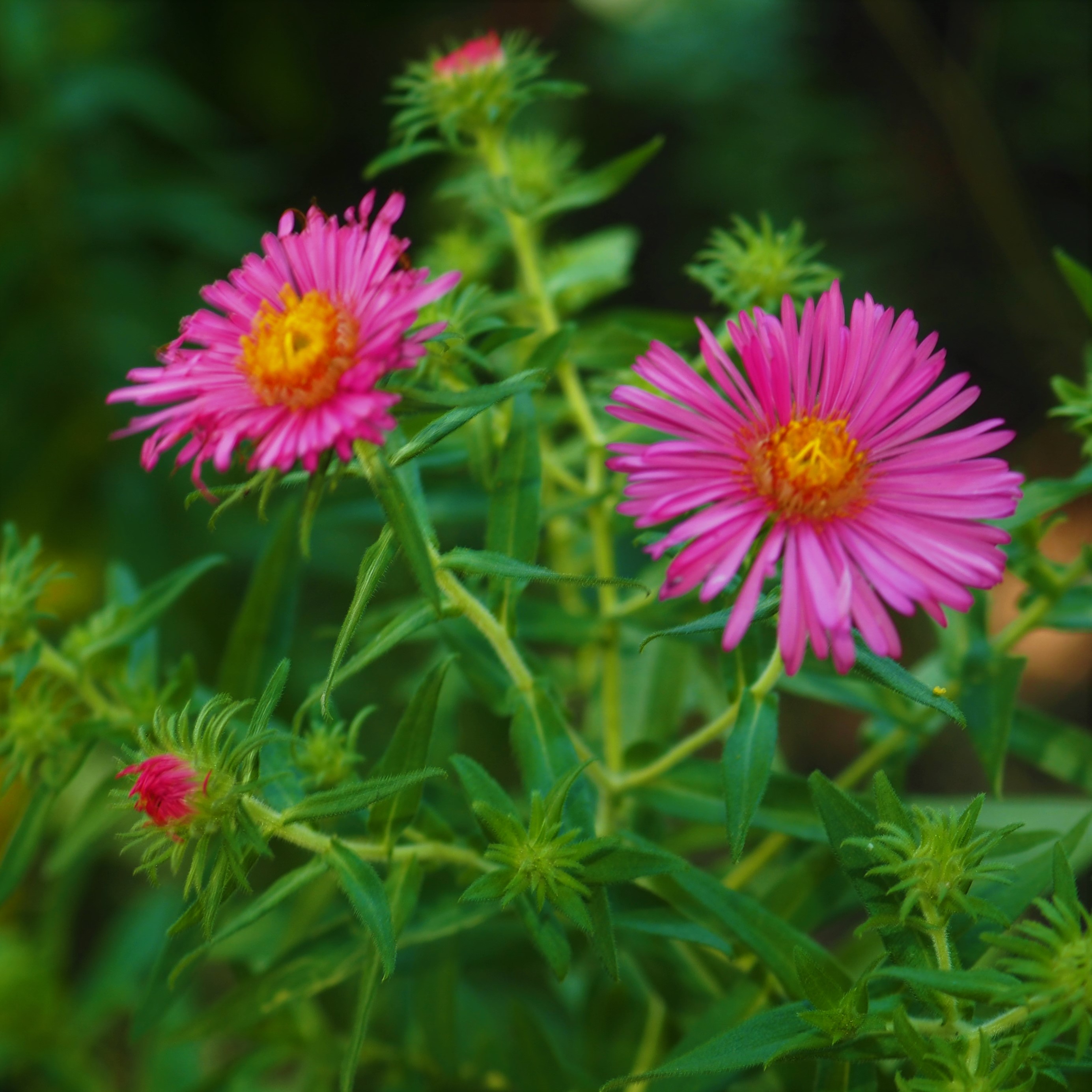
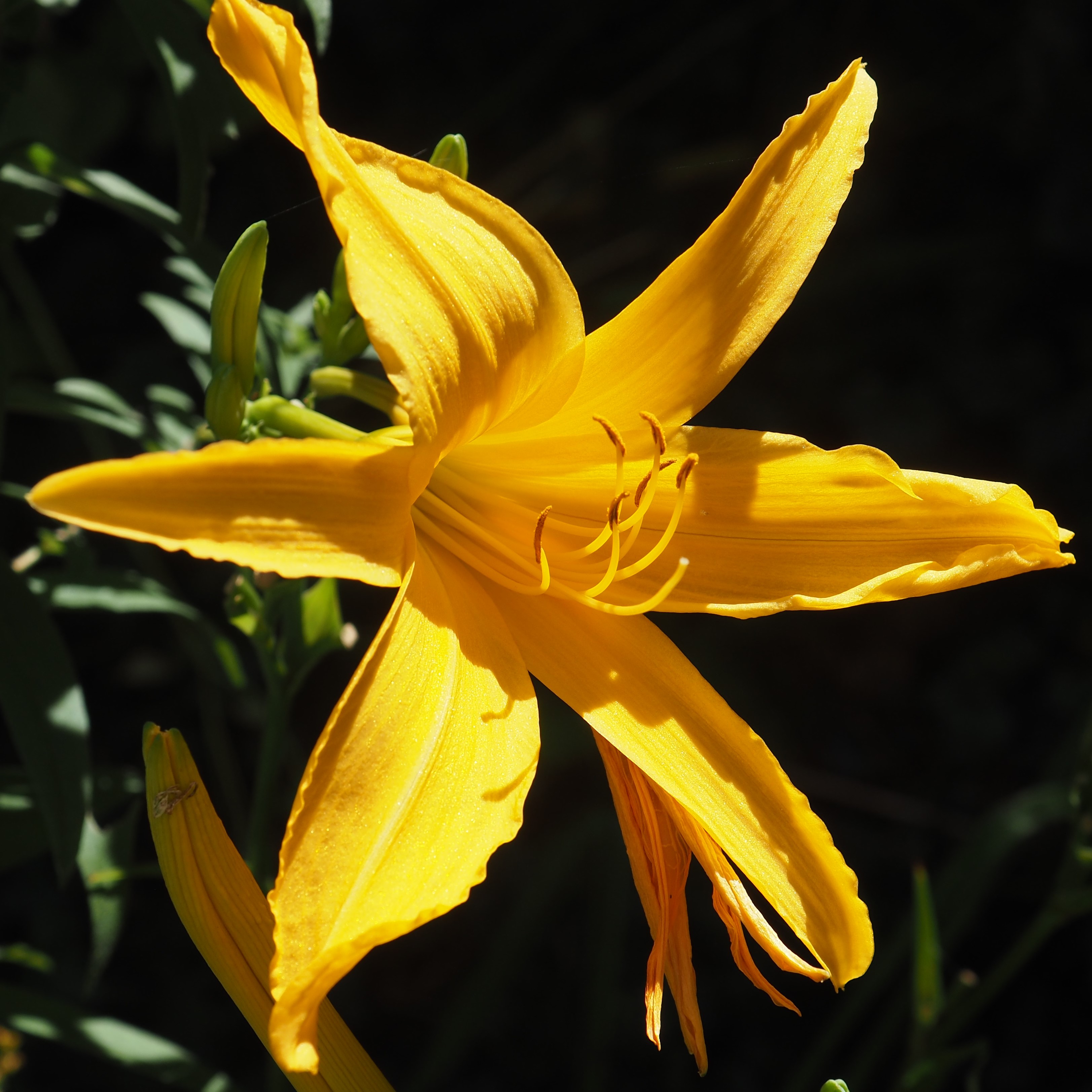
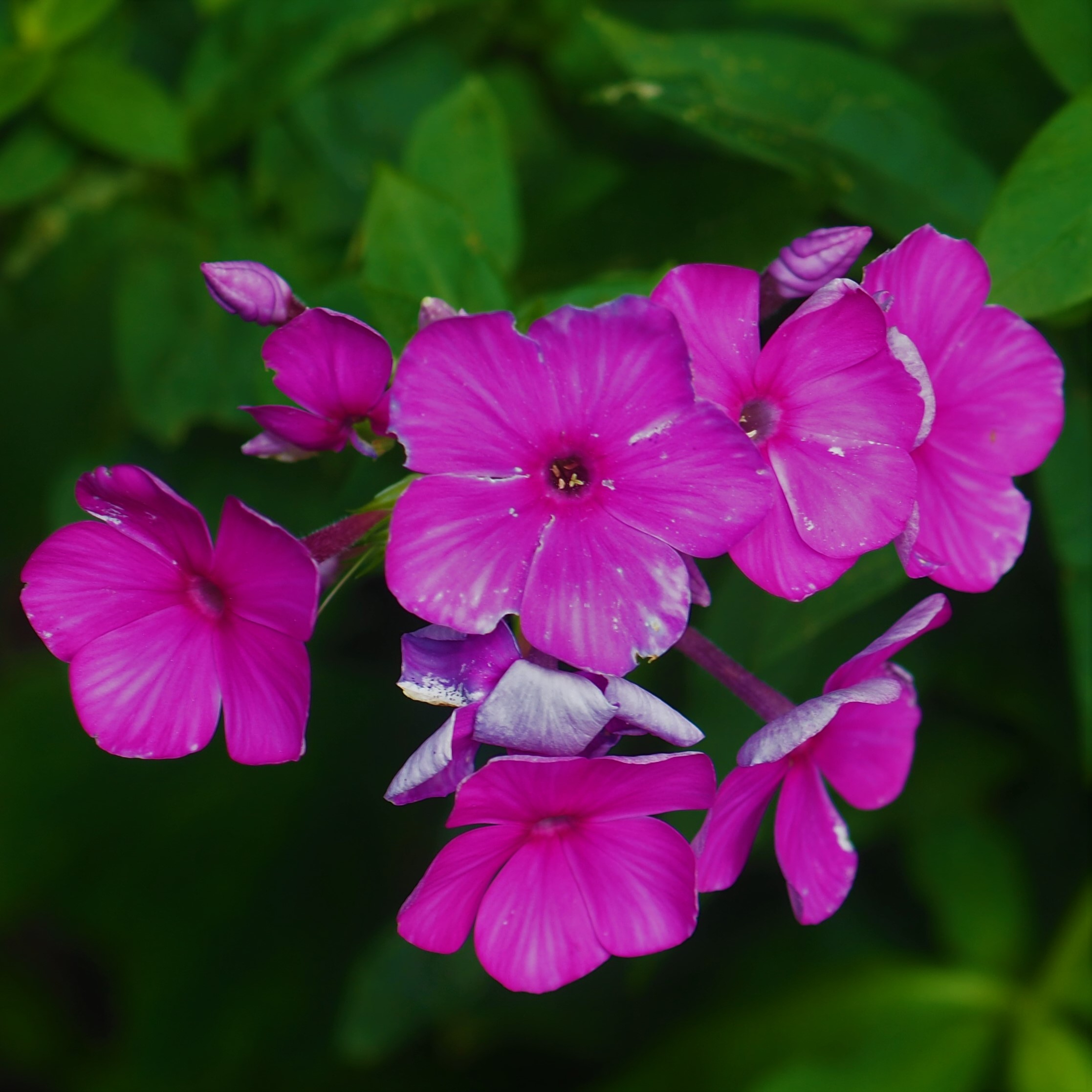
Remember that there is information in the name of the file for each image. You can see it by mousing over the
image - look at the lower left of the screen. Or you can click on the image to get to the (usually) larger image.
Then the info is displayed in the address line above. Sometimes the second click will actually display a
different view of the original image.
I'm seeing less action in the Ants. The Smaller Carpenter Ants still race slowly up and down the panels, especially on the South Wall. A few of those Odorous (to someone, not me!) House Ants join them in parallel play. But to see a nice Eastern Black Carpenter Ants, I mostly have to go out front and watch them working the sidewalks.
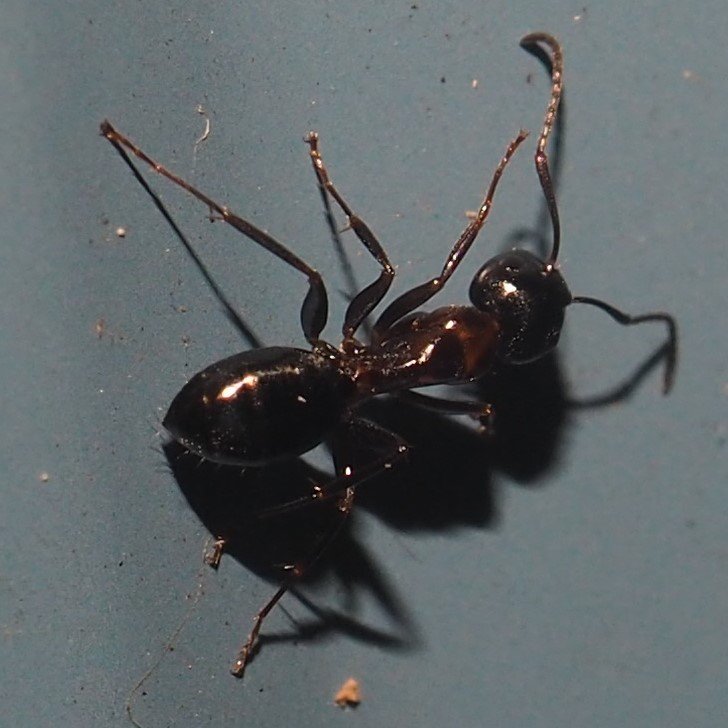

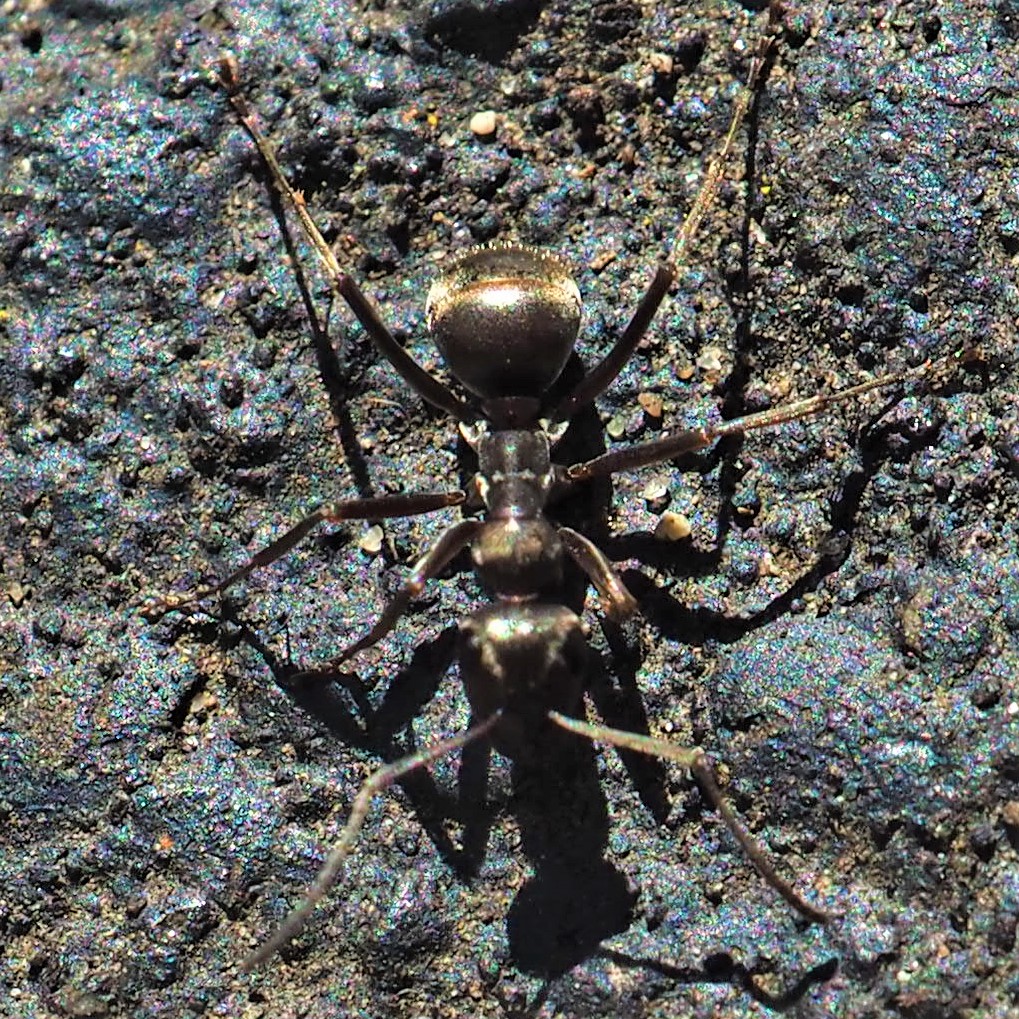
My poor Barklice! There are many fewer out right now than in the busy days of earlier Summer. The most faithful of all of them seem to be the Polypsocus, who are most numerous on the South Wall this week. Here are a group of nymphs, a nymph with an adult, and a lovely female adult which was on the North Wall later in the week.
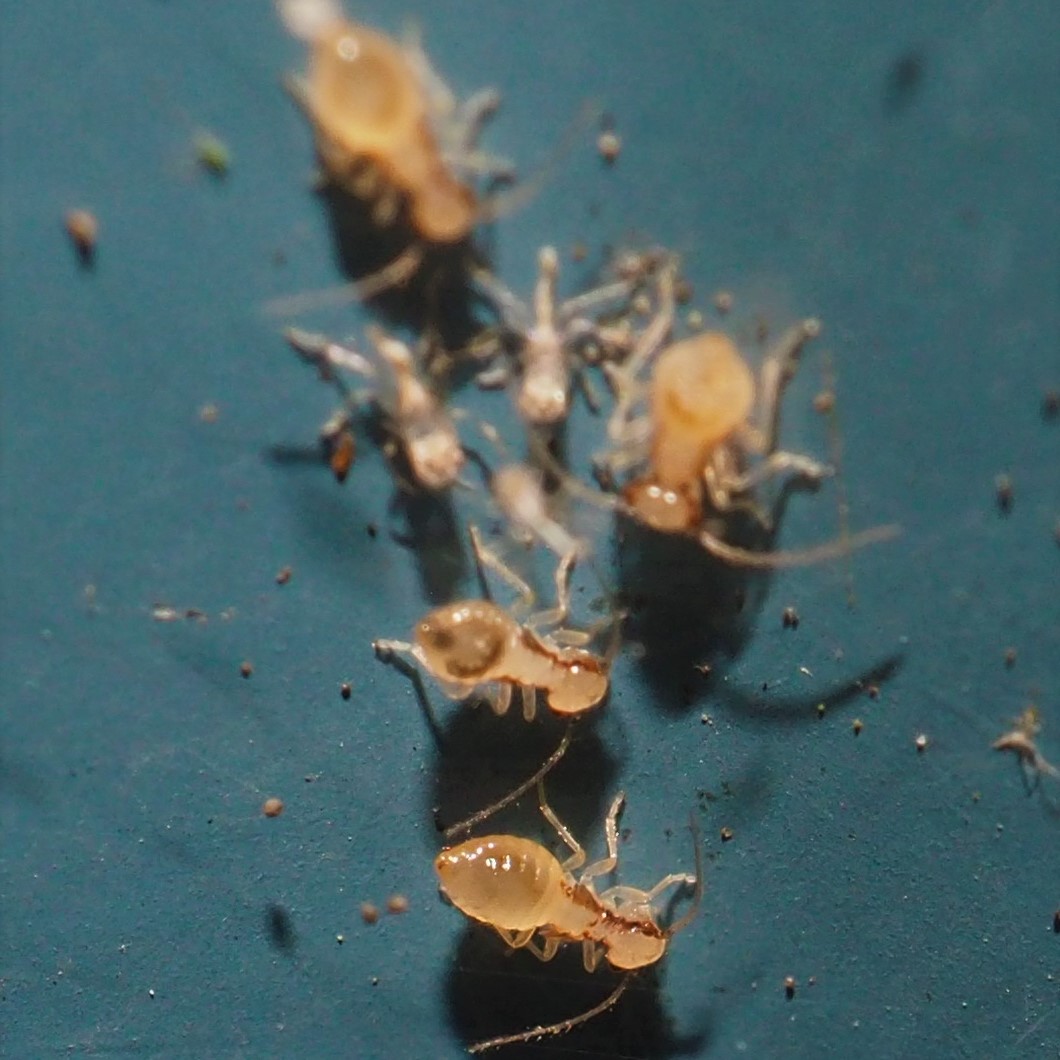

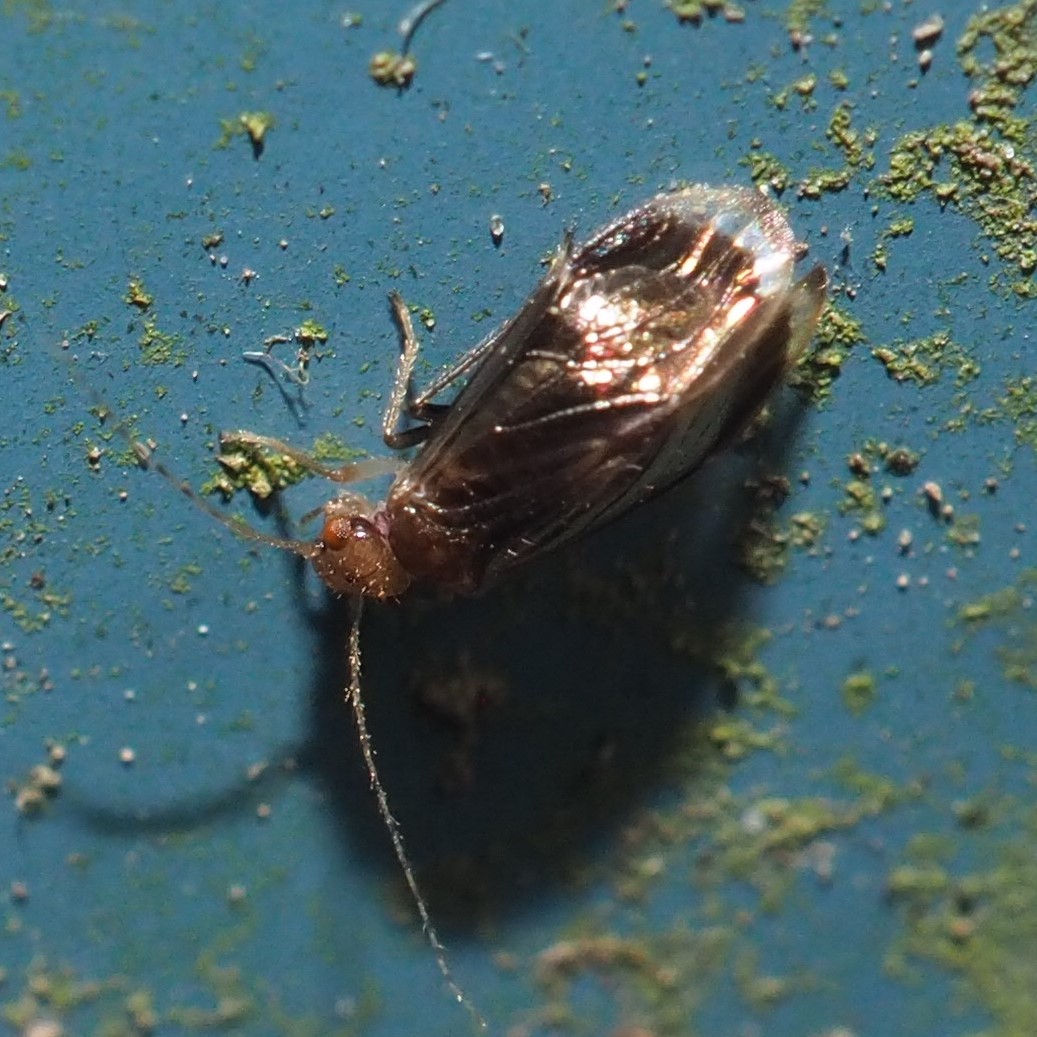
Of course, the Graphopsocus were commoner than most, and even their eggs are easier to recognize than most other Barklice.
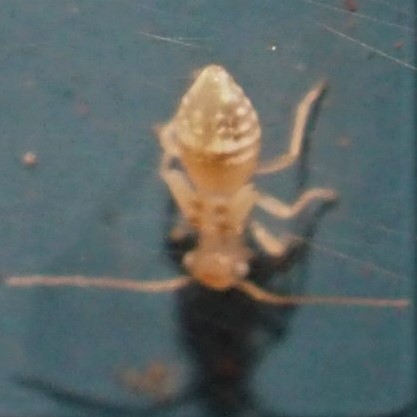
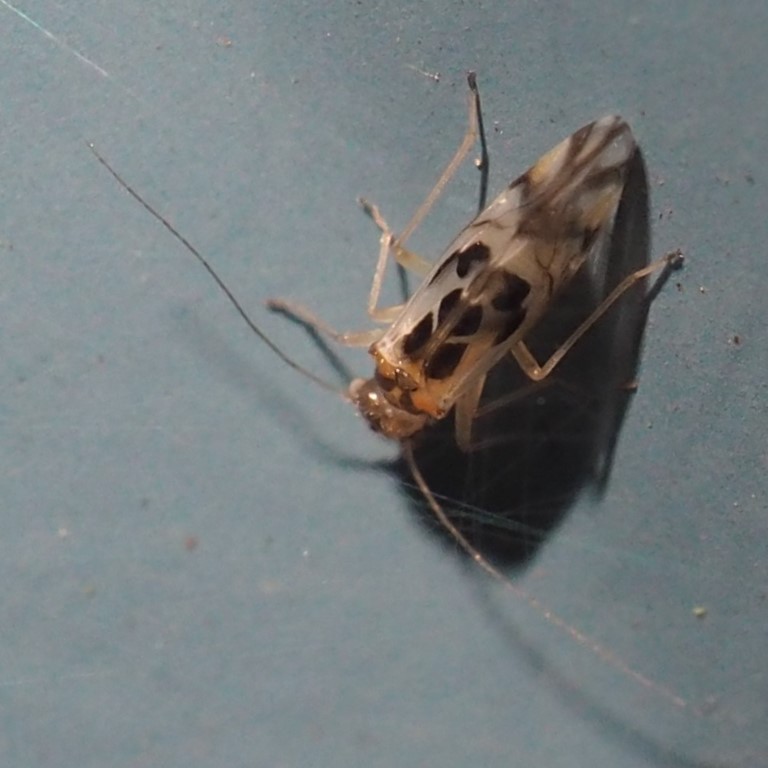
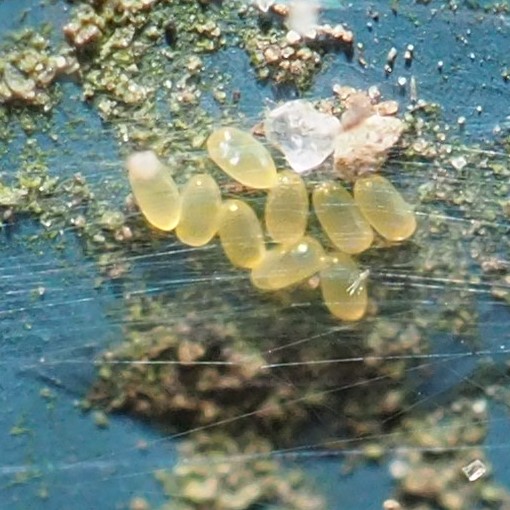
Our Echmepteryx hageni are also seen from place to place now. Here are some disguises it might acquire.
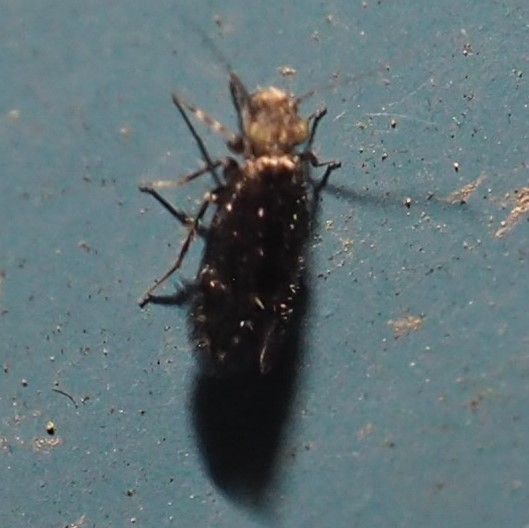
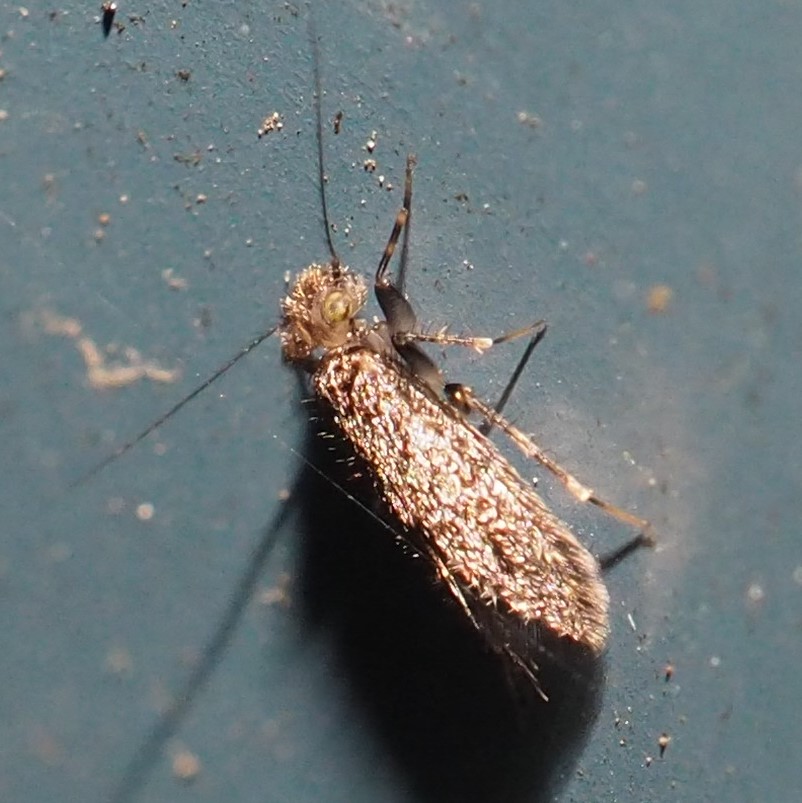
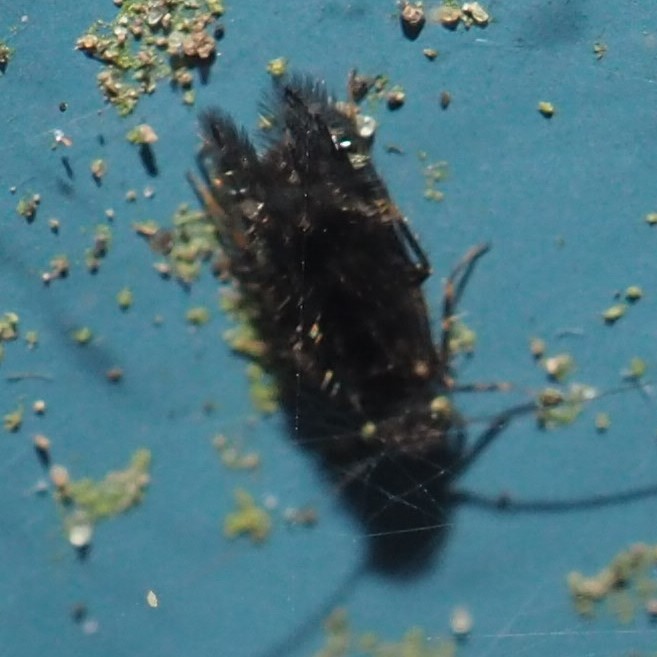
We also had a new Barklouse.. I thought at first it was Metylophorus novaescotiae, but it doesn't look right. In fact, Diane Young, Bugguide's expert in most things Barklouse, has identified it as Teliapsocus conterminus. Here's another new one, I think (number 2). And another of that new one. Diane says the second one looks like Propsocus pulchripennis but is way out of range. I'll have to look that up in BG. There are so few Barklice fiends on iNat.
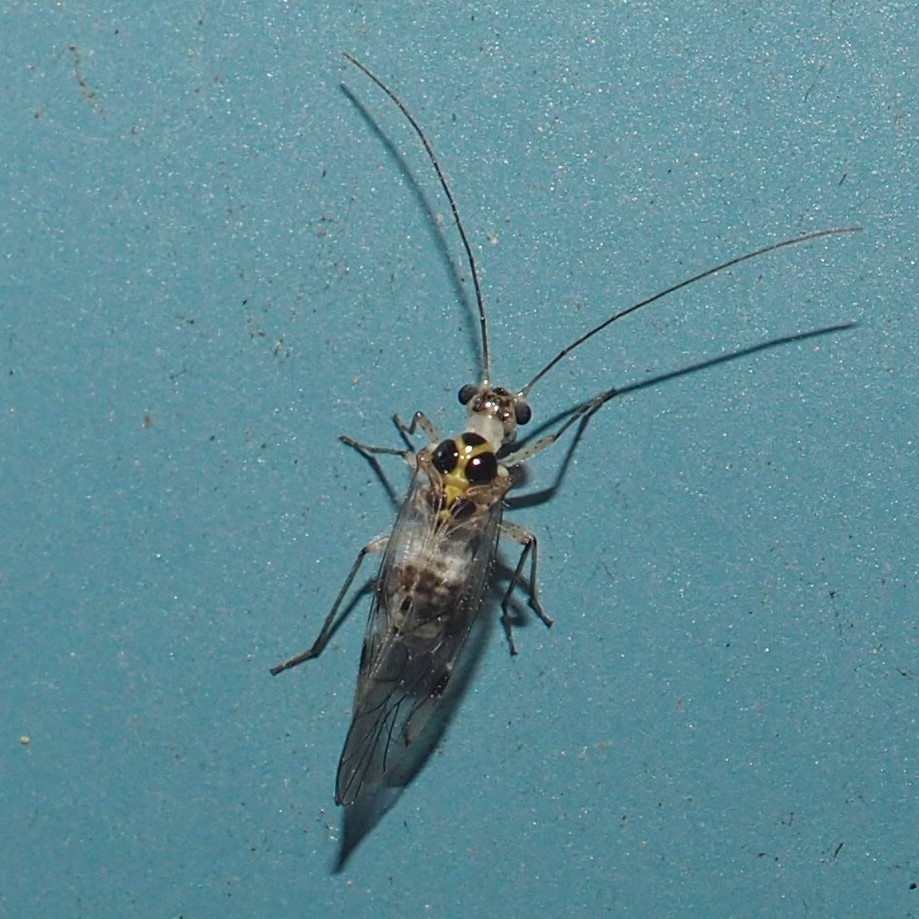
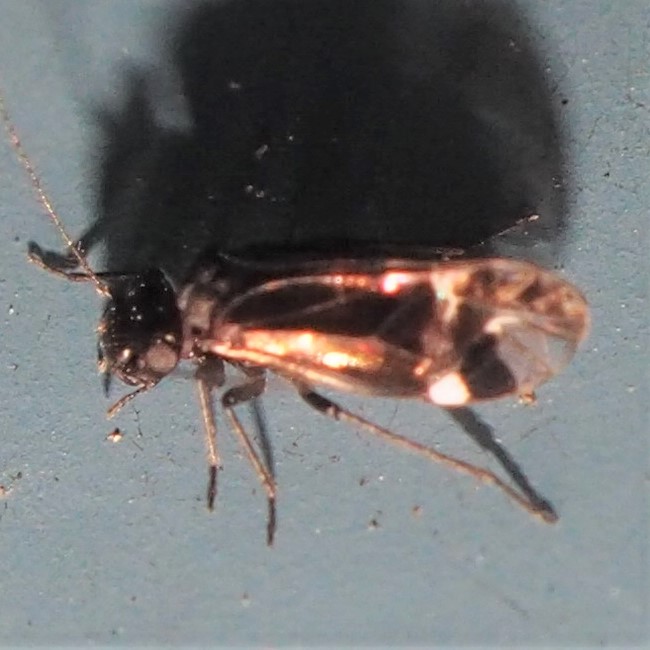
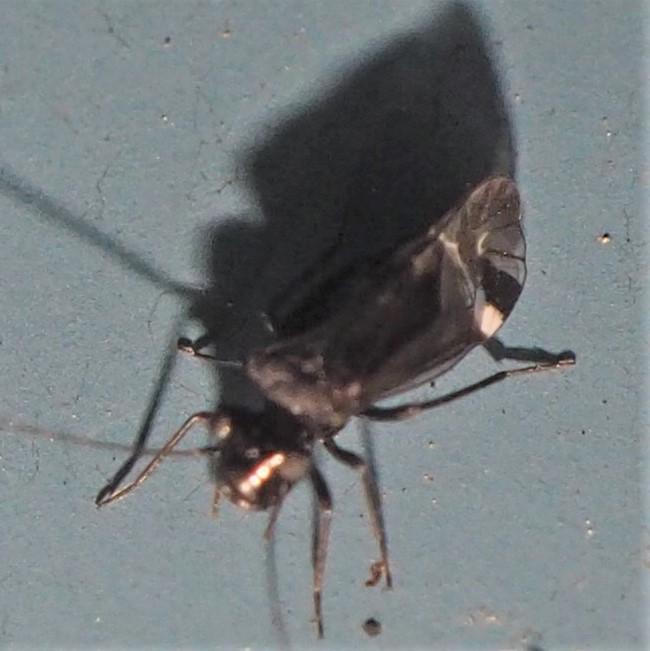
I have been worrying about my Ectopsocus meridionalis, who were so active last year at this time. But this week, as time to put the Blog to bed approached, I found a few glorious new pictures, two of them from just this afternoon. That last picture showed an Adult, a bigger and a smaller nymph, just poised where formerly there had been a batch of eggs! Life is going on here too!
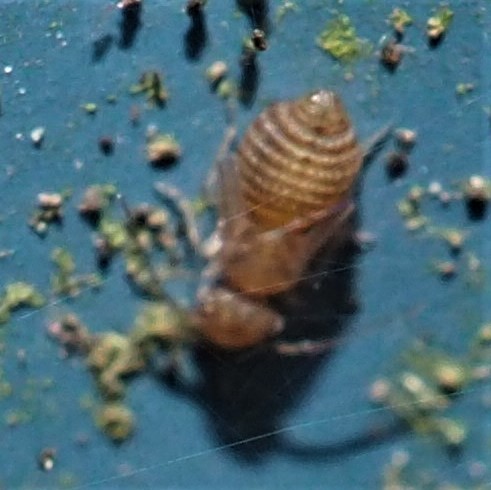

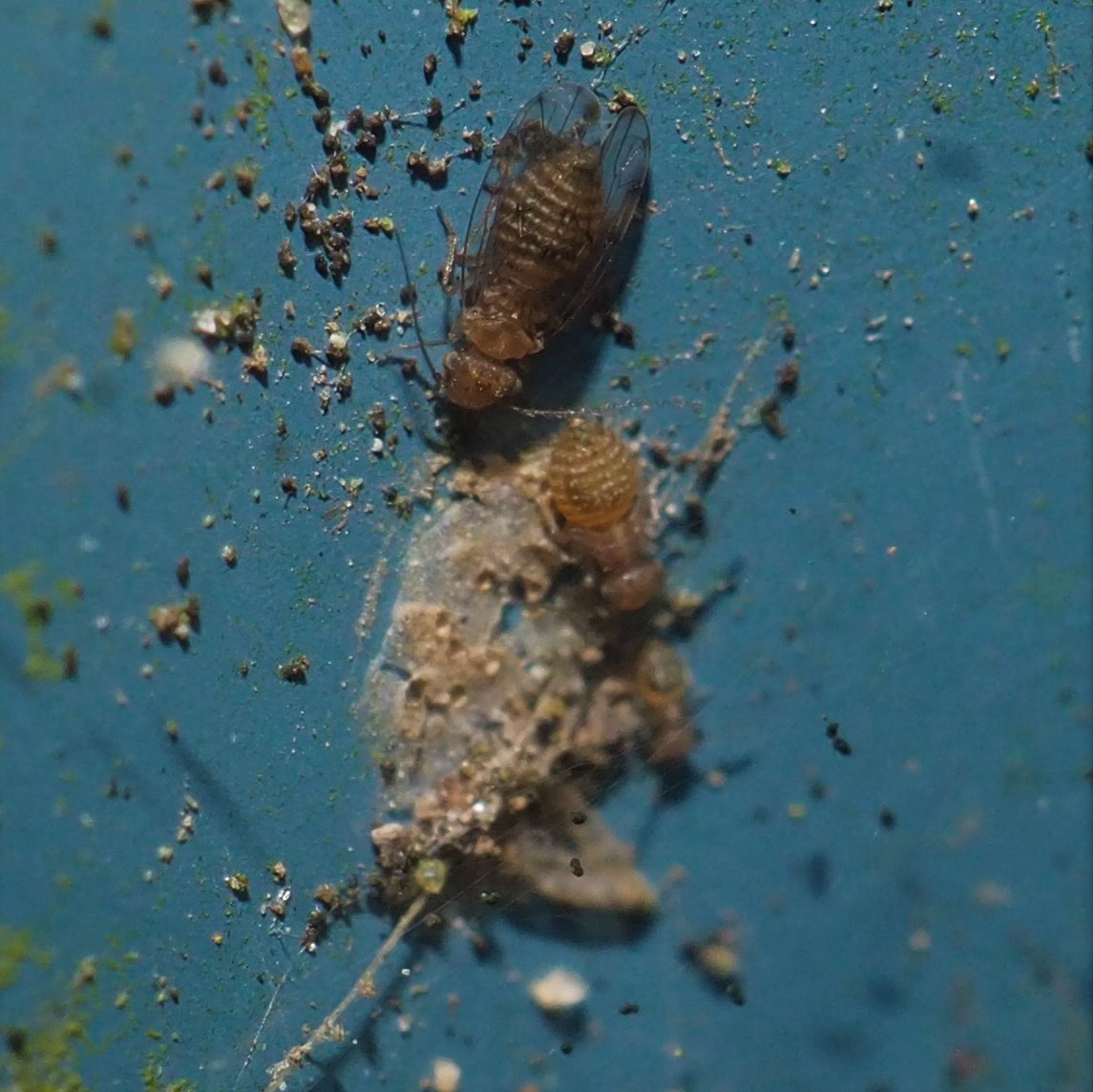
Here are some Bees brought by the Goldenrod and/or Asters. The First is not identified yet. Second and Third are probably Mason Bees or relatives, since their underside is where the pollen is sticking.


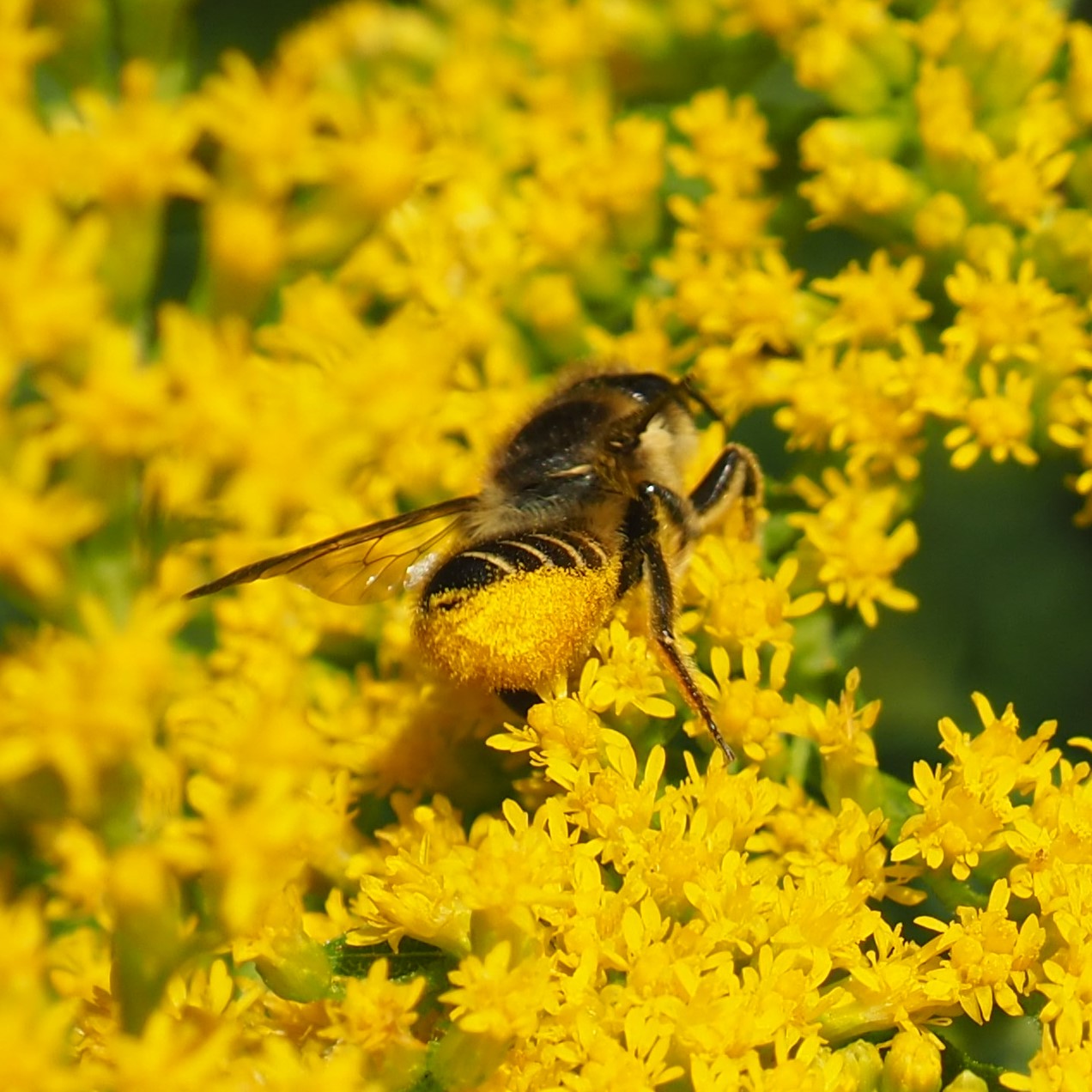
You know there are going to be Honey Bees (picture 1))and Bumblebees too. Second shows a larger Bumblebee with those big Goldenrod pollen grains all over it. Remember what Mary-Ann said about Goldenrod's pollen grains being so large that they don't get into our air space? Third shows a smaller species of Bumblebee too.
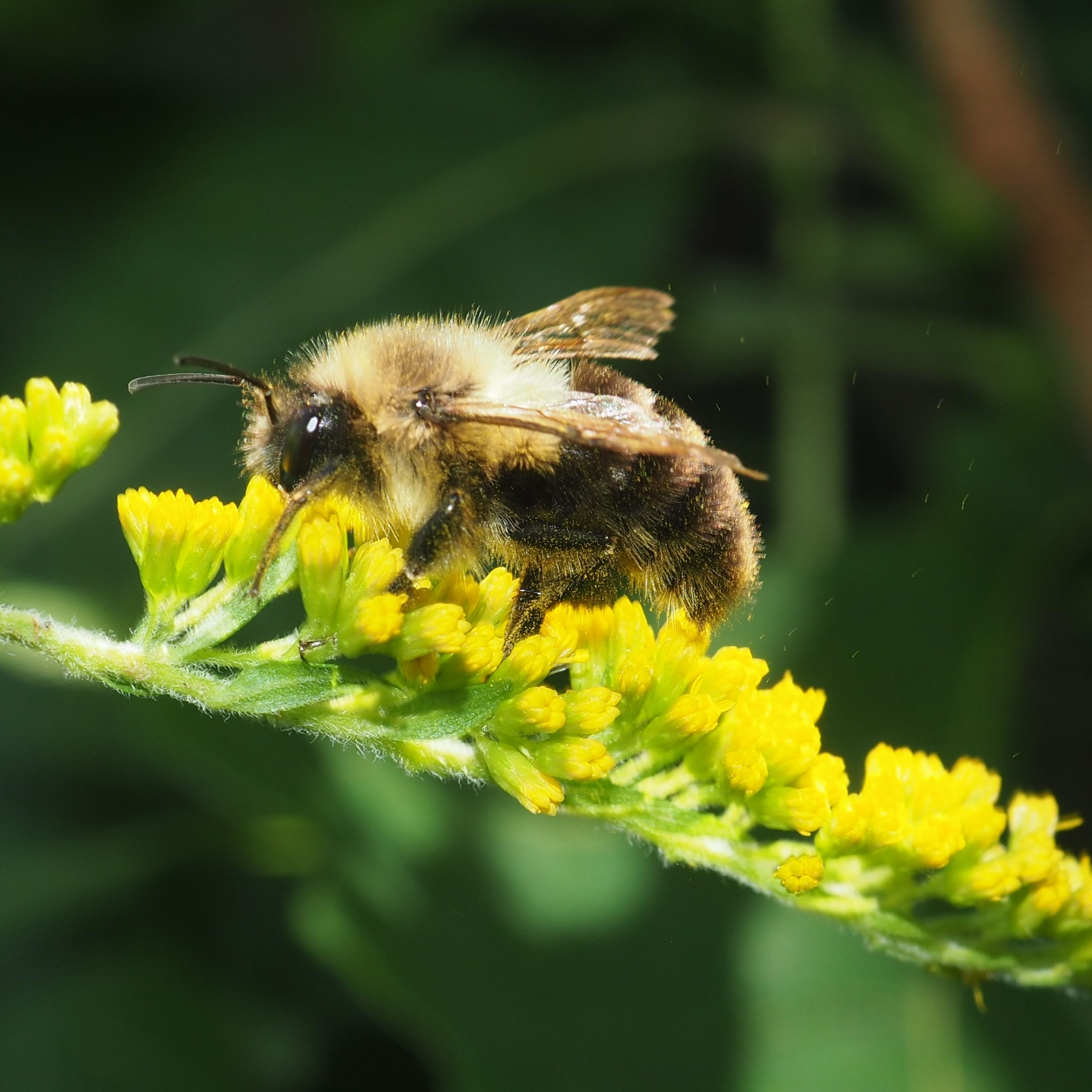
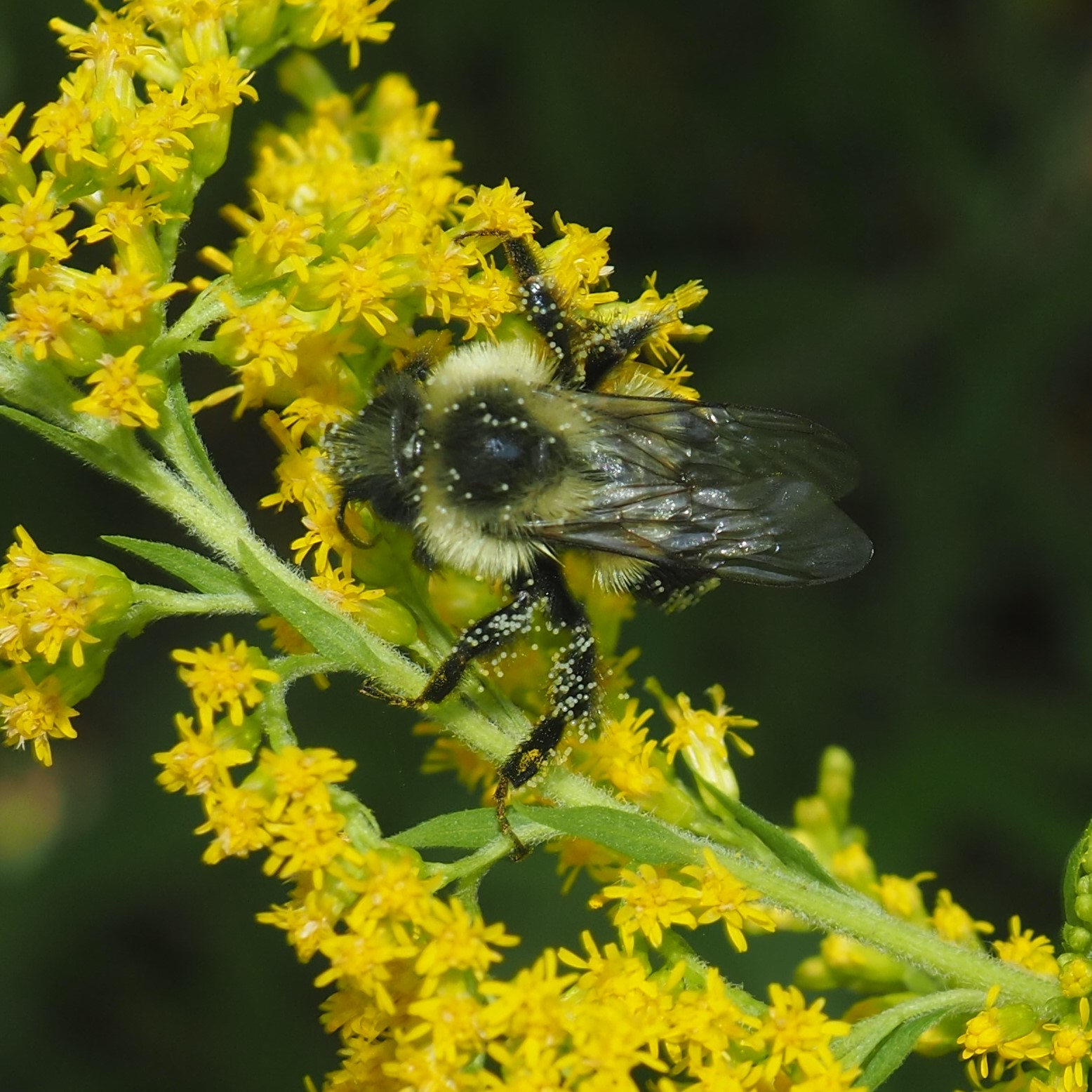
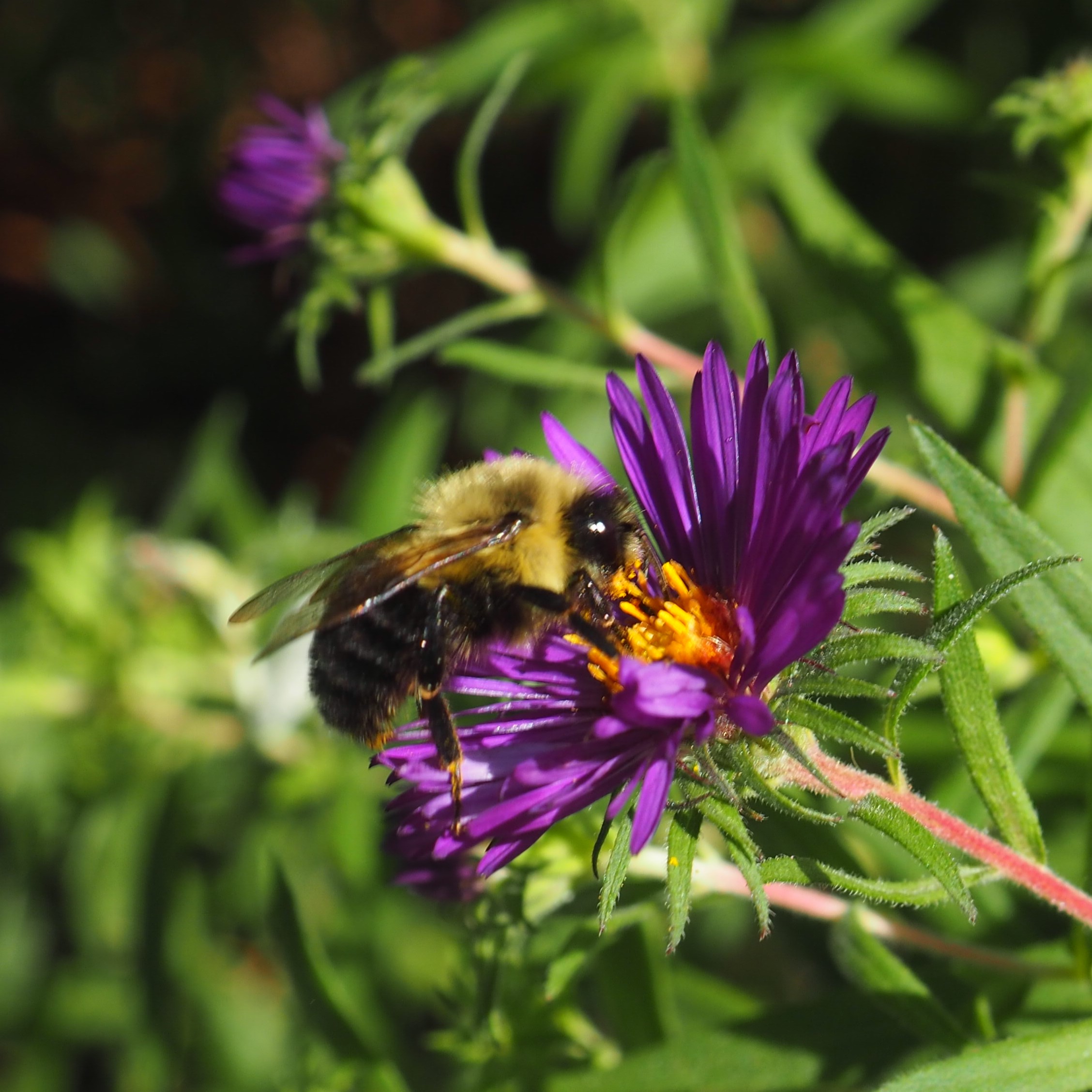
How about Beetles? There haven't been too many on the North and West Walls lately, partly because those Walls have been so blisteringly hot! Still @Borisb was able to identify this first one to genus Litargus.
Second and Third are the Goldenrod Soldier Beetle and Locust Borer, respectively.
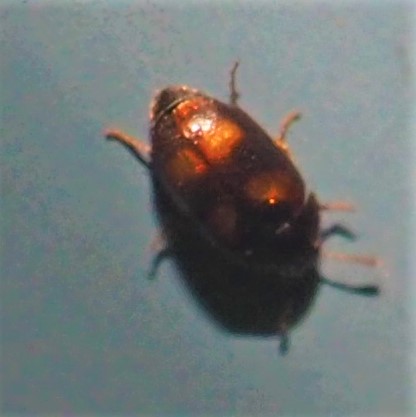


Now to the Bugs. I'll start with the Assassin Bugs out of habit, and then you'll see the Ambush Bugs. This first one reminds me of the squat in the Mikado's entry song, "A more humane Mikado never did in Japan exist."
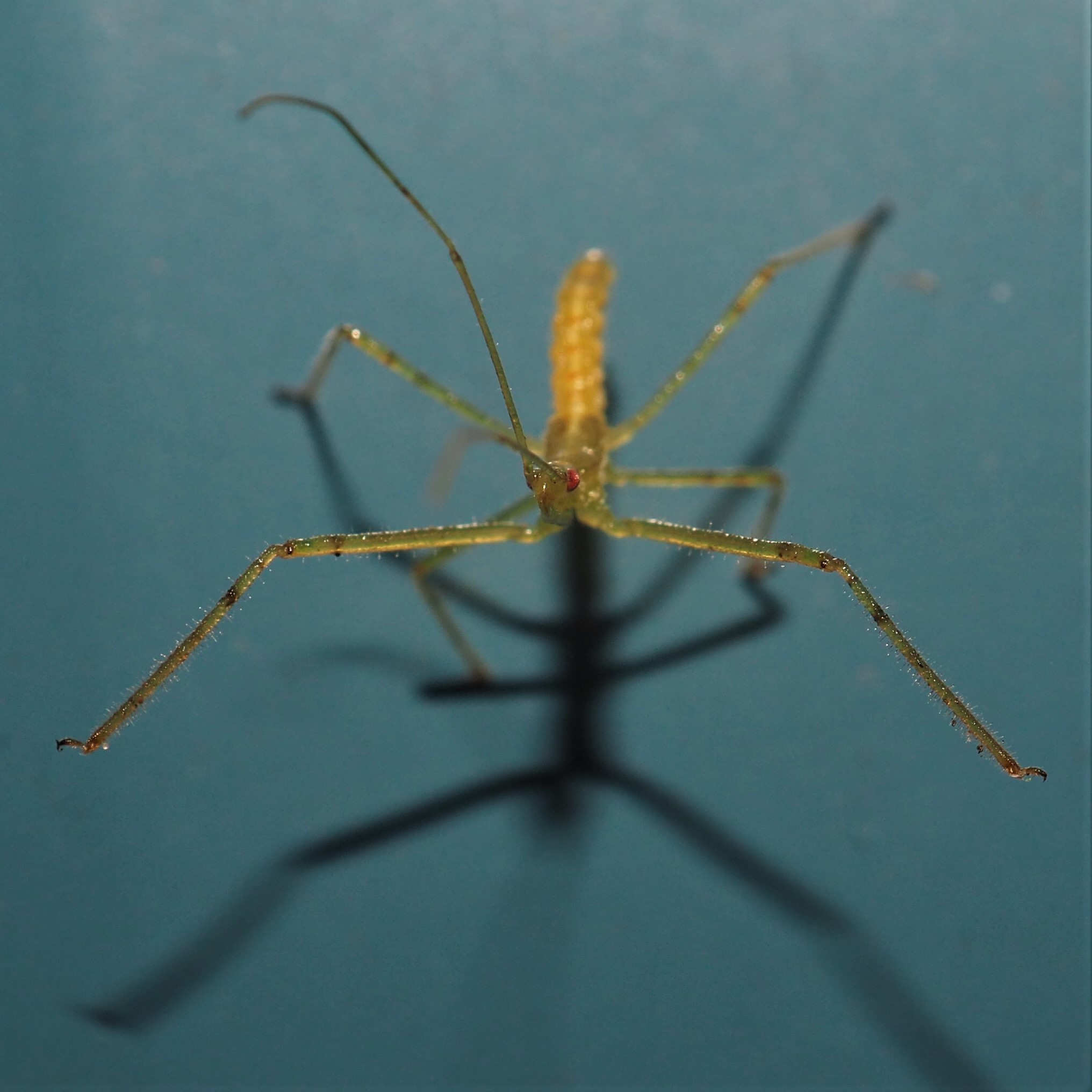
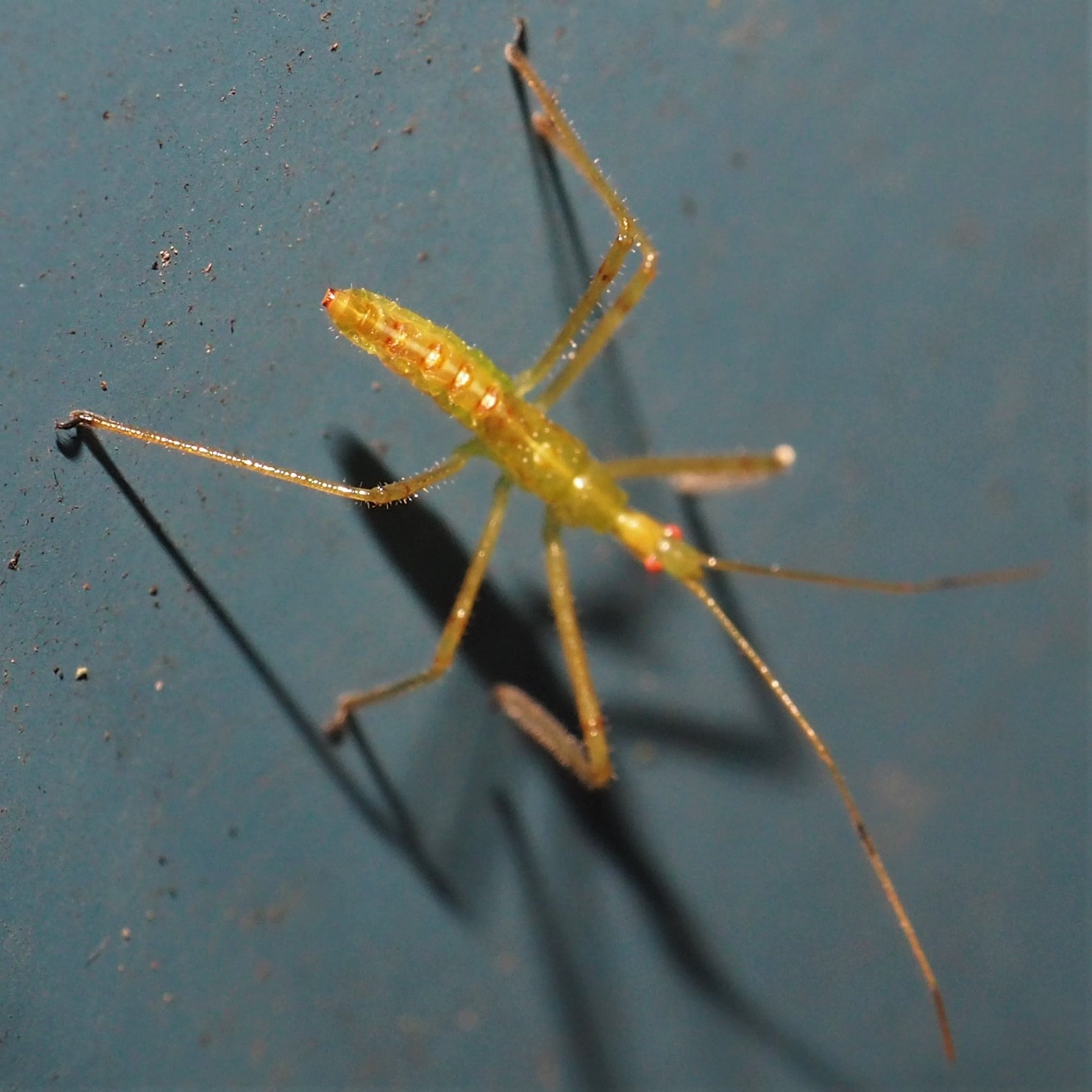
But my seasonal fascination is for the Ambush Bug.
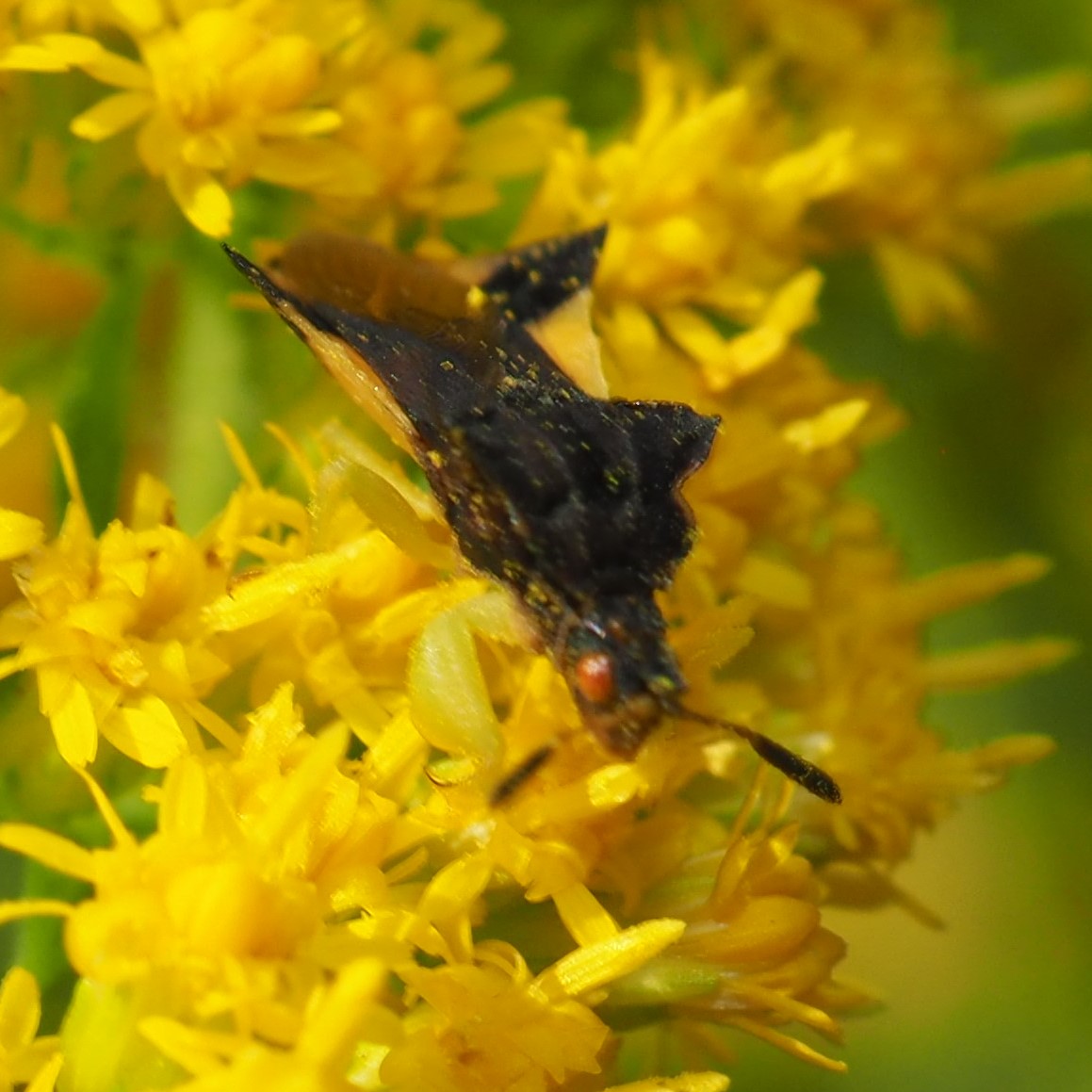

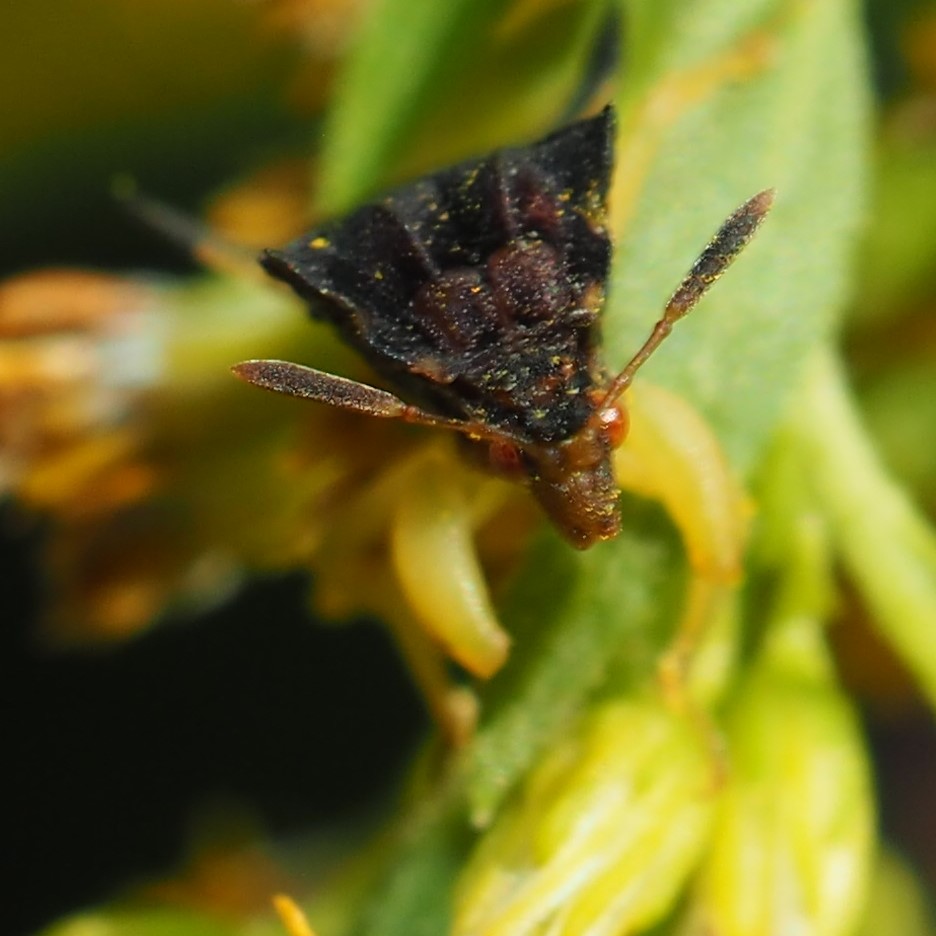
It has been a slowish season for Leafhoppers, but here are some that we did see. First and second show the lovely Erasmoneura vulnerata. Third is one of the genus Eratoneura.
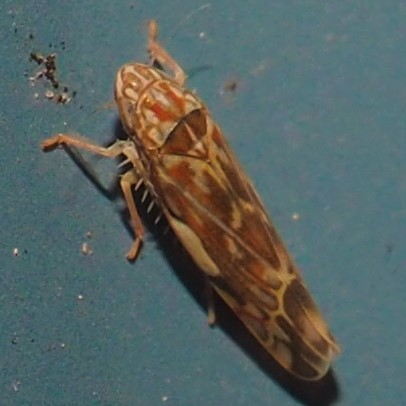
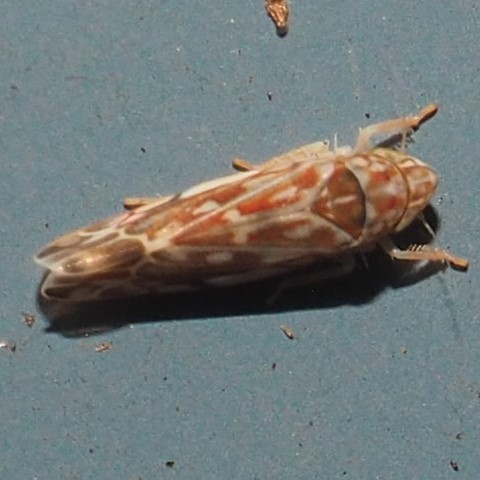

For some reason, we suddenly got TWO species in the Erythroneura genus They are (first) E. aclys; (second) E. infuscata. Third is Jikradia olitoria, the Coppery Leafhopper.



First off here is a new thing for me. Could it be the nymph of some strange Leafhopper? Next is the Alder Spittle Bug.

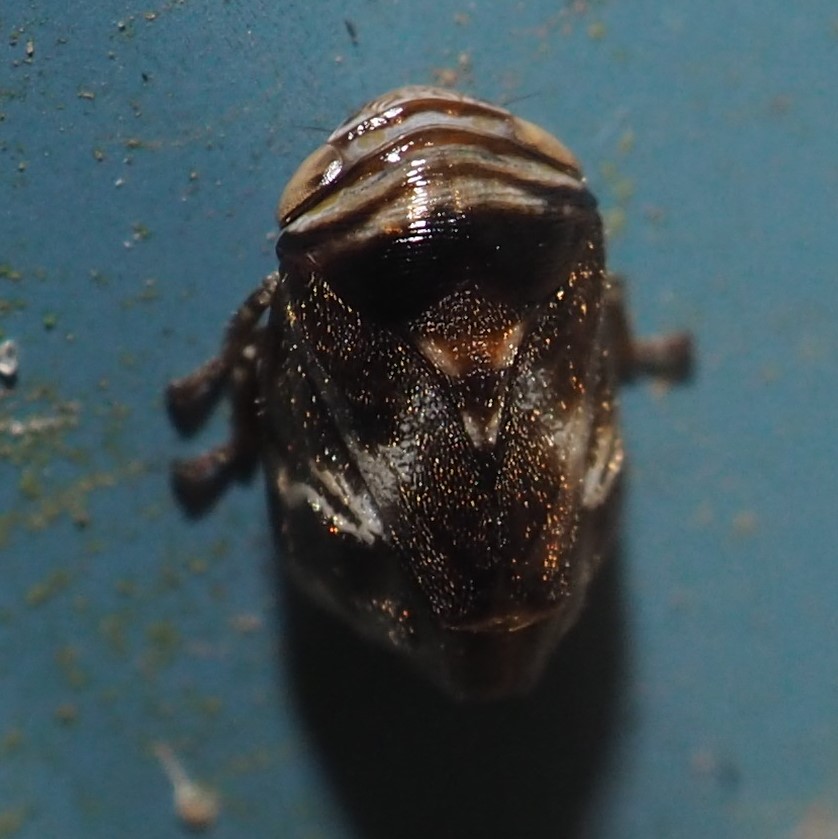
Here is a late instar of a Bug that I thought was going to be a Rough Stink Bug, because of the red veins. I've been waiting to finally see the last instar and an adult.. But Andrew Meeds of iNat and a few other people who are Stink Bug experts pointed out that this is actually a late instar of our beloved (irony!) Black Marmorated Stink Bug, or BMSB! All the other Stink Bugs seen here lately have been Dendrocoris humeralis!
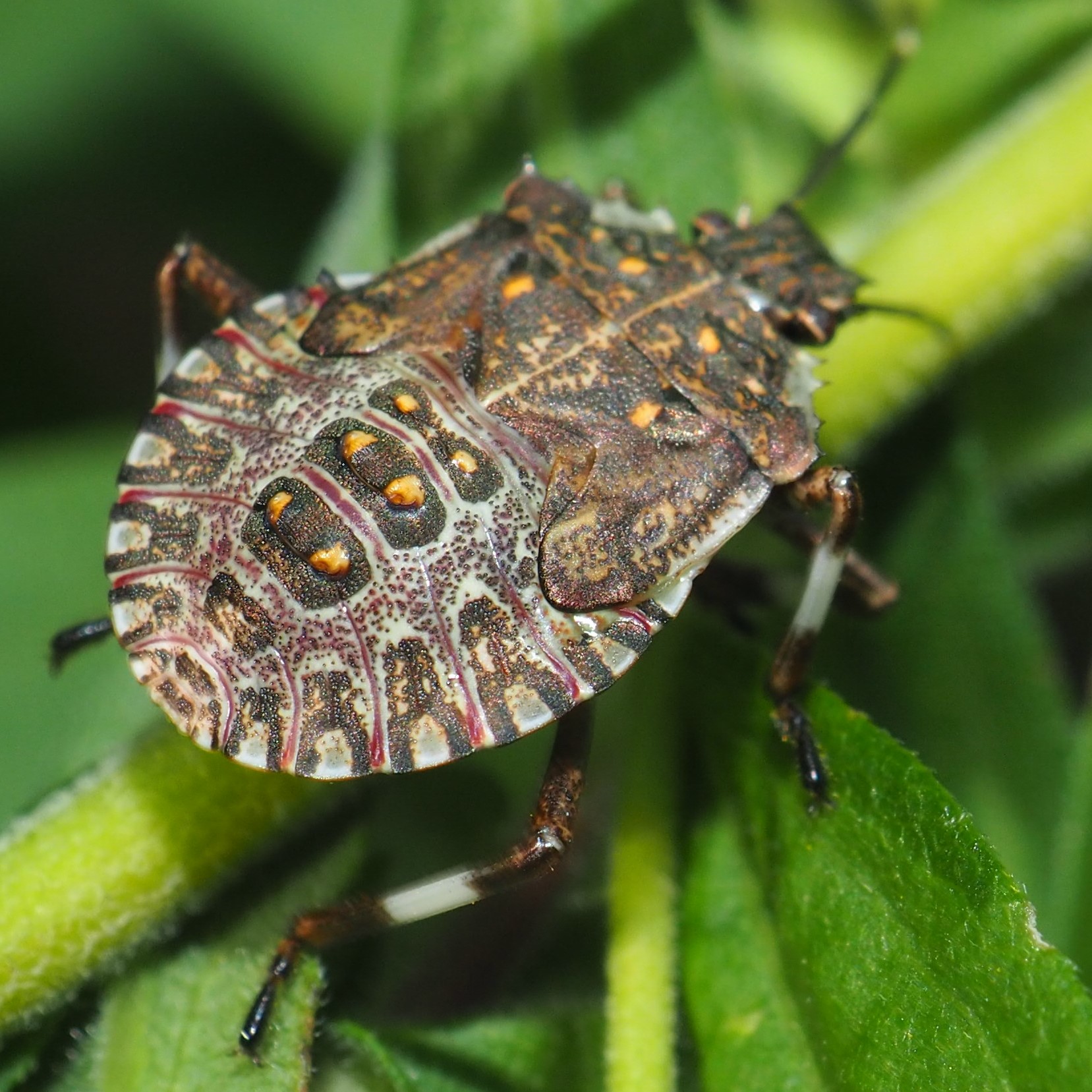
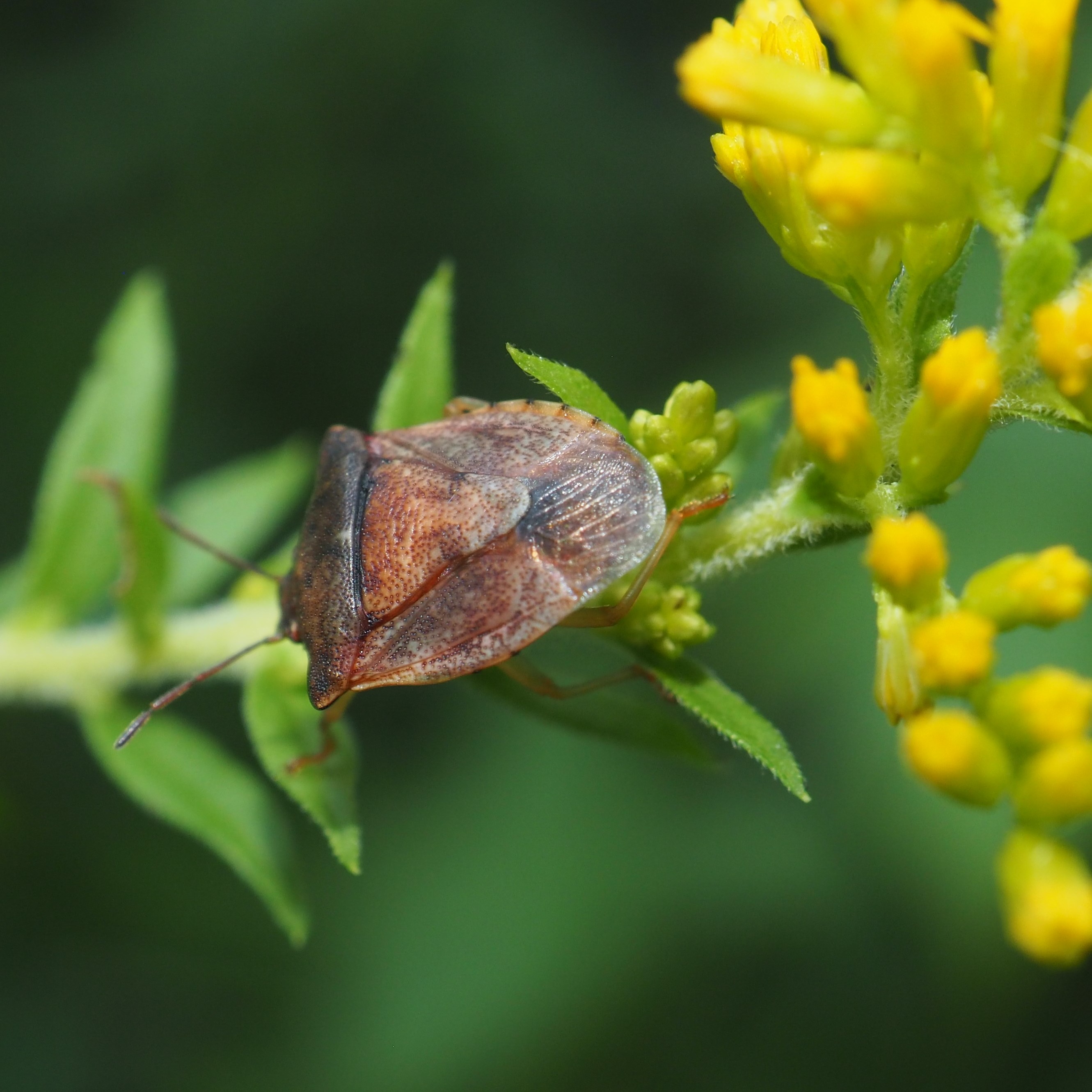
On our way from the Bugs to the Flies, we pass the Earwigs, and here is one for this week.
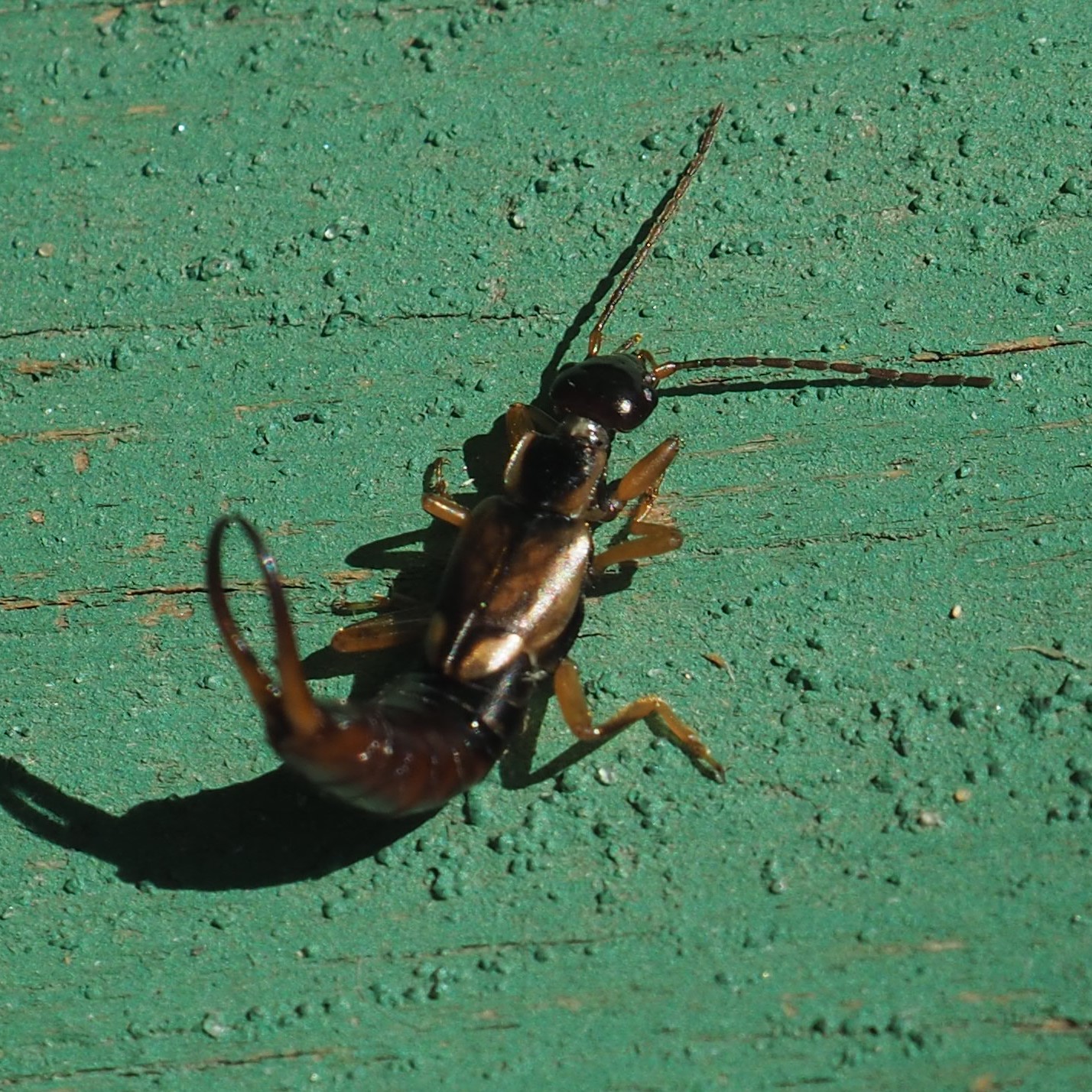
Now I have got to tell you the sad story of what happened to our beautiful Pond yesterday. Let me preface this story by repeating that I've wished the water would suddenly clear so that I could actually see the bottom and find out if those lily corms that I planted a couple of months ago were alive. Well, after this thing that I'm going to tell you happened, I was able to see clearly all the way to the bottom of the Pond. What had happened was that our friendly neighborhood Raccoon had found out how to disassemble the hosing that pours water back into the Pond, and move the business end of the hose so that now it poured water out onto the ground instead of back into the Pond. The bottom of the deep end only held a tiny bit of water and I could only see one of the larger Red Goldfish thrashing about in the muck. I quickly decided not to even think how much the water company was going to sock me for next period, replaced the hosing, and turned the water on at the outside tap and set the hose to full strength. Here you see the pond about half-refilled.
You can see the lily pads stuck to the sides waiting for the rise of water to reinstate them on the surface. The little creature huddling in picture 2 is our little frog reenacting its panic as it kept trying to grip the liner and climb up out of that pond. Picture 3 shows a little frog relaxing after all the rising water on one of the lily pads.

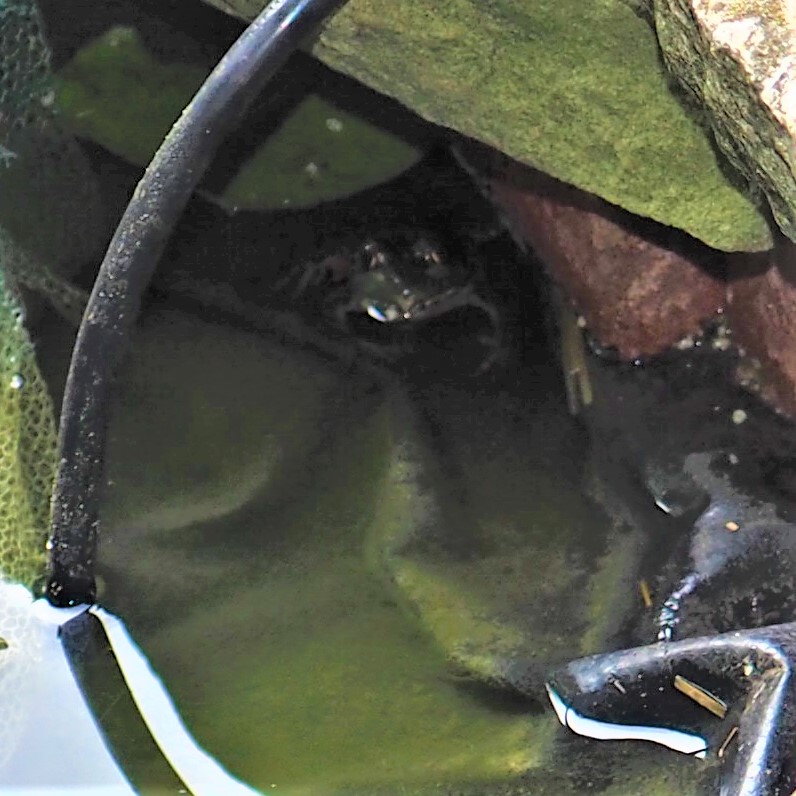
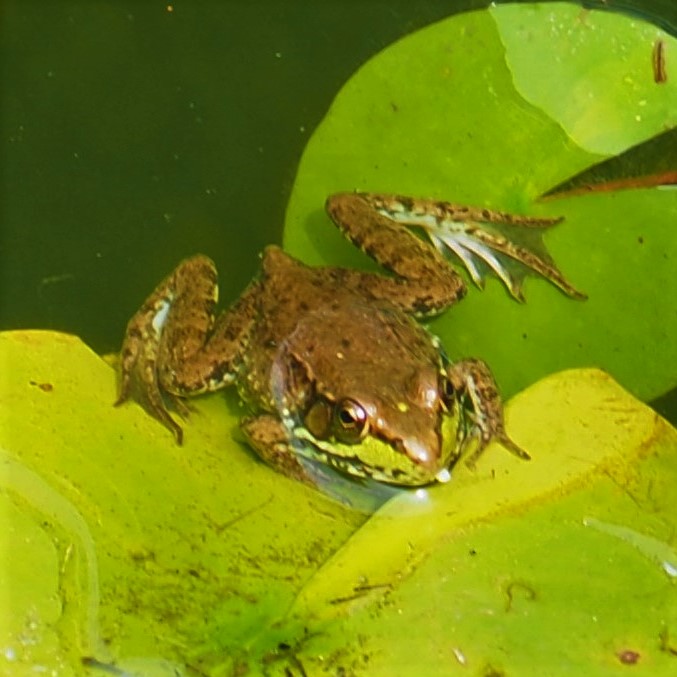
I got one of my fervent wishes and that is that I could see that of the three lily buckets that I'd finally gotten to stay down there, only one had a very few 6-8 inch floppy stems lying in the bucket. None of the other three lilies had even got started in two months and are presumed dead. The other ones (that I put in at the beginning of summer in the shallowest part of the pond) still only have pads floating on the top of the water (when the pond is full). But those pads started out at about two inches across and some are now up to six inches across. I think those lilies will survive till winter and hopefully have enough growth to survive the winter. It took about two hours to fill, but by some miracle (that being that the exhaust pump did not reach the bottom of the Pond), suddenly way down there I saw the red goldfish start to swim. Then another, and another, until finally: ALL the fish that I know by name were swimming in the cloudy water from the mixture of sludge to clean water. They were also ready for their breakfast, having just spent the worst night of their little lifies. Here is the pond refilling. And a couple of scenes of a few fishes eating after their drowning scare. I love how the sunlight filters boldly into the picture as if the fishes have been resurrected after a real brush with death.
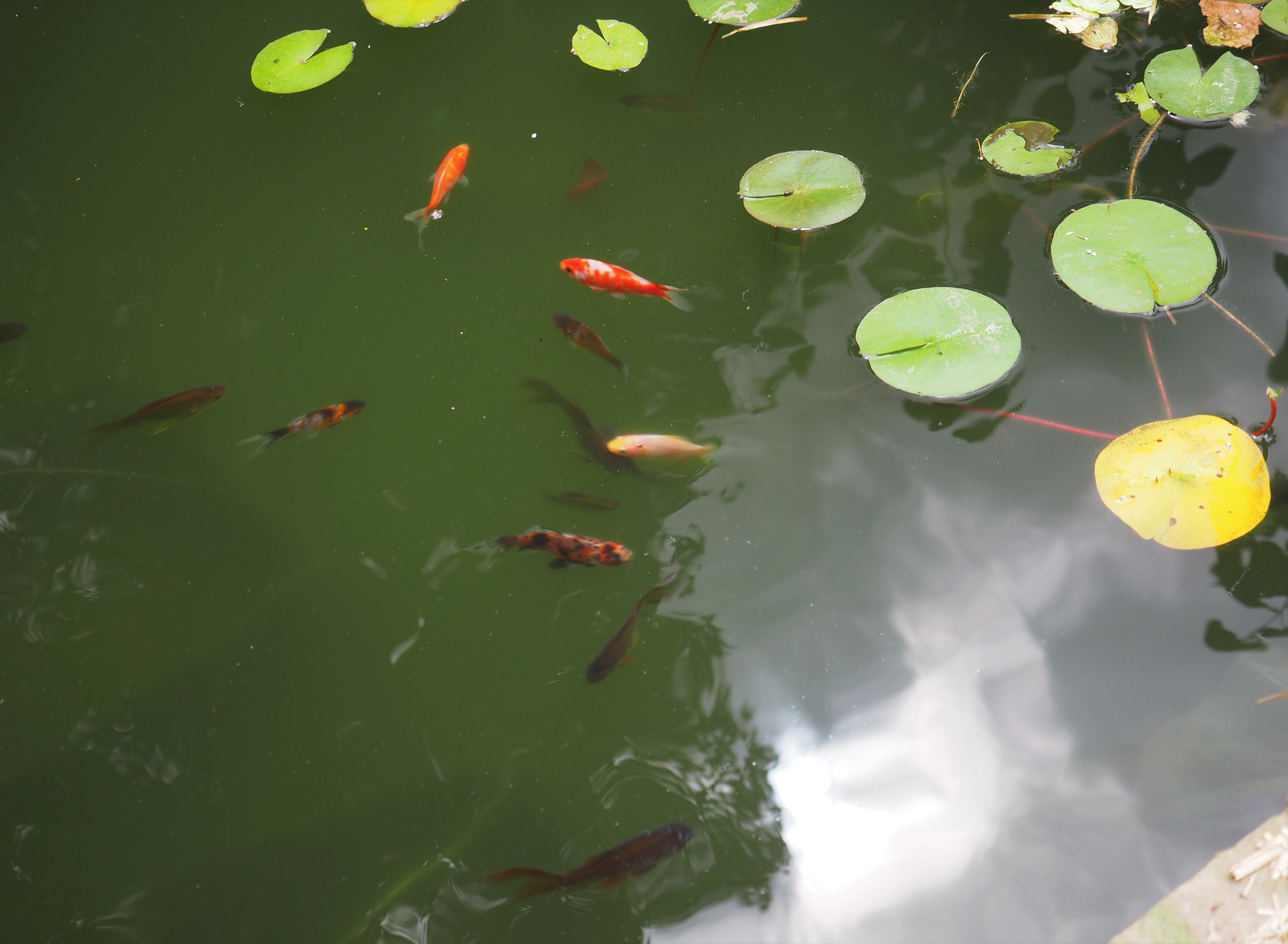

Here is a short clip showing the fishes eating voraciously while swimming in their new pond.
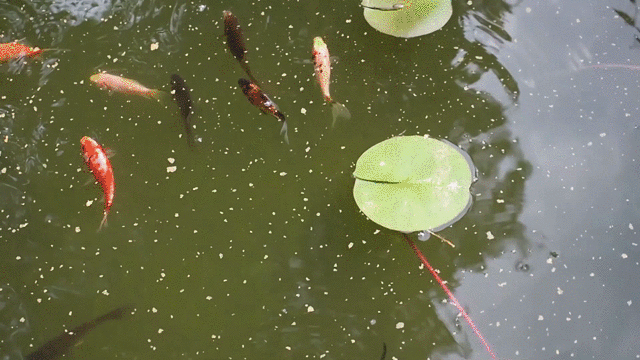
So now my plan is to go down at about 10 pm and unplug the pump so that even if the 'coon plays havoc with that hose, it won't be able to drain the pond again so easily. I then get up at 6 or 7 after a lousy night sleep-wise and replug it after beddy-bye time for the raccoon[s]. NOW! I do have some pretty Fly pictures to show you. Here is a very nice Tiger Crane Fly. Then a typical Gall Midge. Last is a Fly that looks so much like a Common European Green Bottle Fly, but it isn't greenish-blue like the one you saw last week. This one is called a Common European Green Bottle Fly. Isn't that just something an entomologist would do? It's true though.
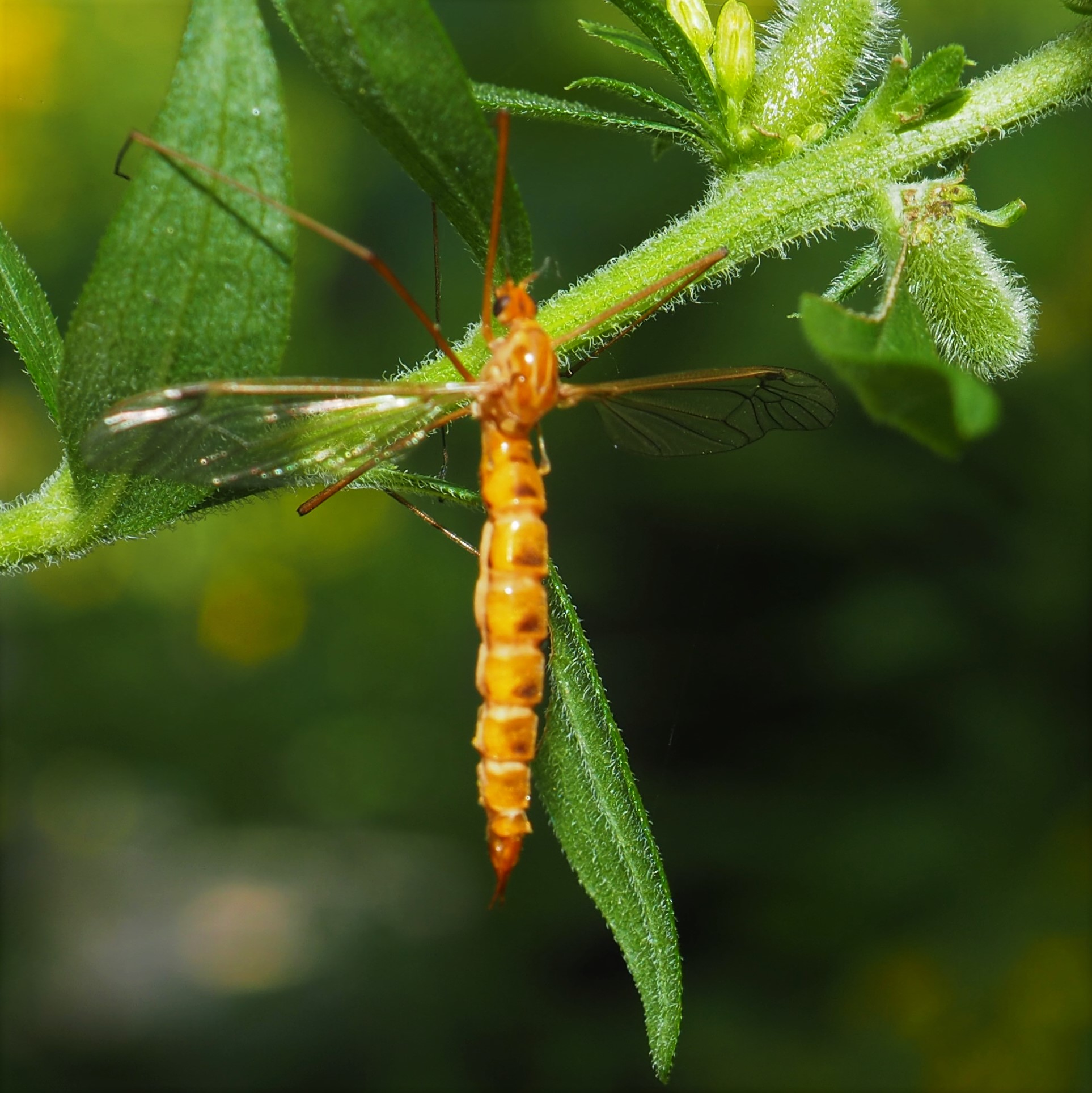
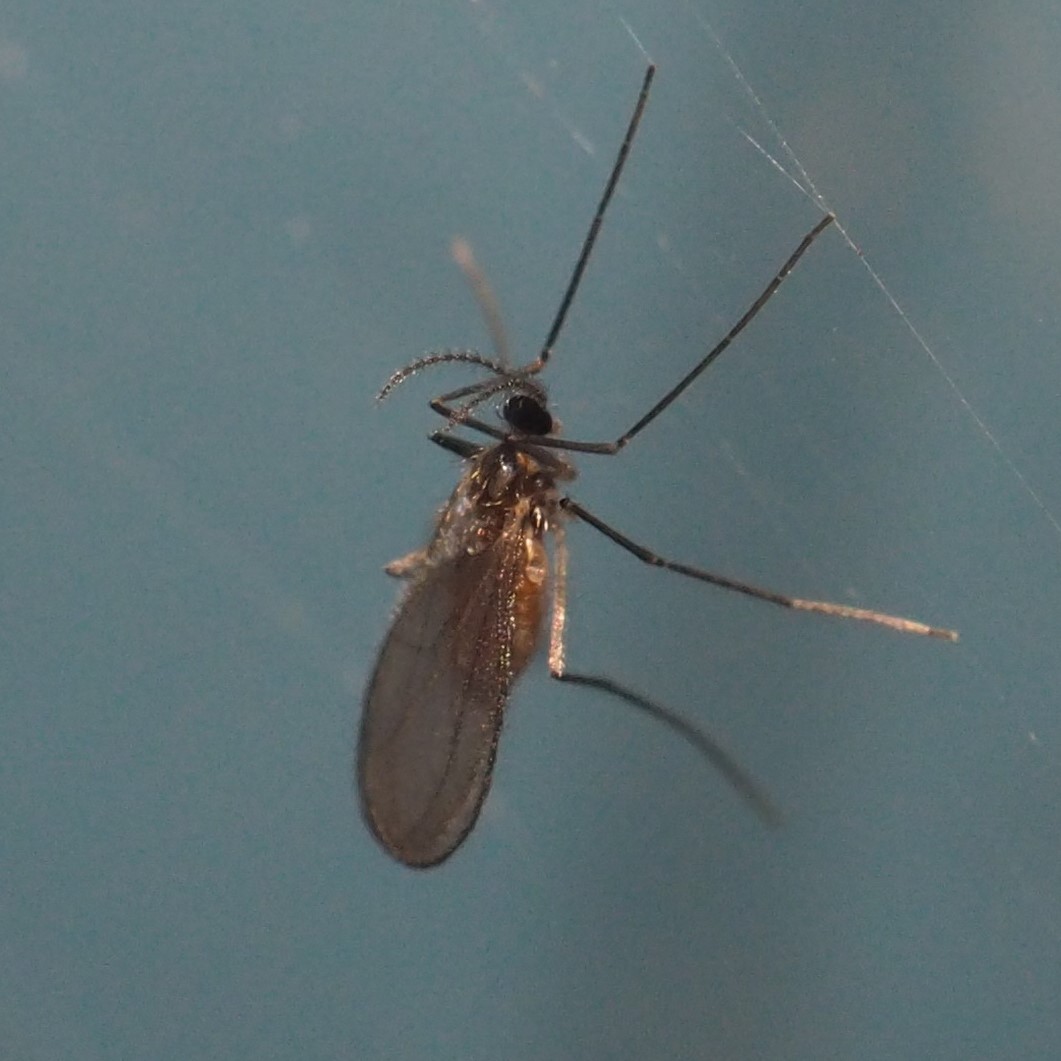
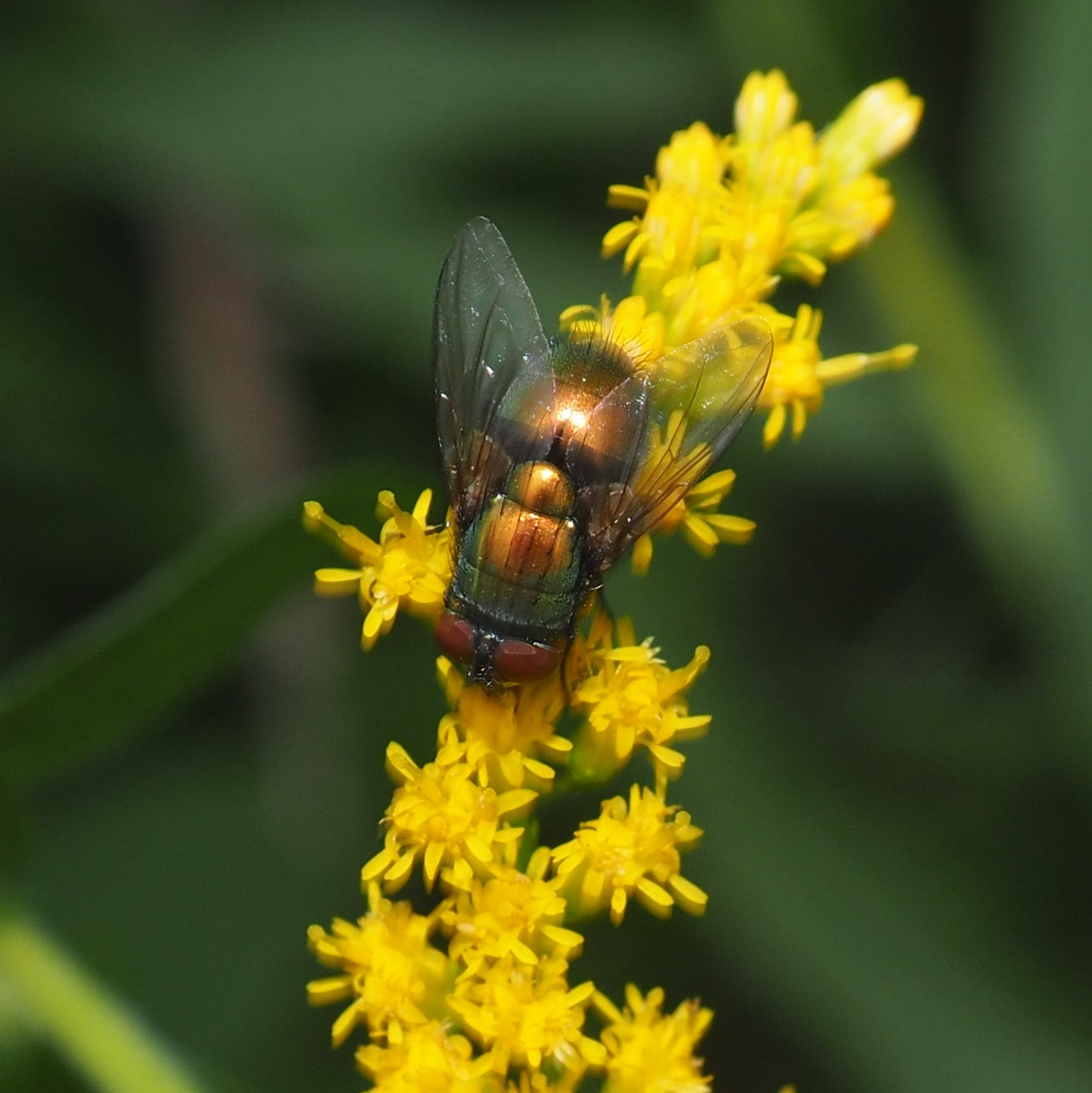
We had quite a few Hover Flies. They really do hover in the air while deciding which flower must have the juiciest nectar. This one is the Thick-legged Hover Fly - look at the muscles on those legs! Next is one that really is a tease. While hovering in the air, its abdomen seems to be banded with white on black or vice-versa. But when it lights that patterning is almost completely obscured by the wings. Flash! It is also a Thick-legged Hover Fly. In picture 3 you can also see the legs are banded with red on black. These things are so complex!

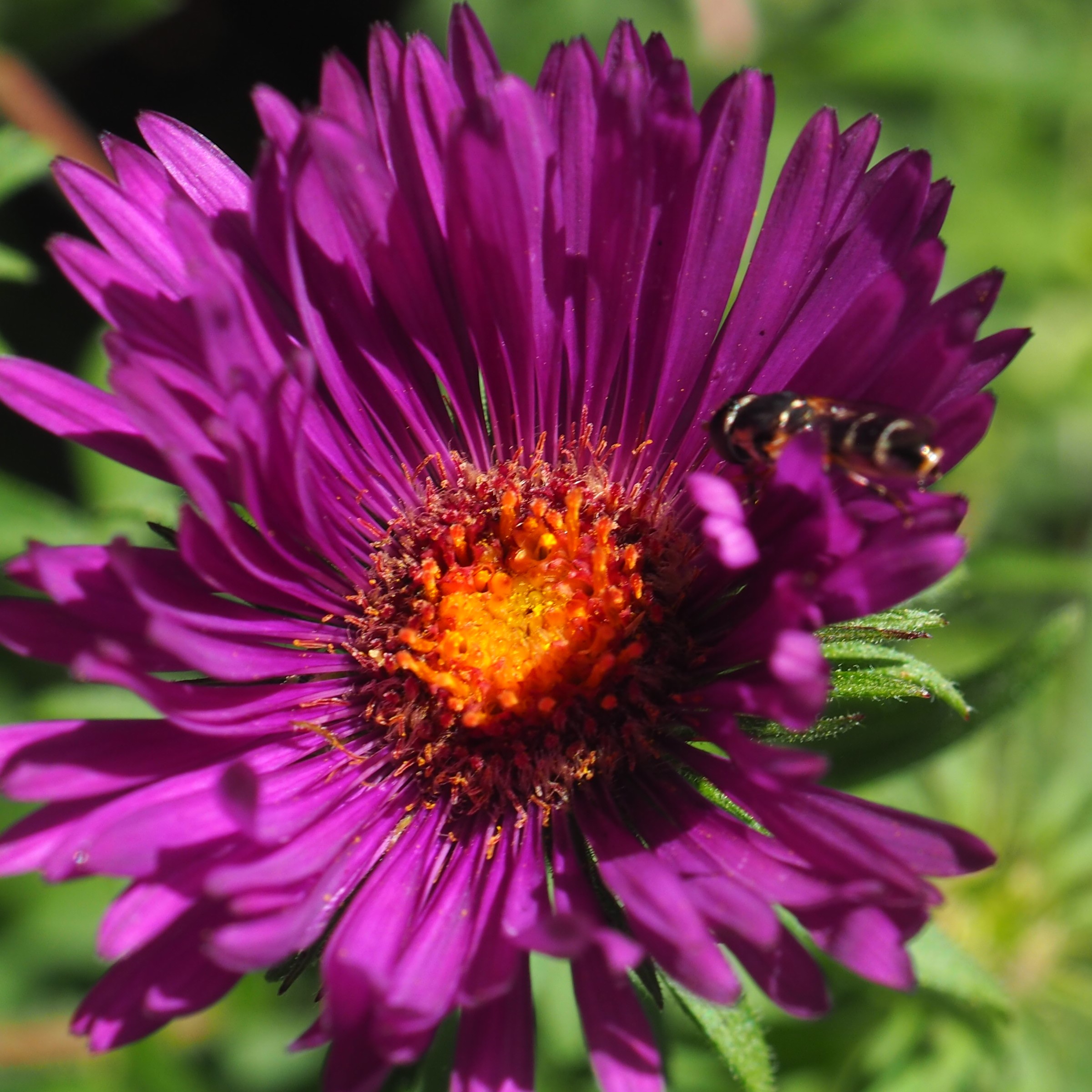
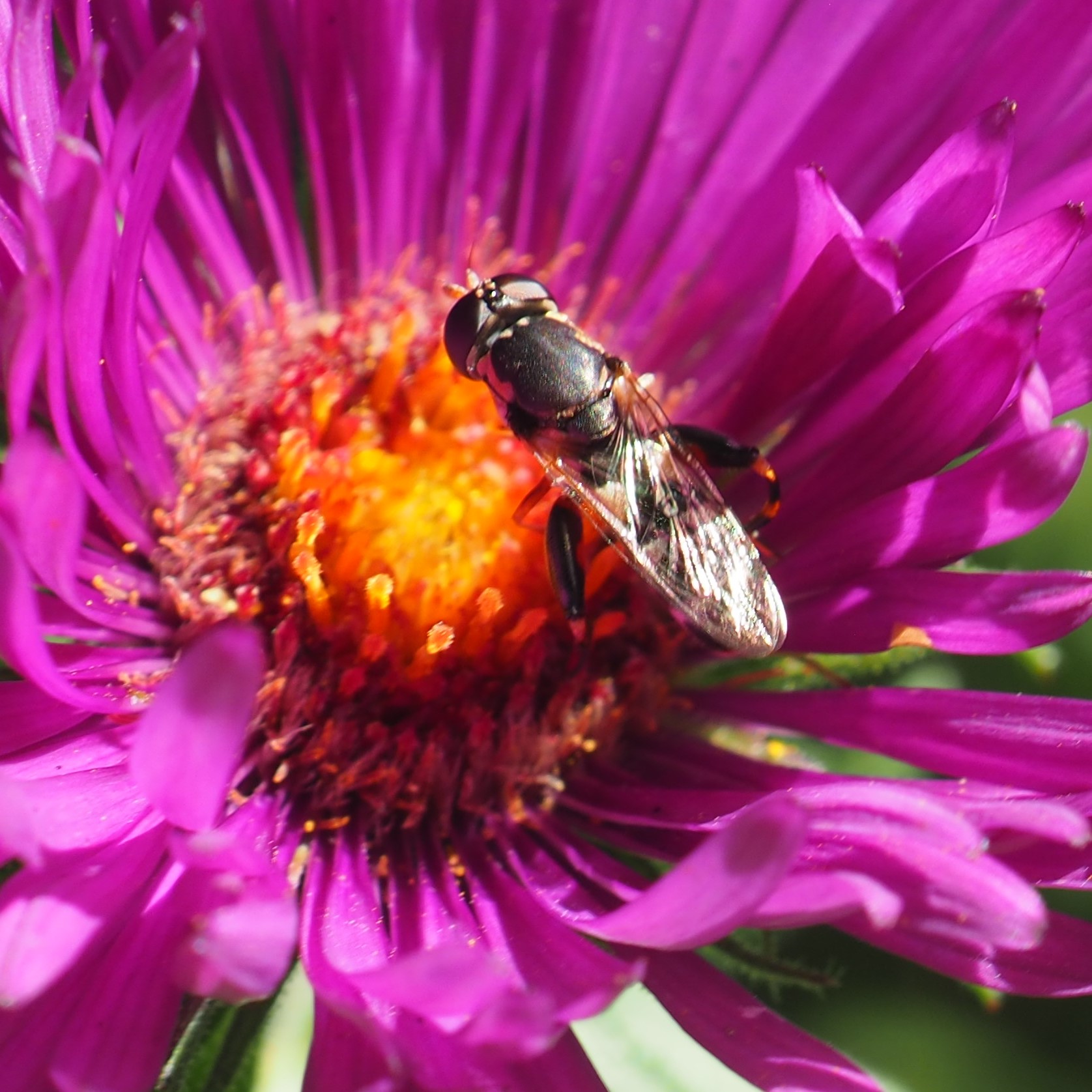
While we're on the Hover Flies, here are a few more. First is most likely in genus Eupeodes. Second is one of the first Hover Flies I ever learned the name of, and that is Toxomerus geminatus. Third doesn't have a name yet, but it does have a habit we should learn. While I was out by the North Wall shooting Barklice, this little Hover Fly came by and buzzed at me, indicating that I should move along. Suddenly it started landing on my arm. And finally it took a nip at me. The next day another kind did the same thing. I was sitting by the Pond and one that had been following me from the North Wall back to the Pond started dive-bombing me. When it also took a nip, I went indoors to throw it off my track. Funny. I've had Hover Flies dive-bomb me and buzz loudly, but never had one bite, even gently like this one. Live and learn!

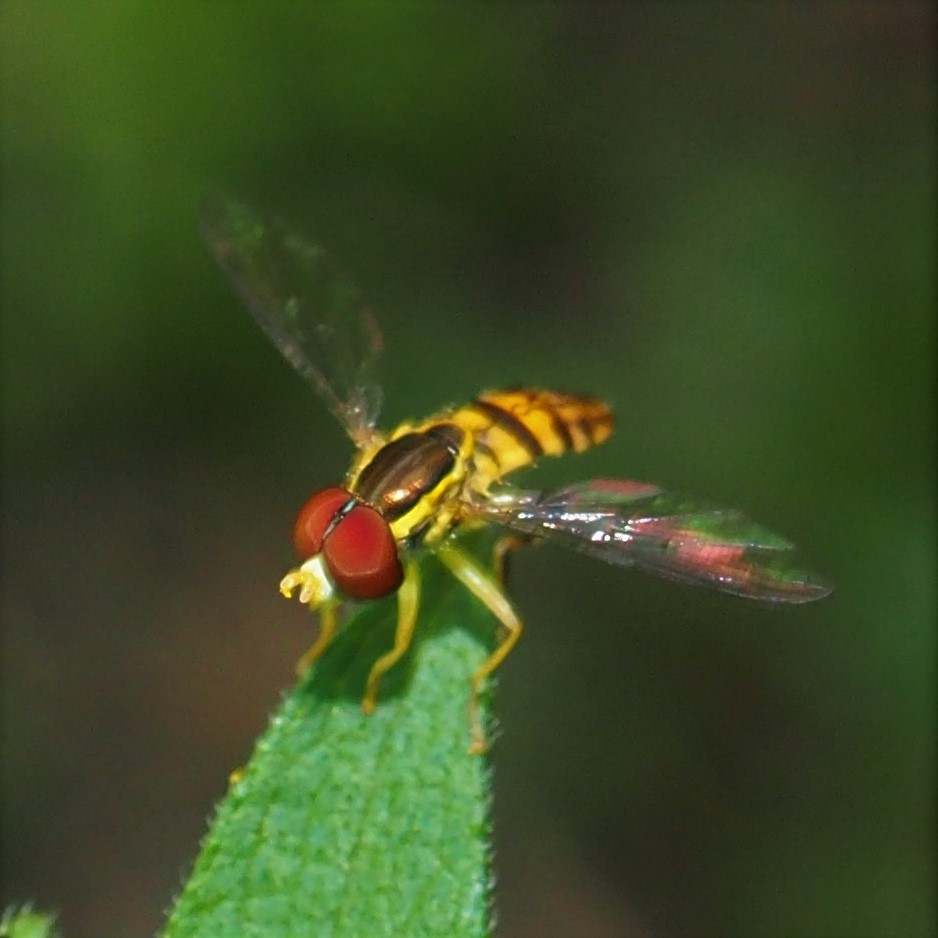
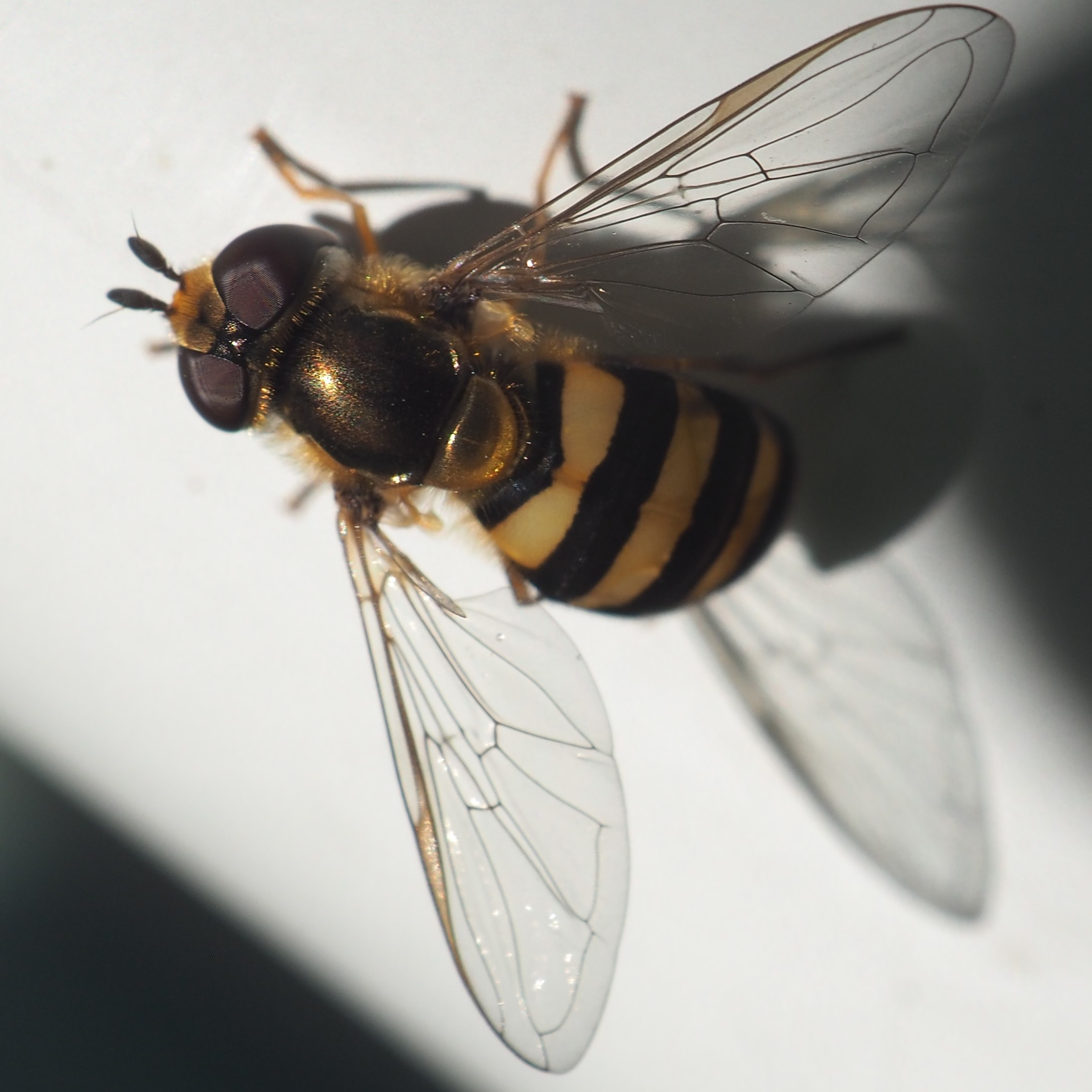
Some Moth Flies.
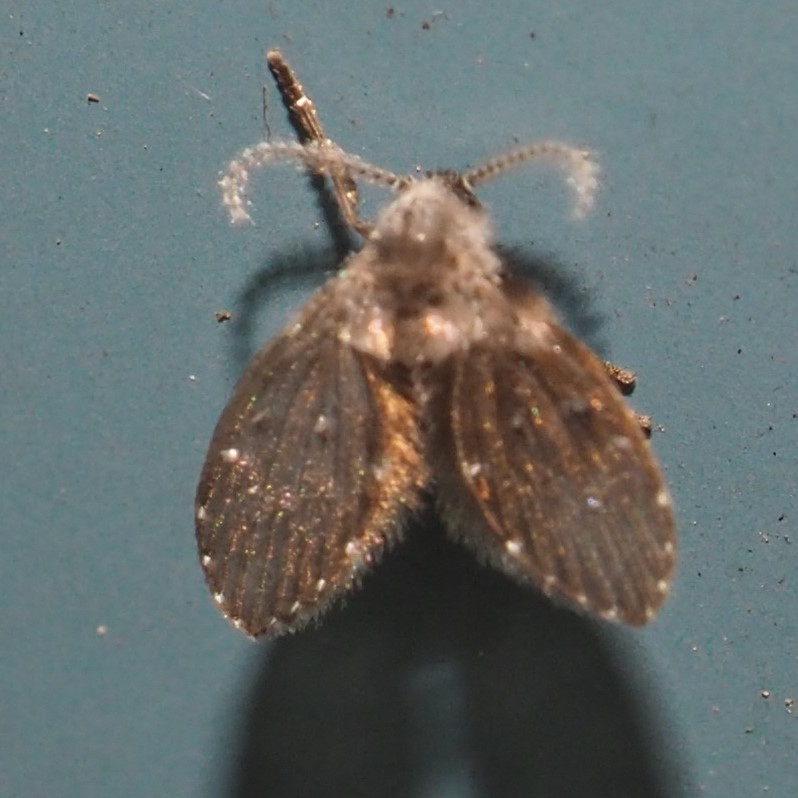
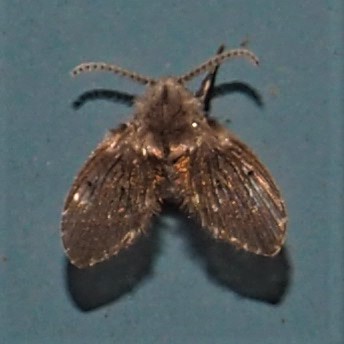
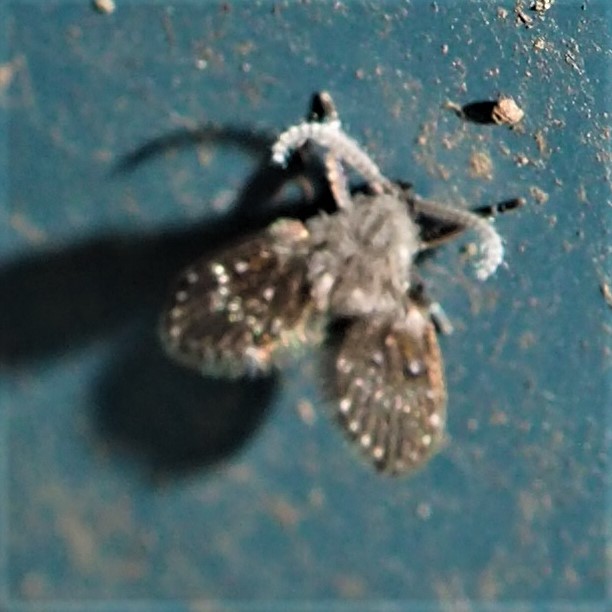
Here are some colorful little Flies. The first looks like one of the Chironomus genus. Second was on Fleabane with its tiny little Daisy-type flowers.. Third may be a Midge, but what a stunner!
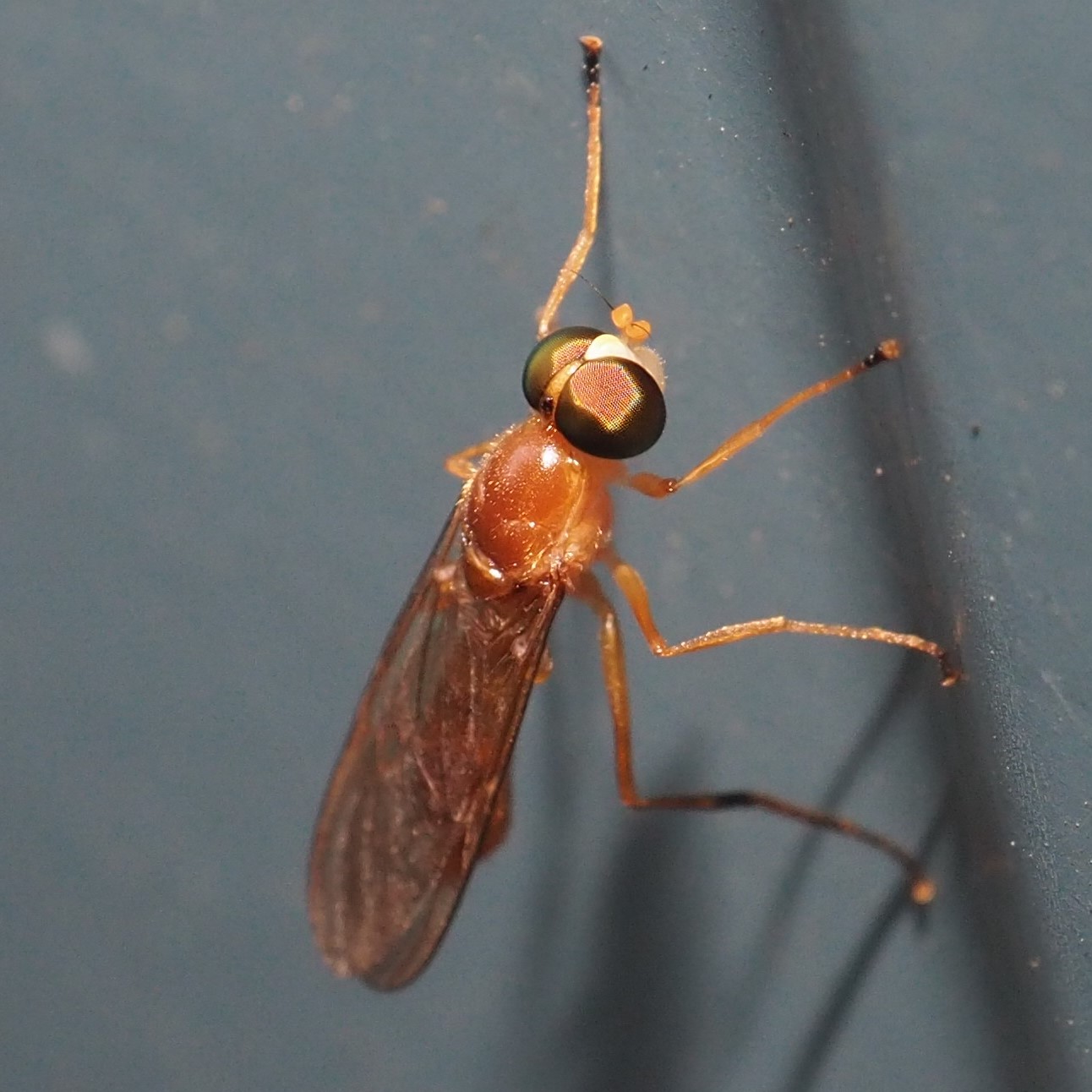
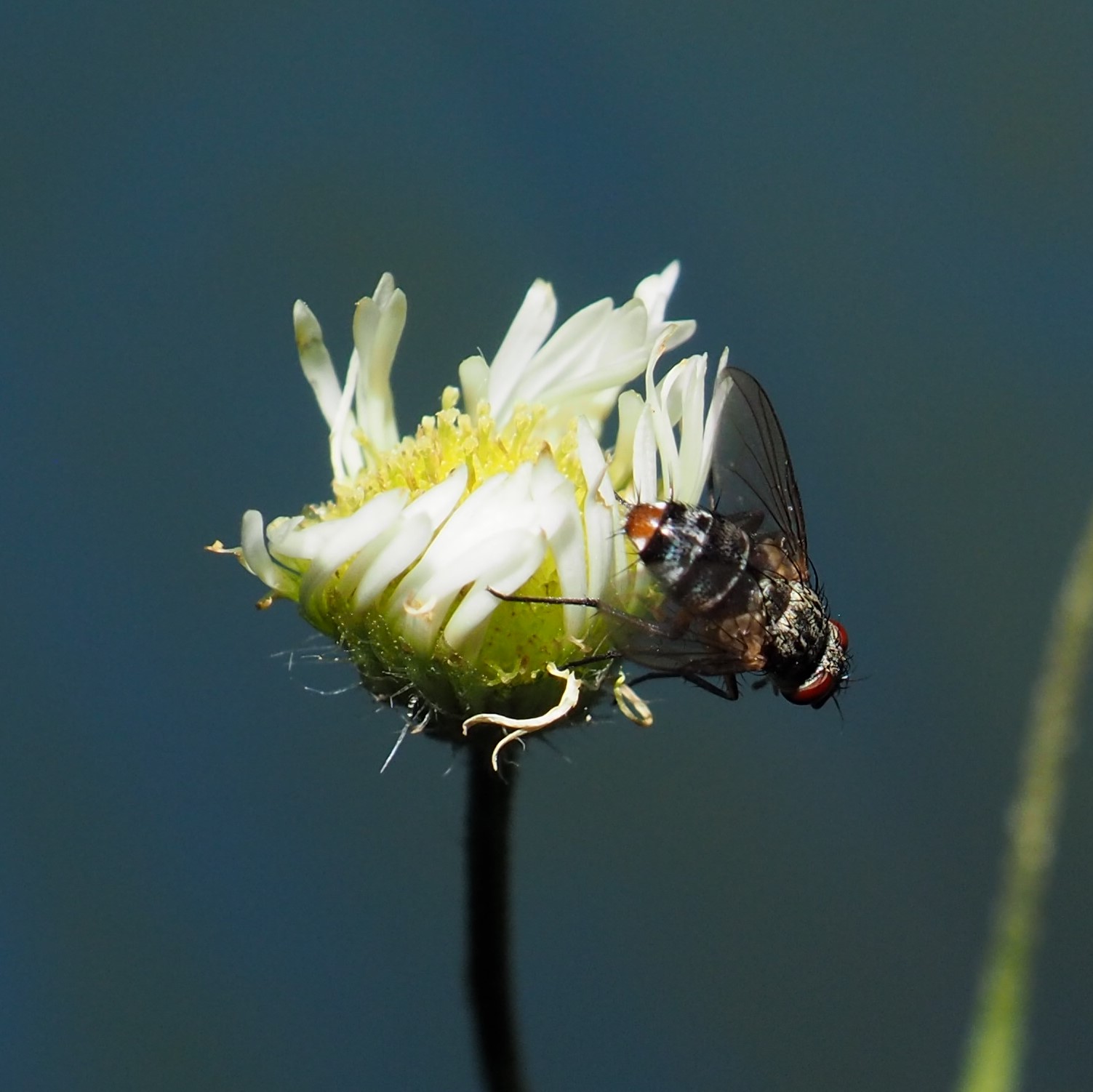
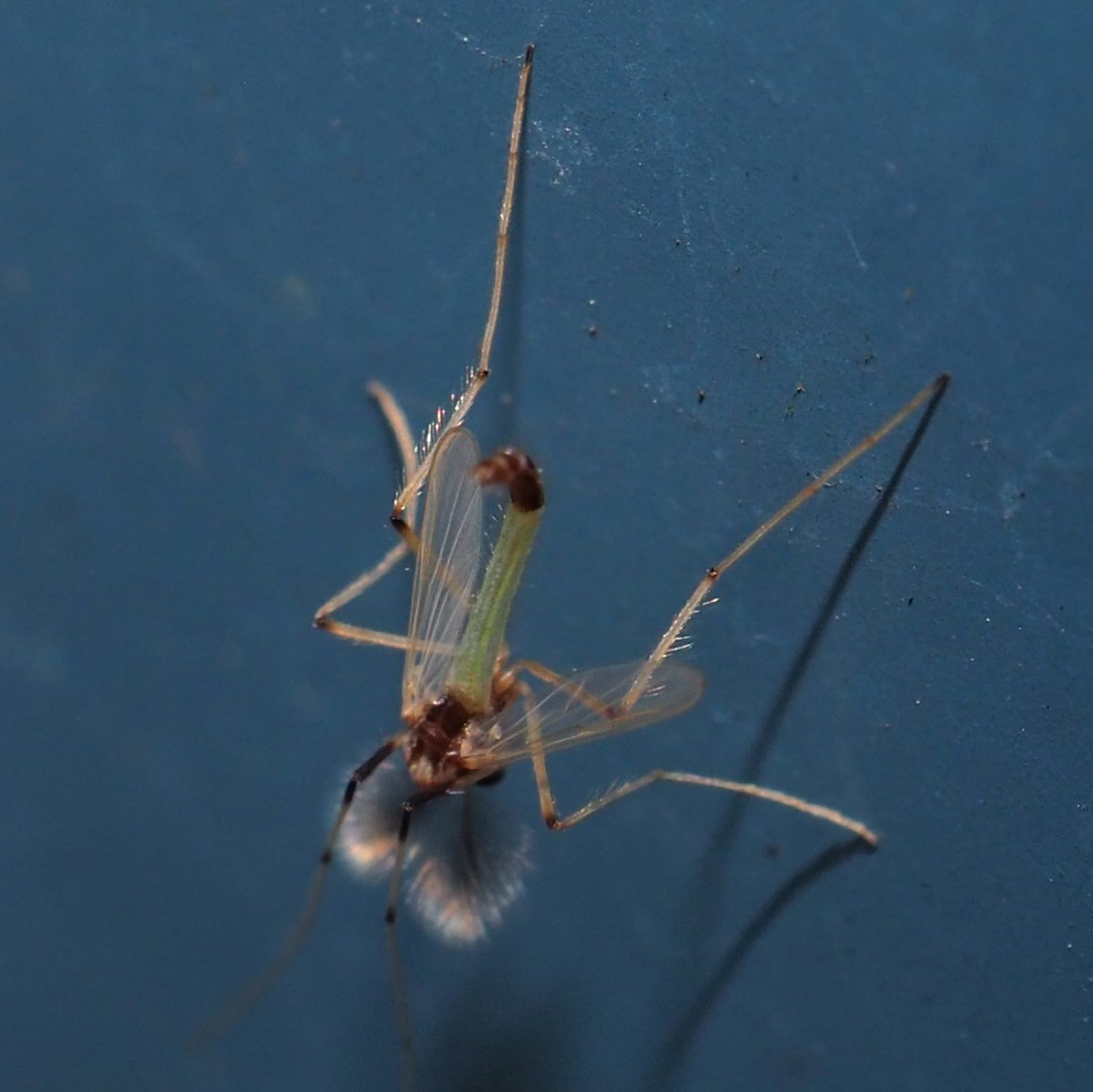
Do you remember last week when we had a couple of Flies that act just like Wasps on the Goldenrod? The one that I thought was Trichopoda pennipes couldn't be identified because of some strange coloration....... BUT this week one day, another that looked just right landed on the Goldenrod in front of my eyes. THIS is Trichopoda pennipes (wingy-legs)!
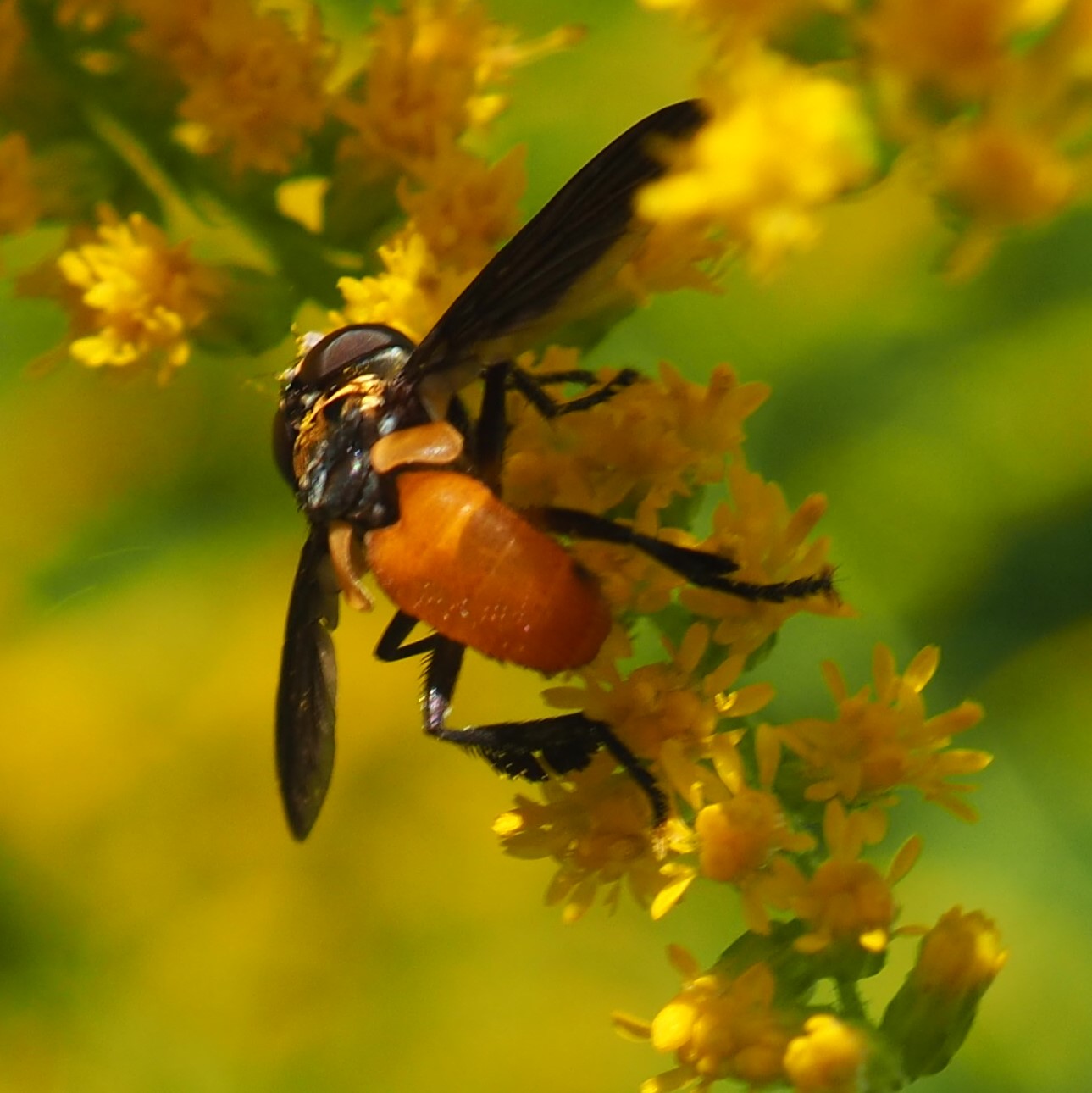
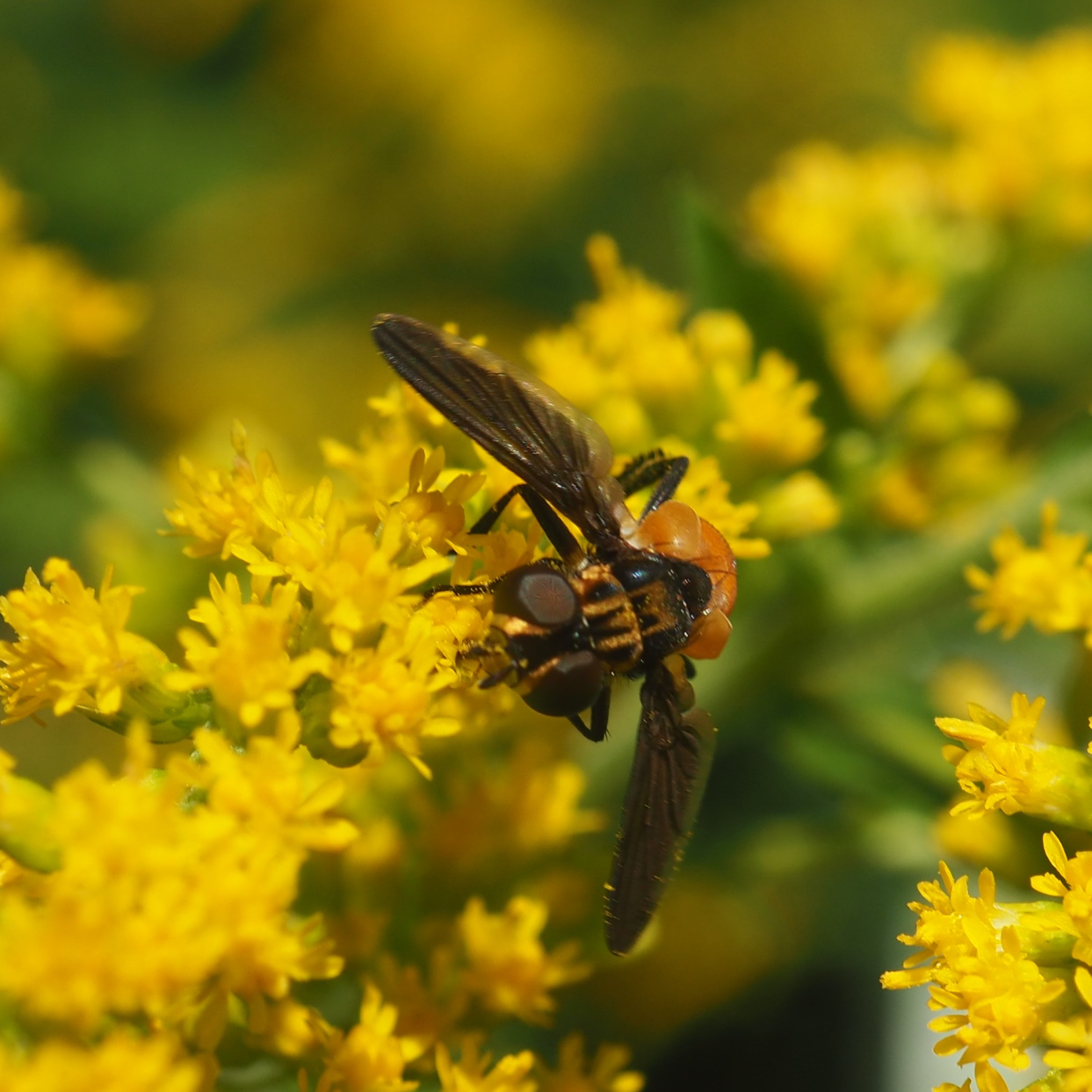
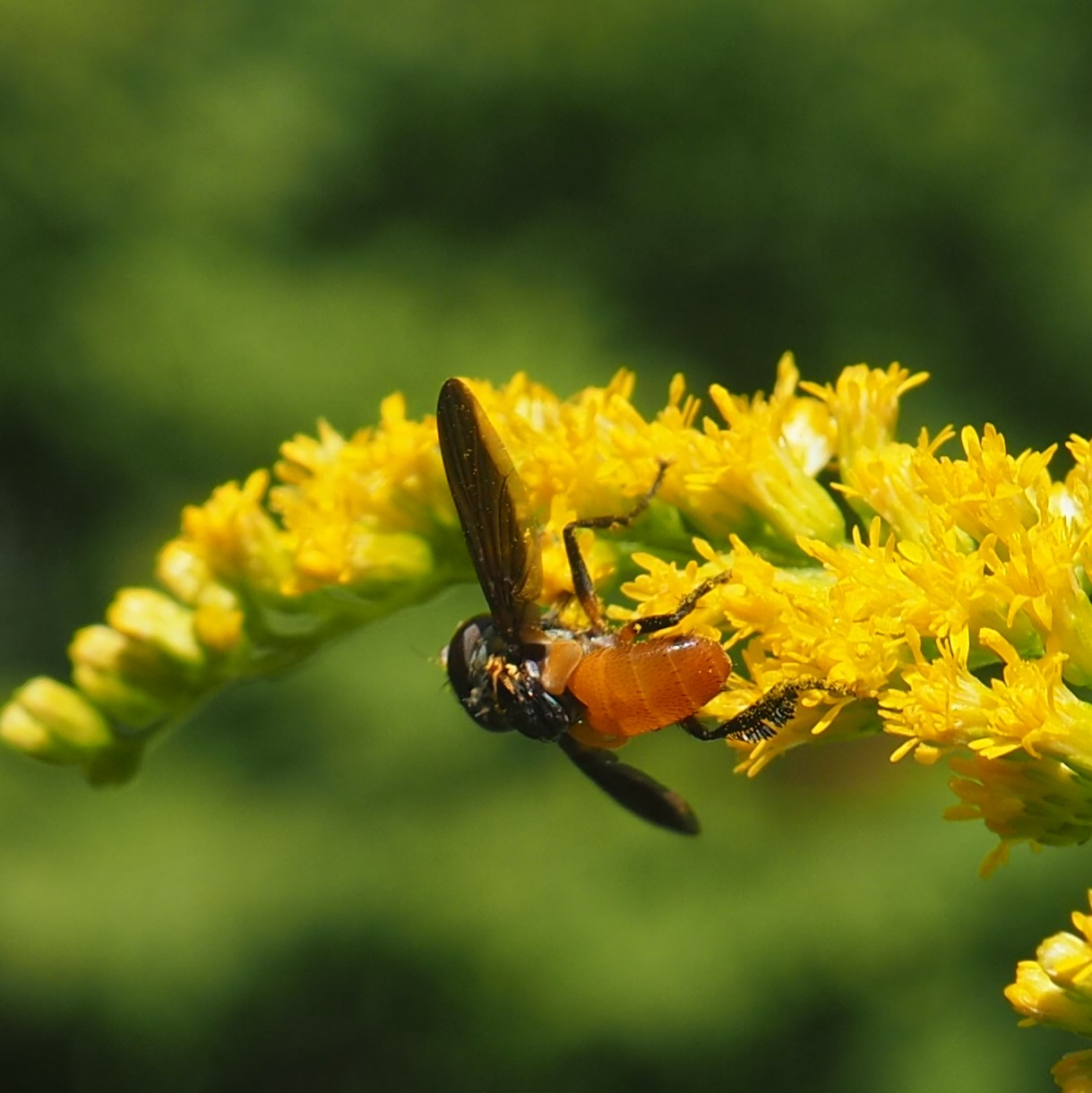
Here are a few little Moths. First is a Meal Moth, Pyralis farinalis. The next one is a Lesser Vagabond Sod Webworm Moth, Agriphila ruricolellus. The third one looks like a Leaf Miner Moth, but I don't know which.
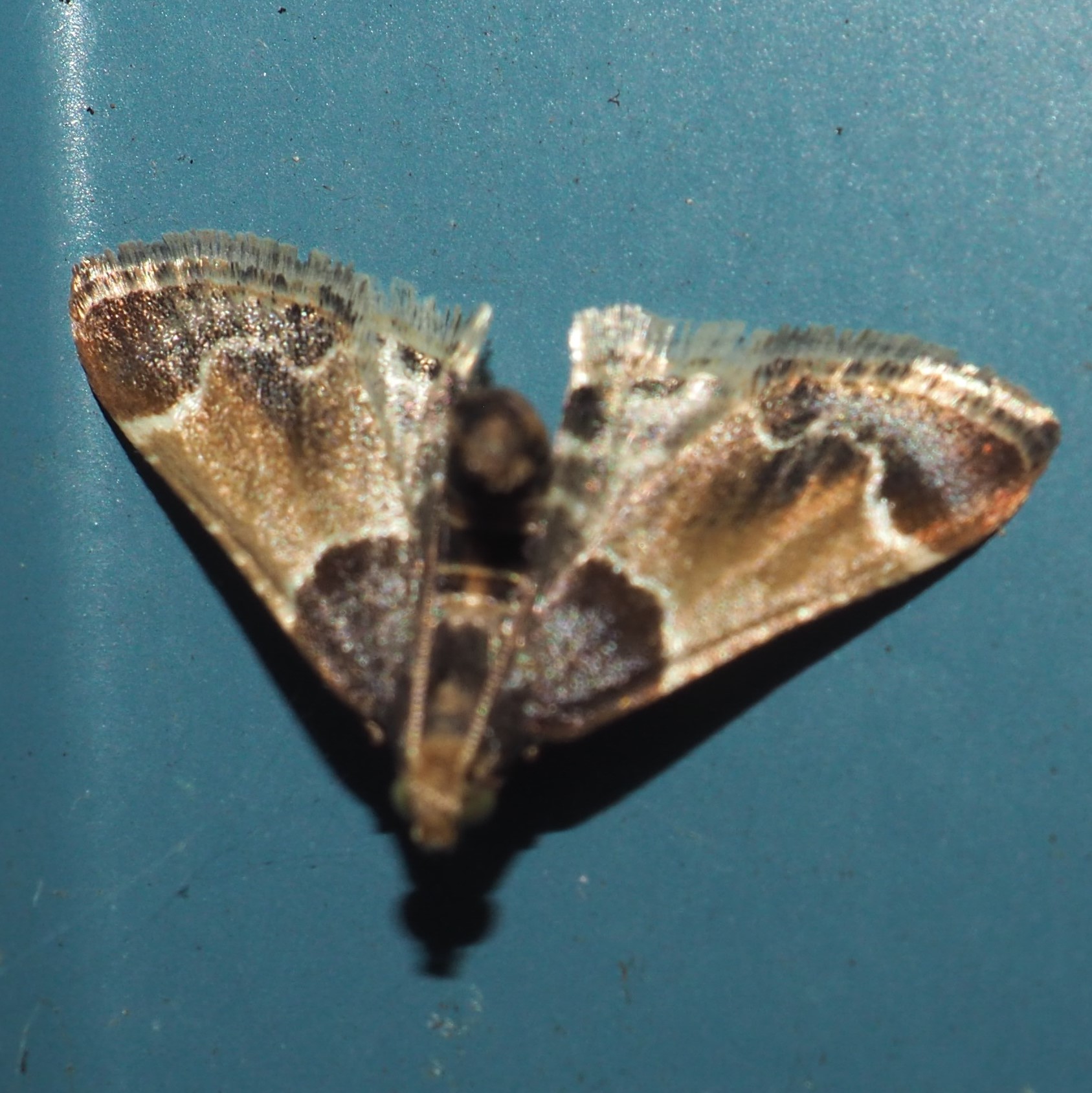
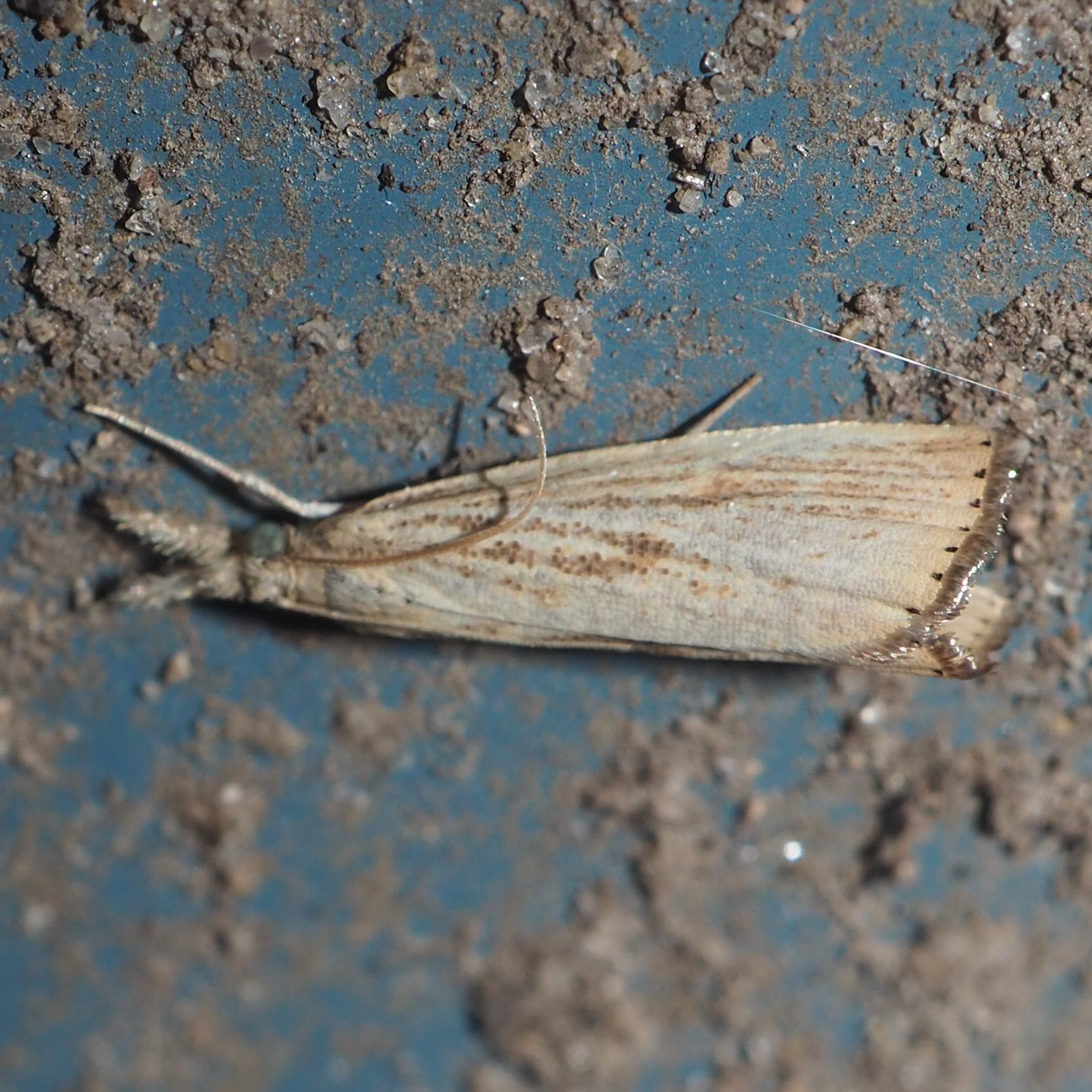

And so now it must be time to walk around in the Flowers. The Japanese Anemone has just started to bloom. This has been the inspiration for a lot of color-morphing (see the end of this blog for some of last year's offerings). Next, some of the different colored asters:
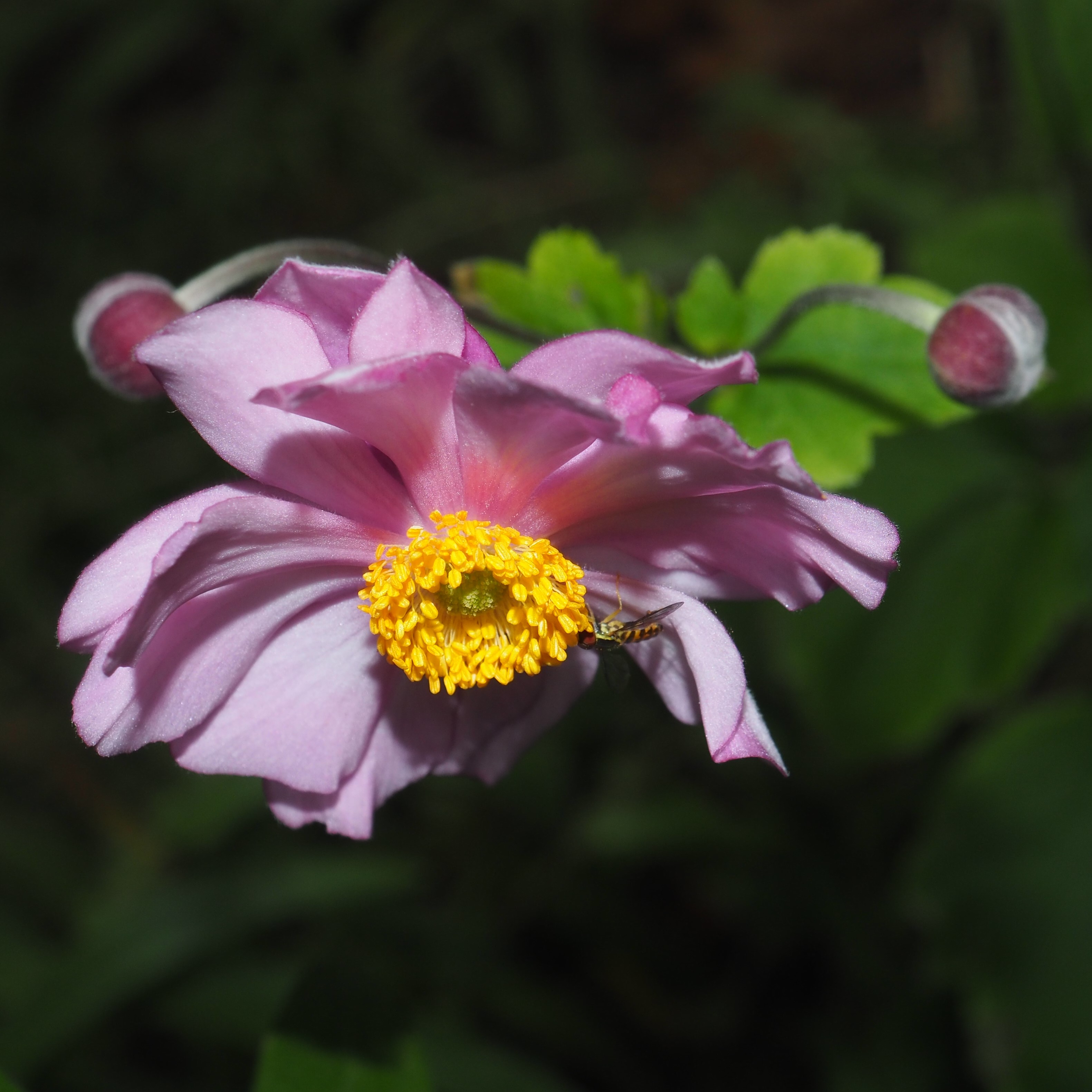

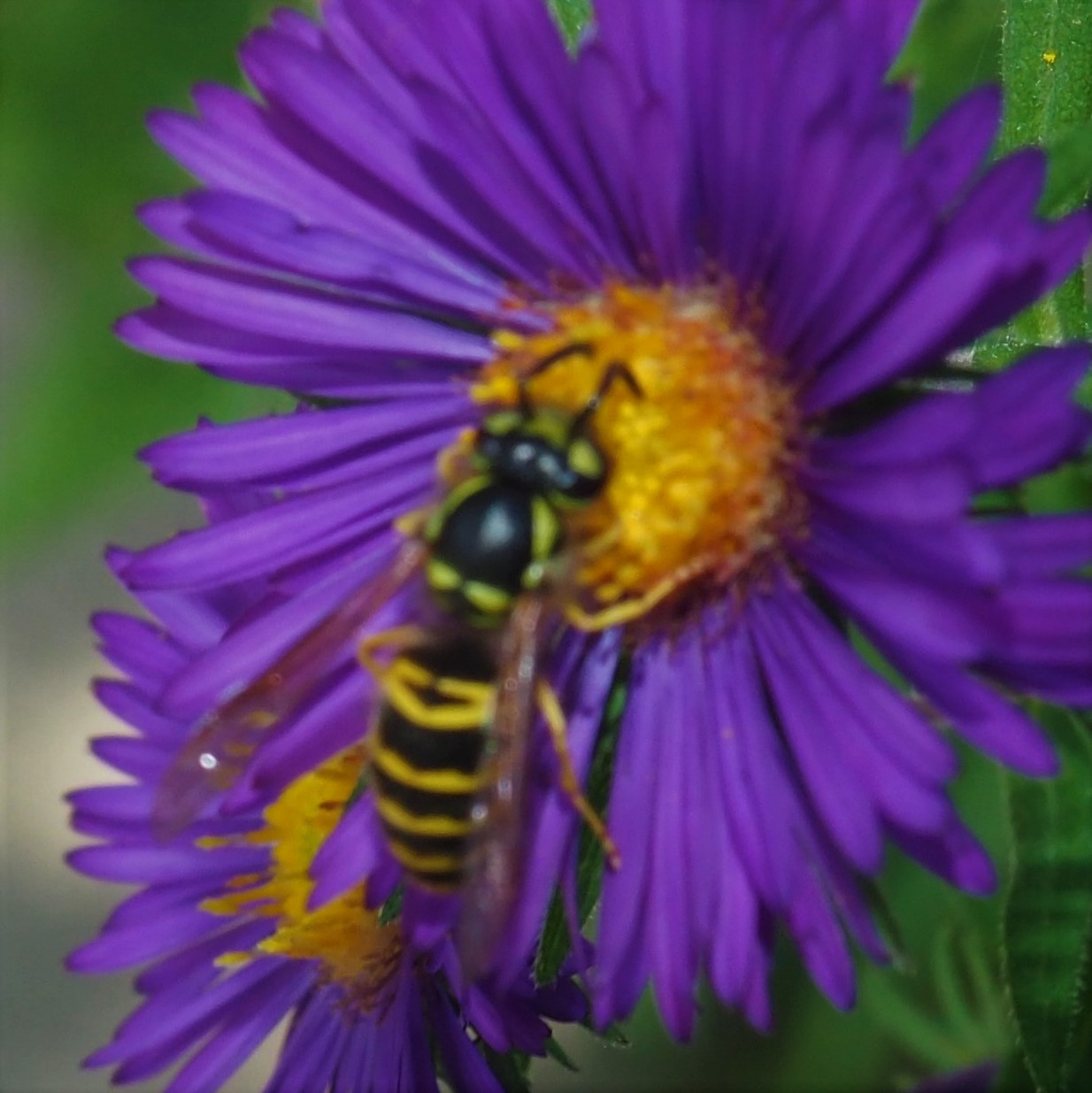

Here is one of the last of the August Orange Day Lilies, the biggest flower in the yard right now. Then one of the smallest flowers of all time, the Spiderwort, which stretched its blooming season out by only showing one or two blossoms a day. Third, this Tall (about a foot taller than me) Evening Primrose before it closes up in the morning.
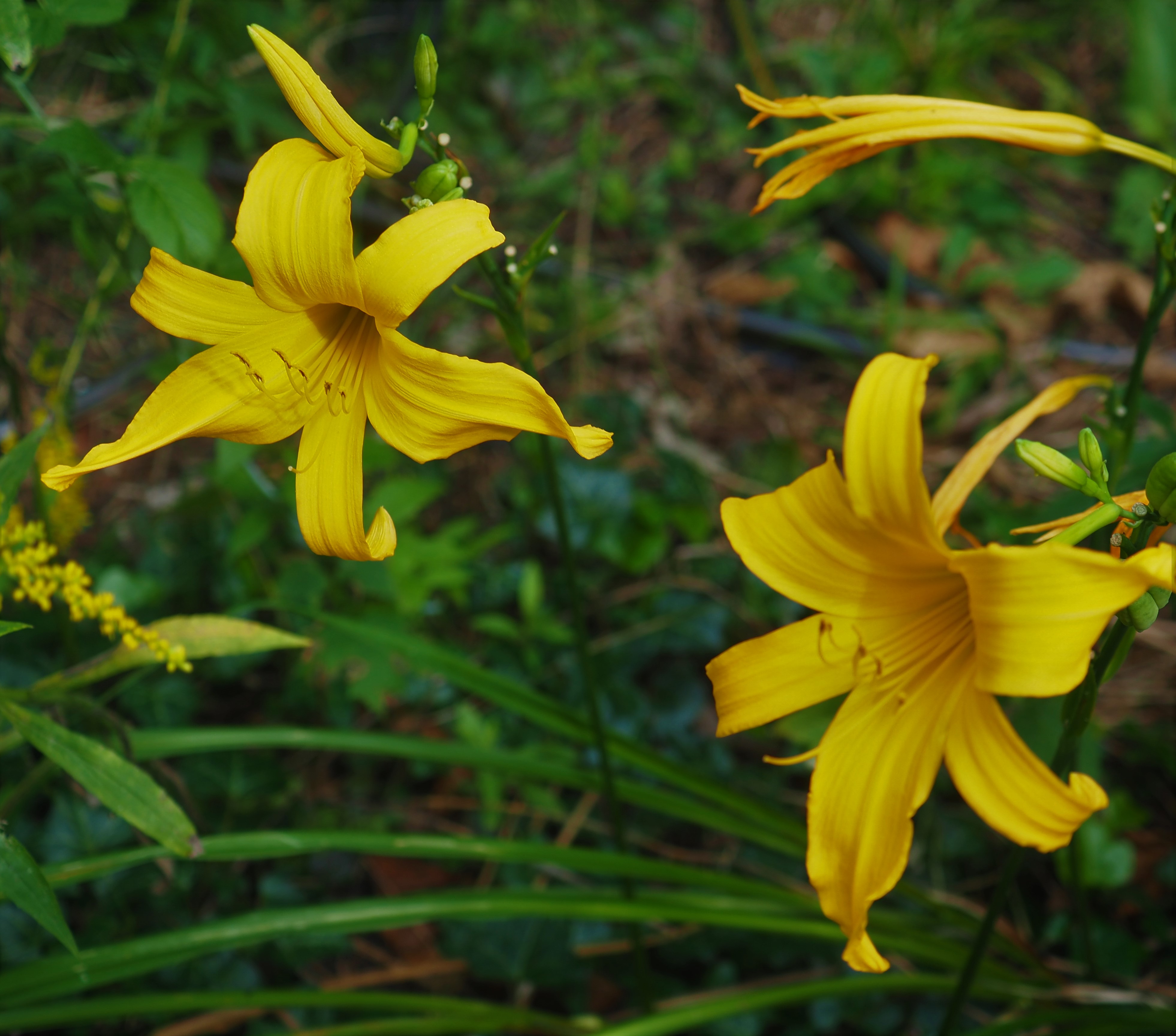
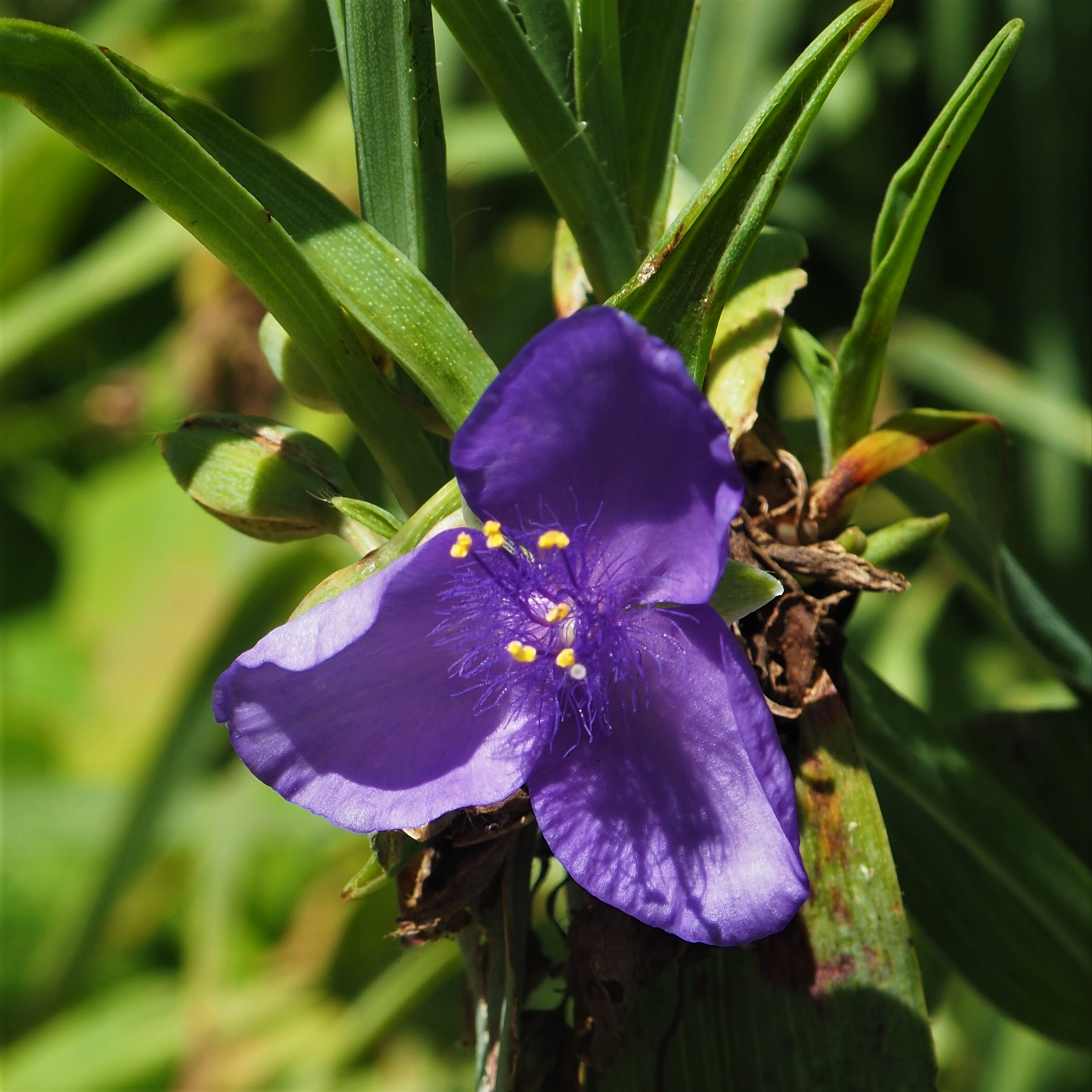
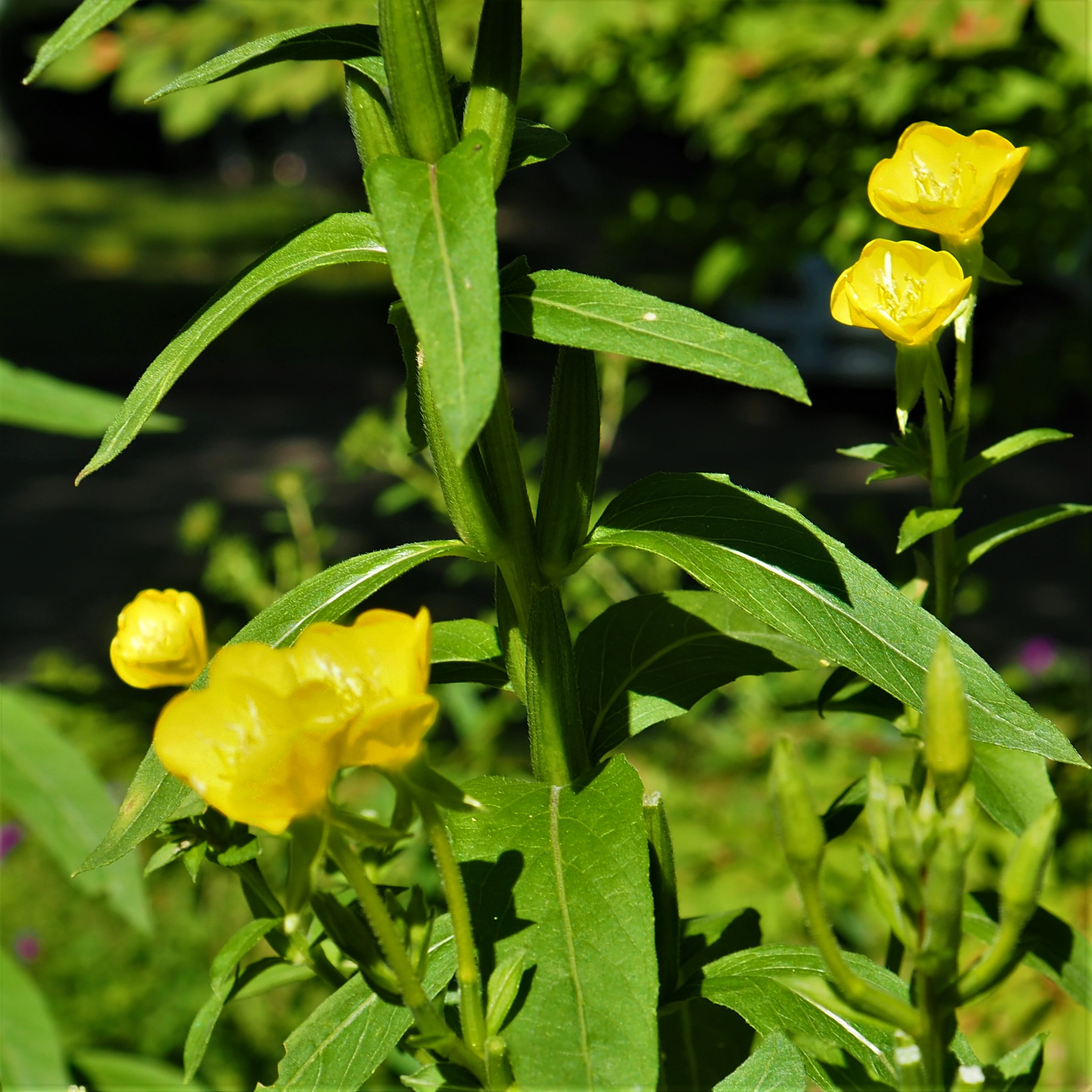
Here is the cultivated Fall Phlox, and then the wild type. I just need one more Flower Picture now, what could it be? Could it be, , , Goldenrod??? The most glorious florious of them all?
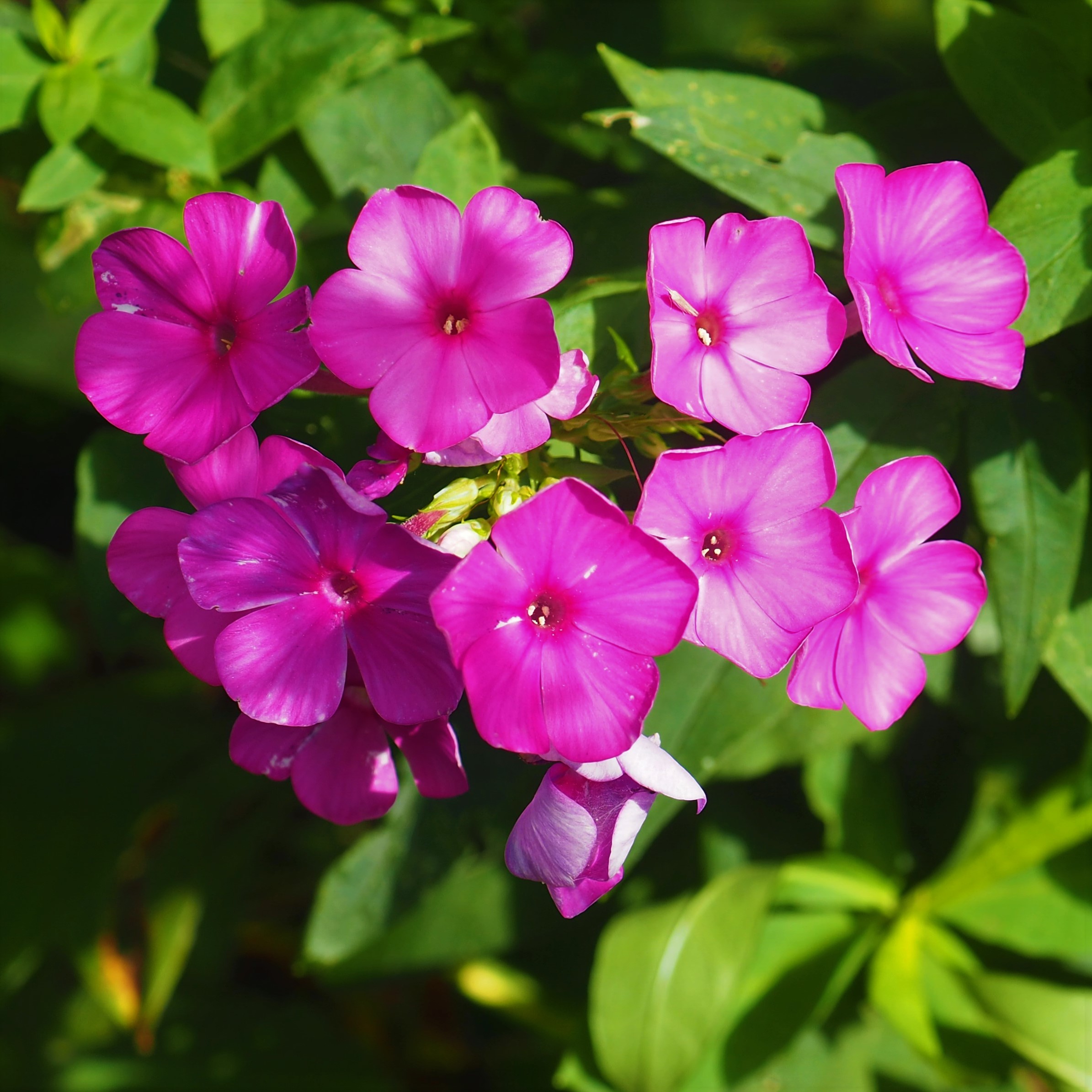
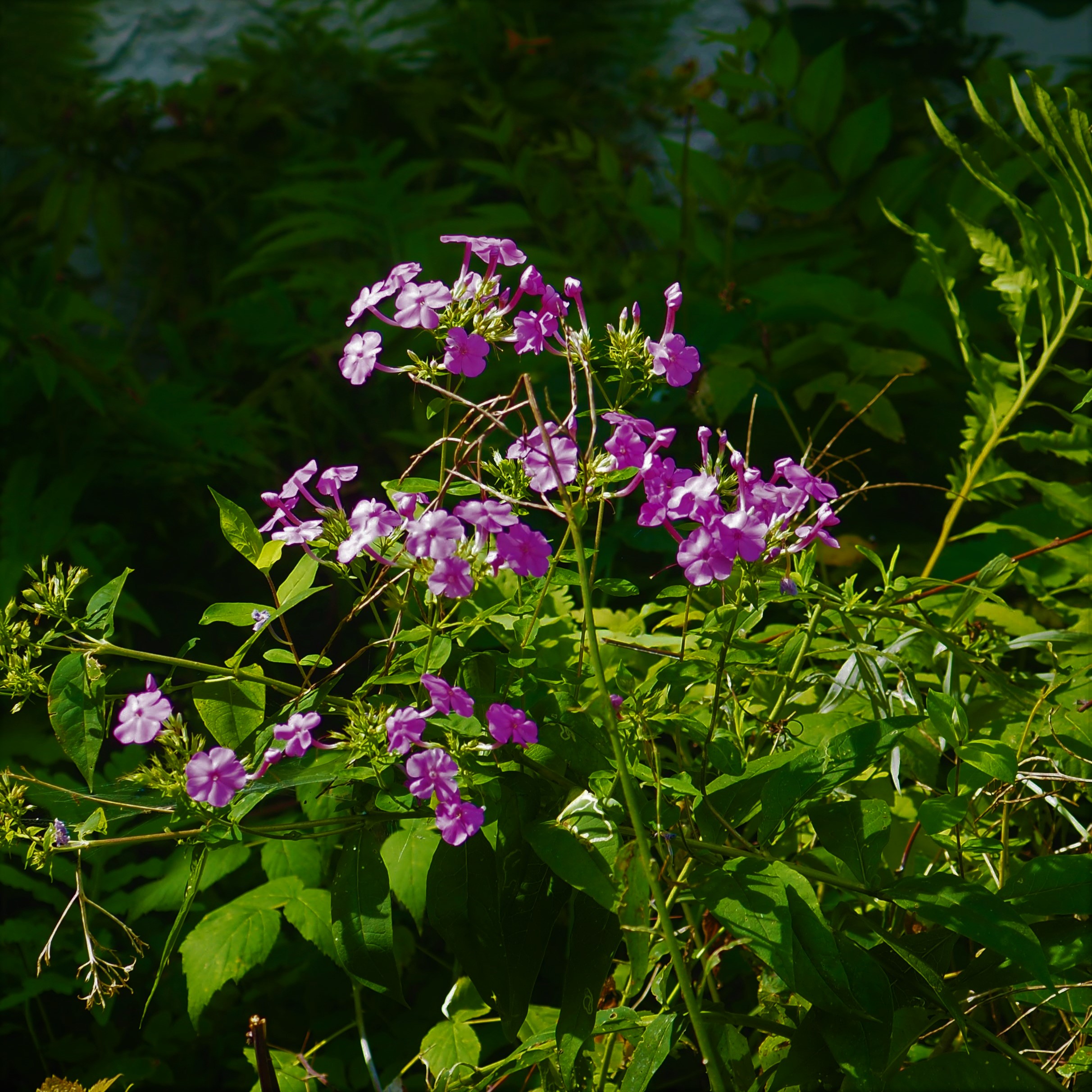
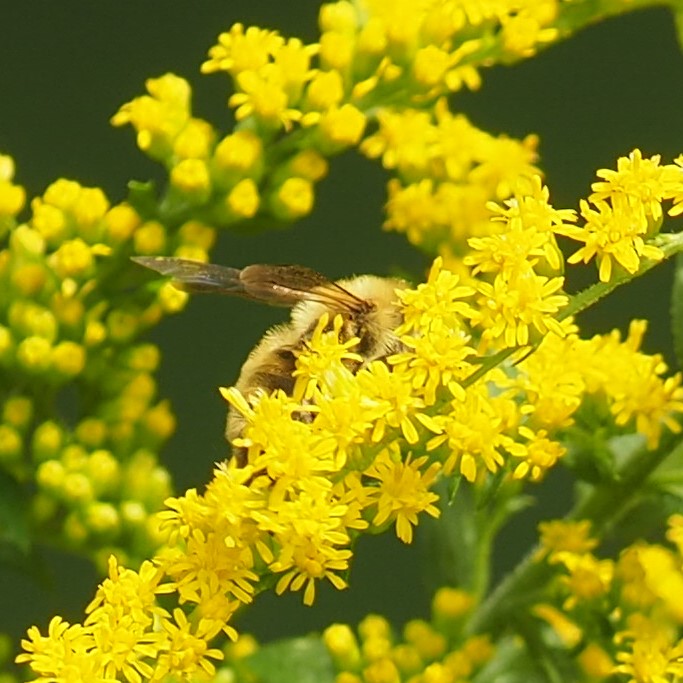
Let's visit the Spiders! First is a mystery, but Second is a Cobweb Spider. So is the Third.
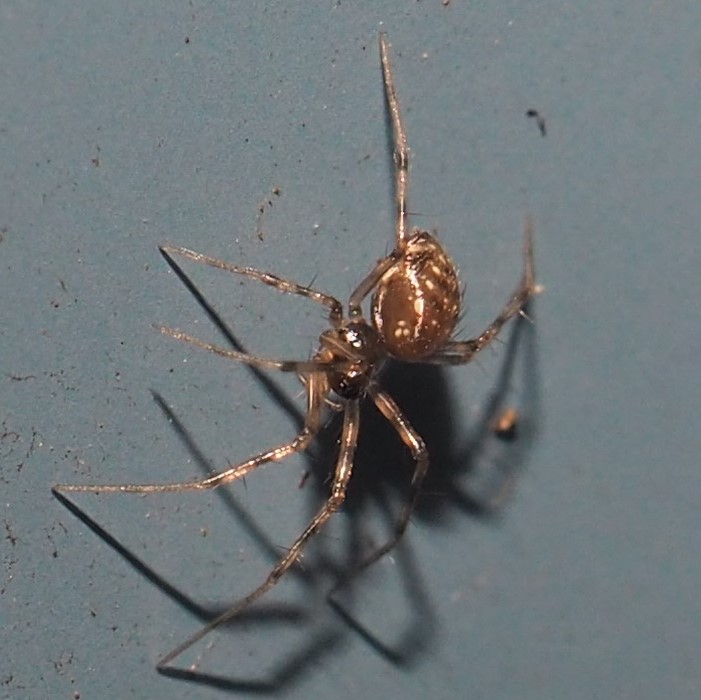
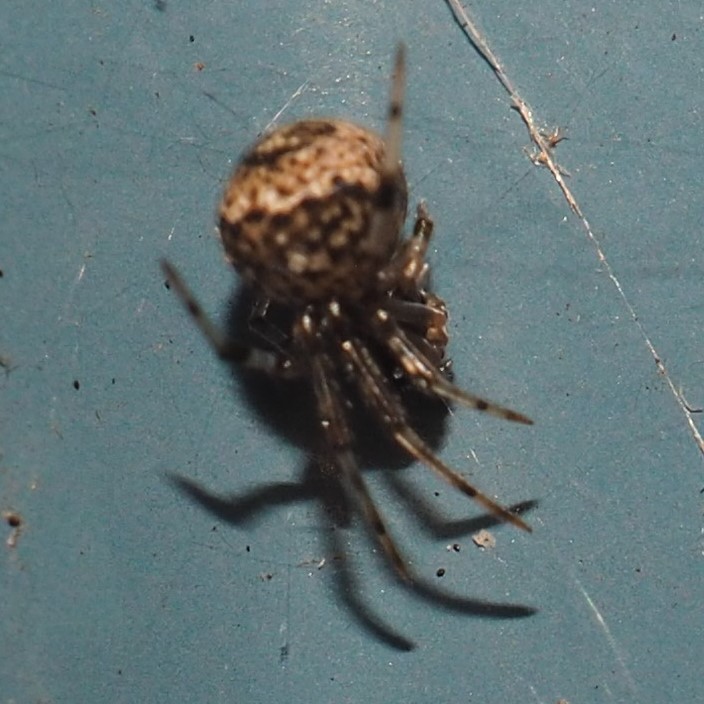

First of this group is a young Jumping Spider, Naphrys pulex, one of my favorites. Next is a Garden Ghost Spider. Last is a Cellar Spider.
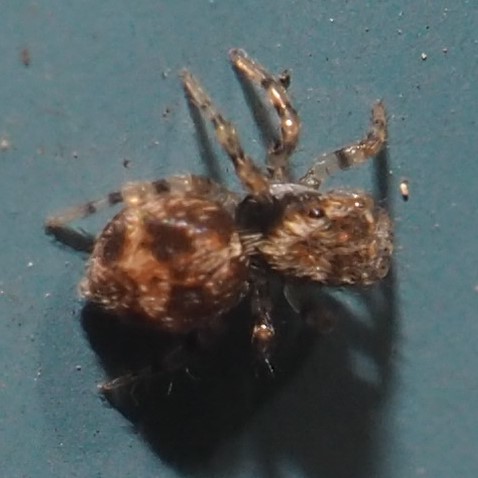
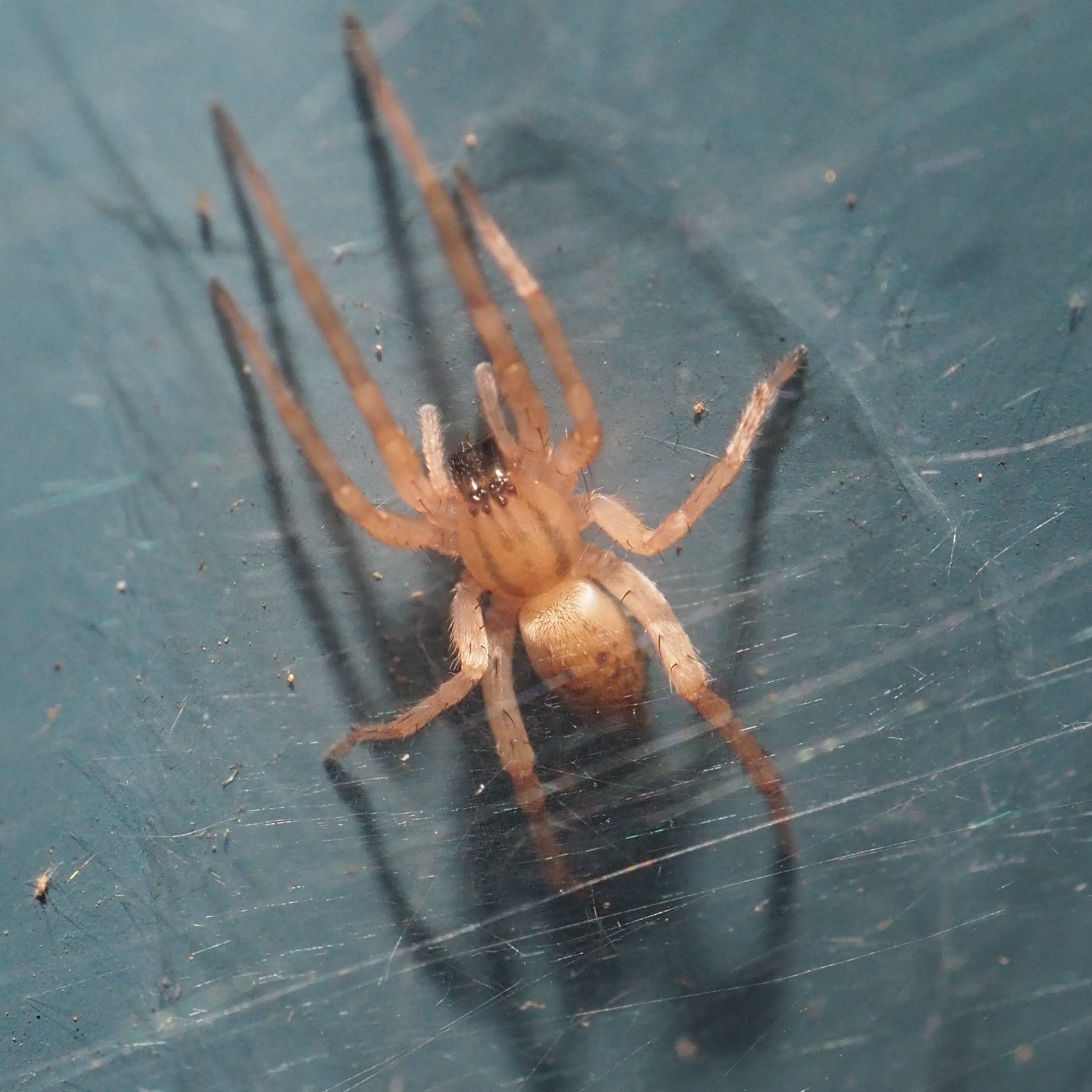
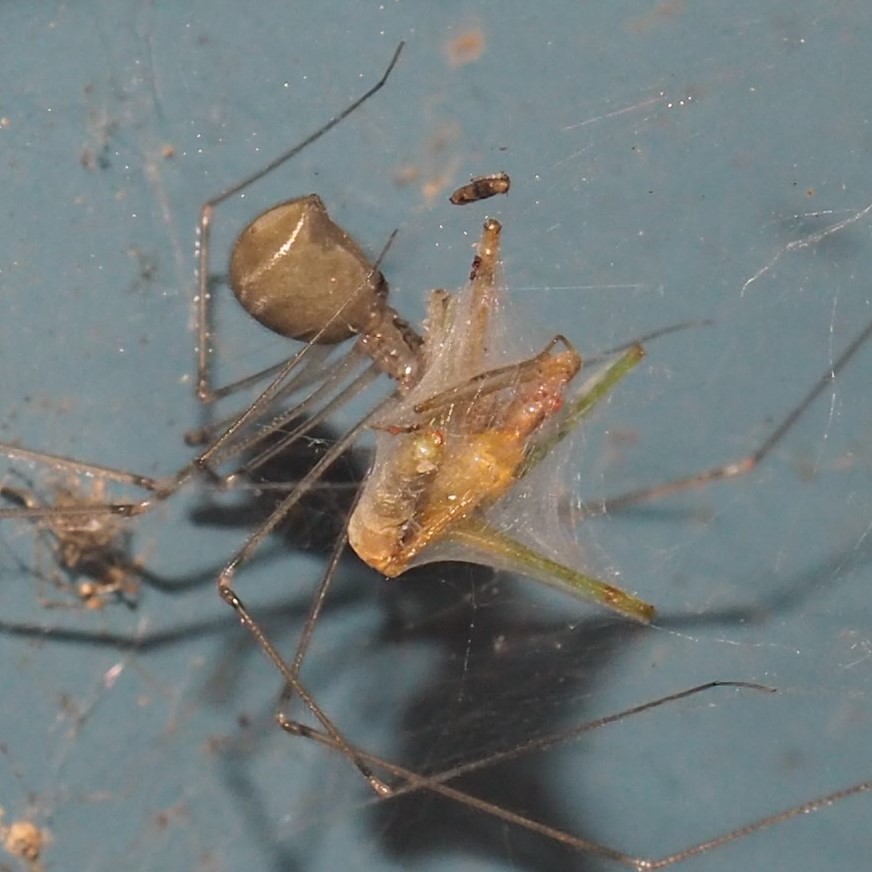
A very small spider has sat in the same panel of the South Wall for several days. Suddenly my palm flew to my cheek. Yegads, it is a juvenile Mimetus genus Spider, and maybe even my favorite, Mimetus puritanus. First is from August 31. Then comes one from September 1 and finally, one from September 4. You can see how the little "person-like" image on the head is coming clear. What may still be too subtle is that the big white grin is still not clear enough. As it matures, the face behind the grin will darken and the grin will seem to lighten so that the species will eventually be determined.
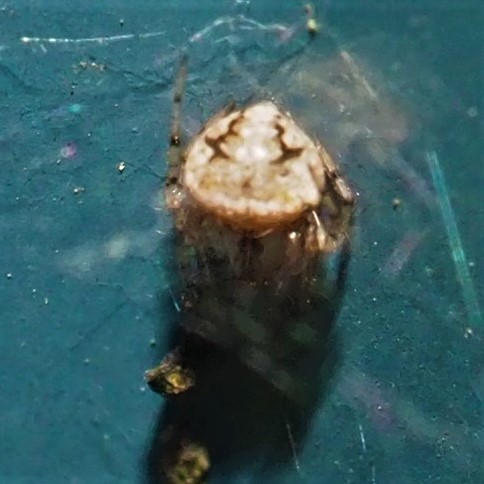

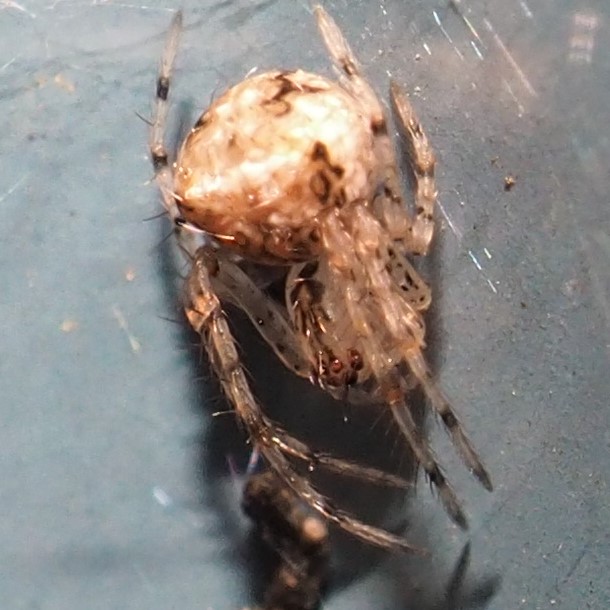
This first Spider looks like a Grass Spider out of her web cave. The second picture seemed to me to be two Spiders mating, but my friend @tigerbb says that the smaller creature is probably a parasitic wasp larva.
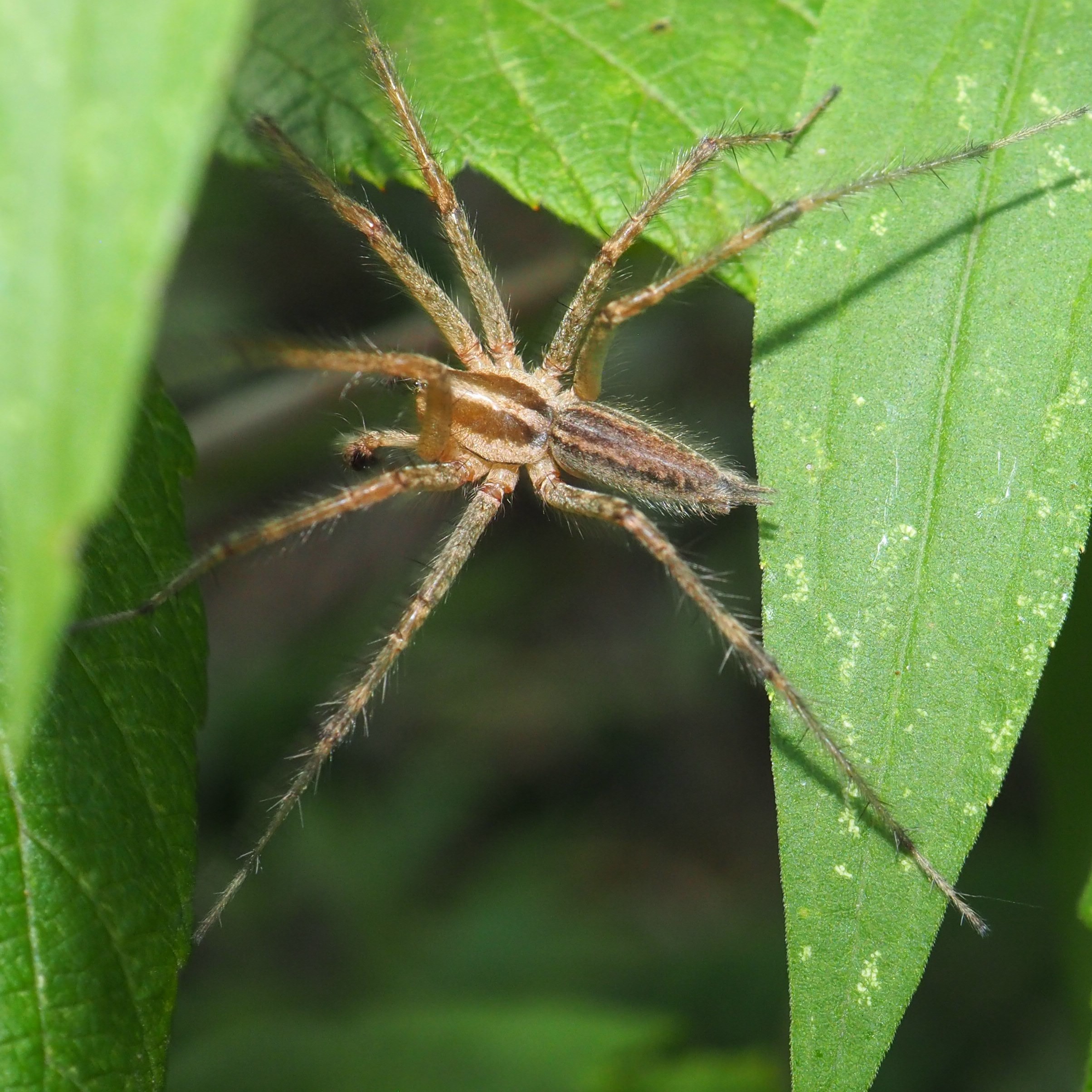
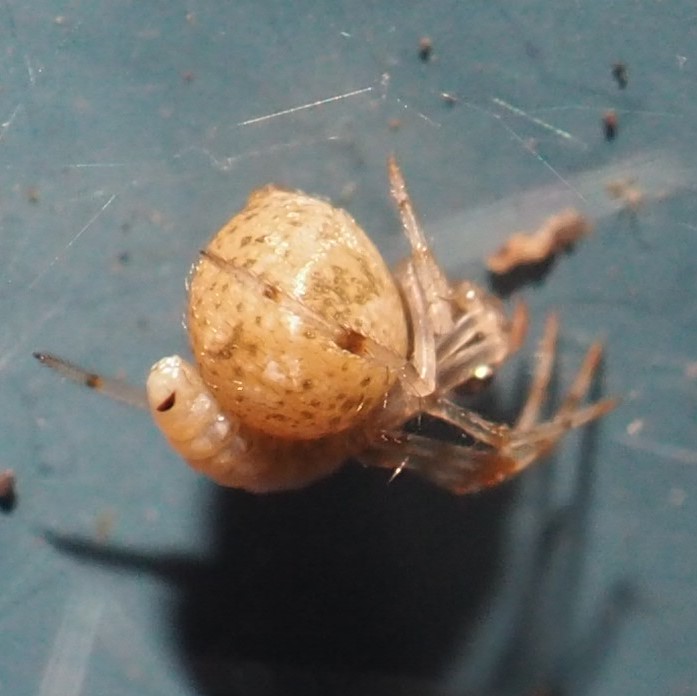
Now to the Wasps. I won't repeat all of the ones we saw last week, but here are a few more. First, a tiny wasp, probably a Chalcidoid Wasp. Then another that I don't know. These were the only two that weren't on the Goldenrod!
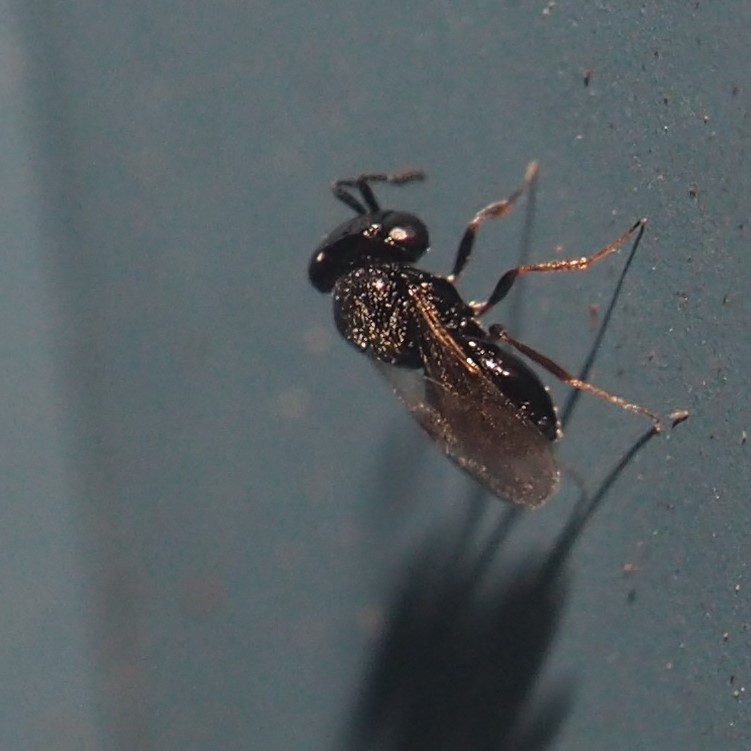
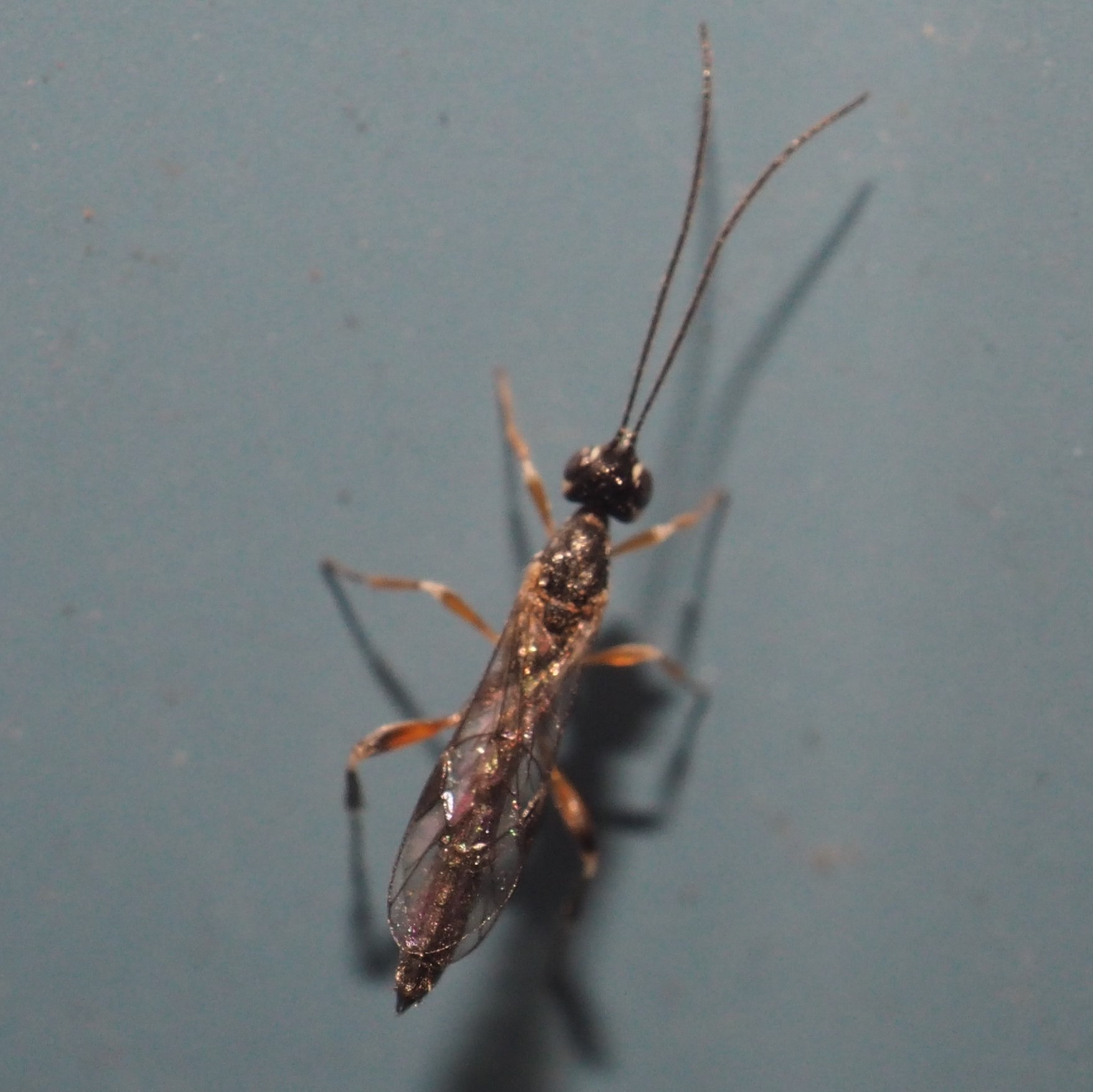
This is one that was common last year. It is probably of genus Cerceris (one of the Weevil Wasps!).
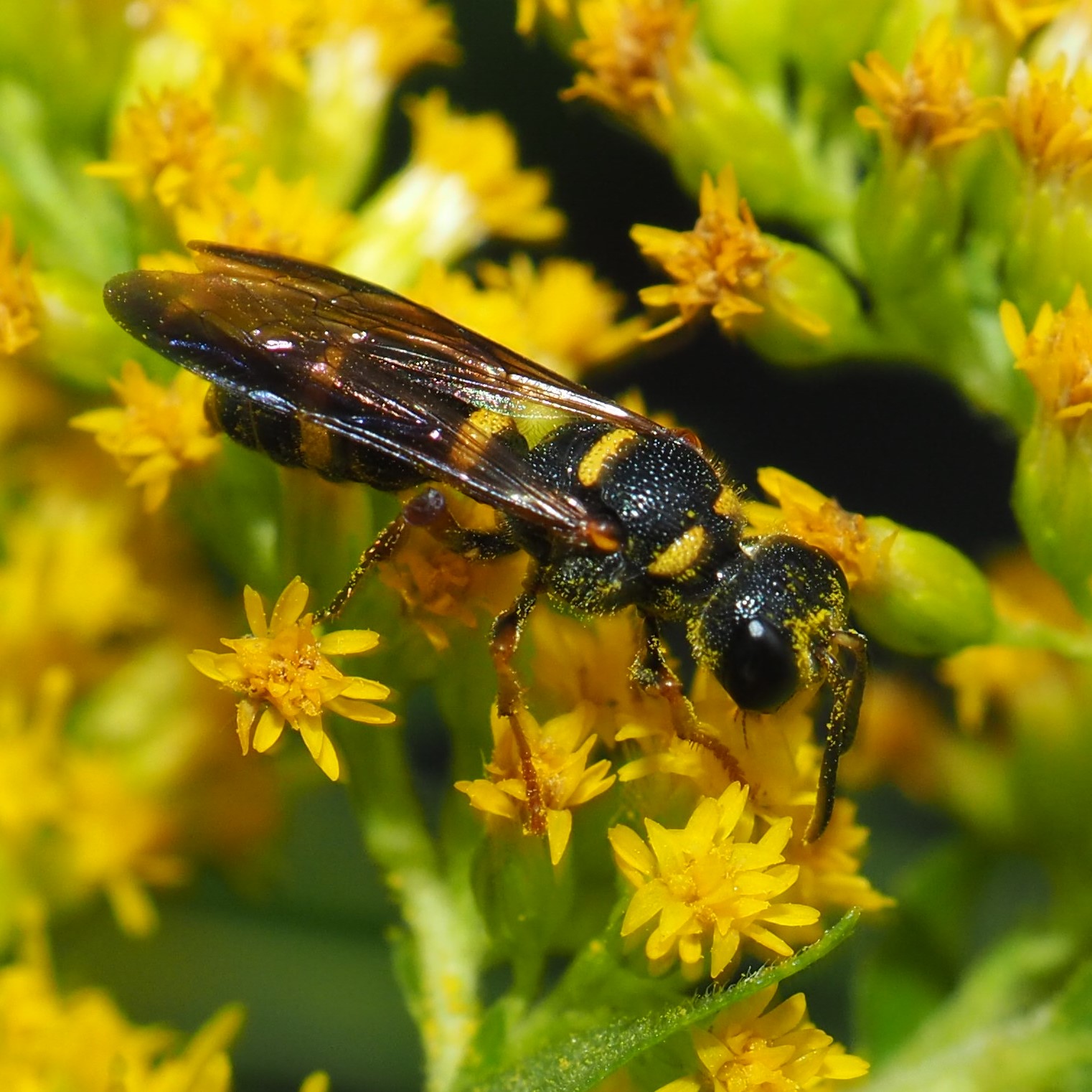
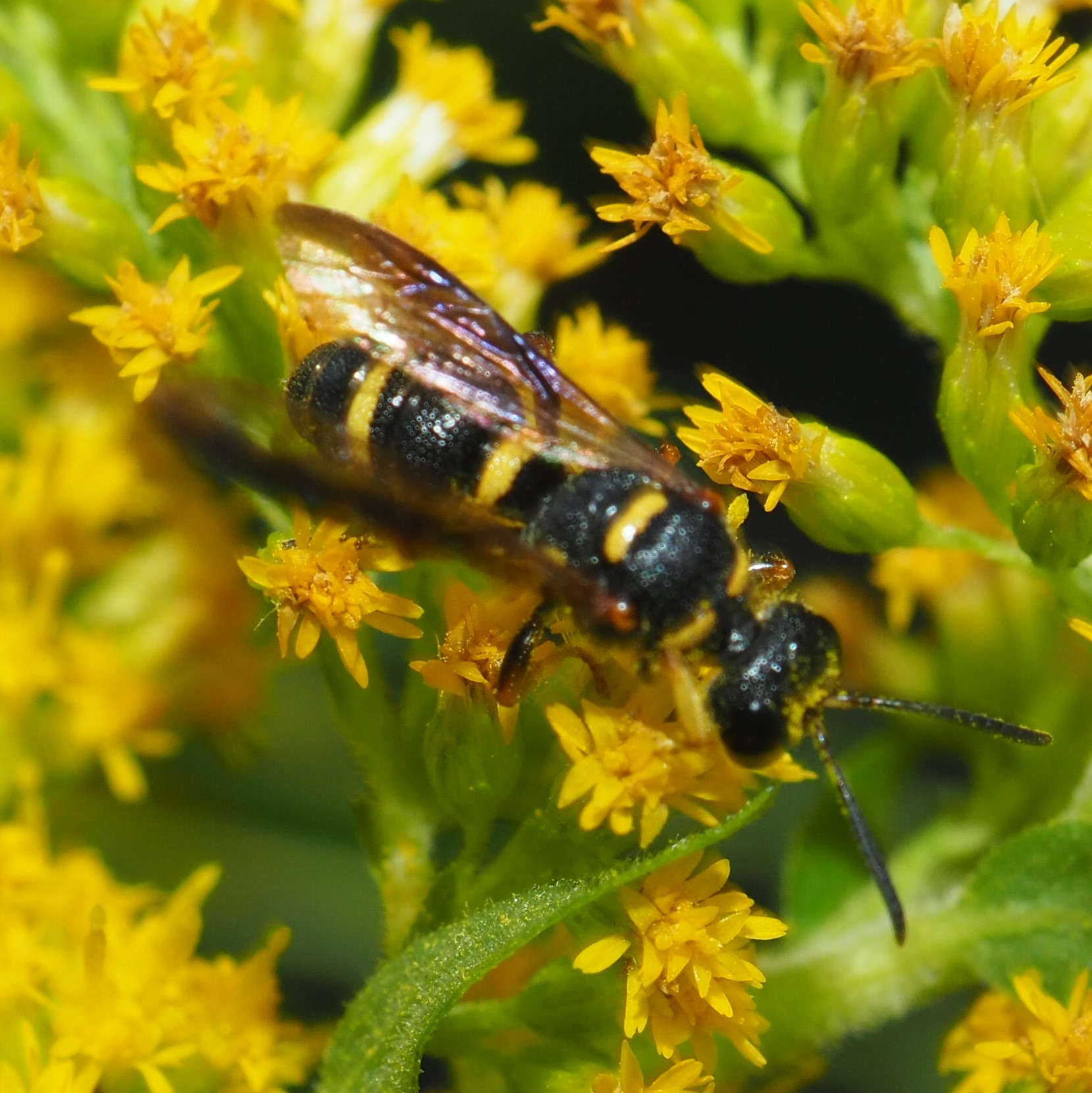

Here is one that I haven't gotten identified yet. No yellow markings, what kind of Wasp could it be? The next two are a tiny creature called a Gasteruption (no kidding, that is really the genus name for this little thing!). I usually only see it when the Goutweed is blooming, but the major locus for our Goutweed is still a bit messy after the re-digging of the Pond last year and I never saw any Gasteruptions on it this year. It might or might not be a Wild Carrot Wasp, but apparently it would need to have some dissections to know for sure, so we must just leave it as a Gasteruption.
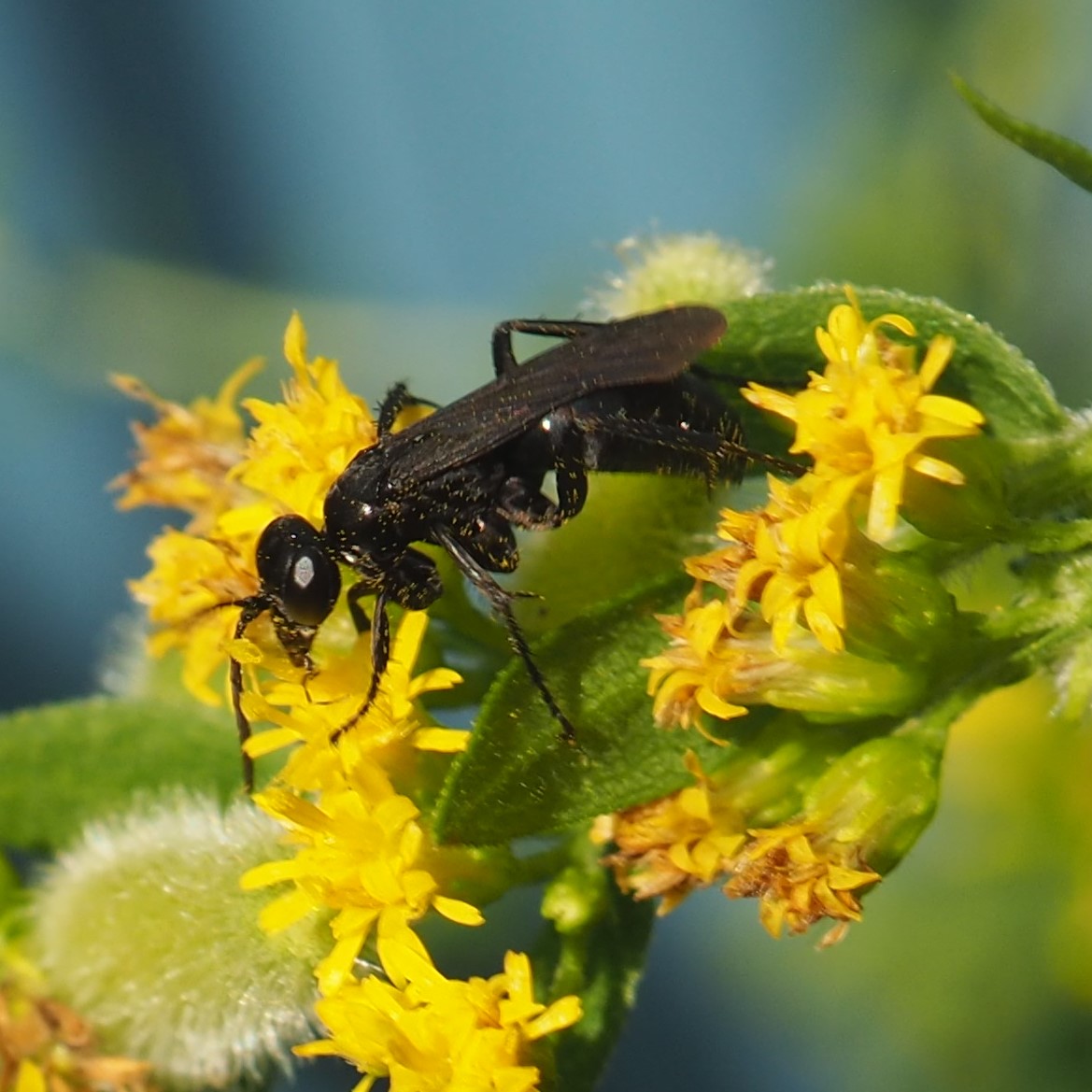
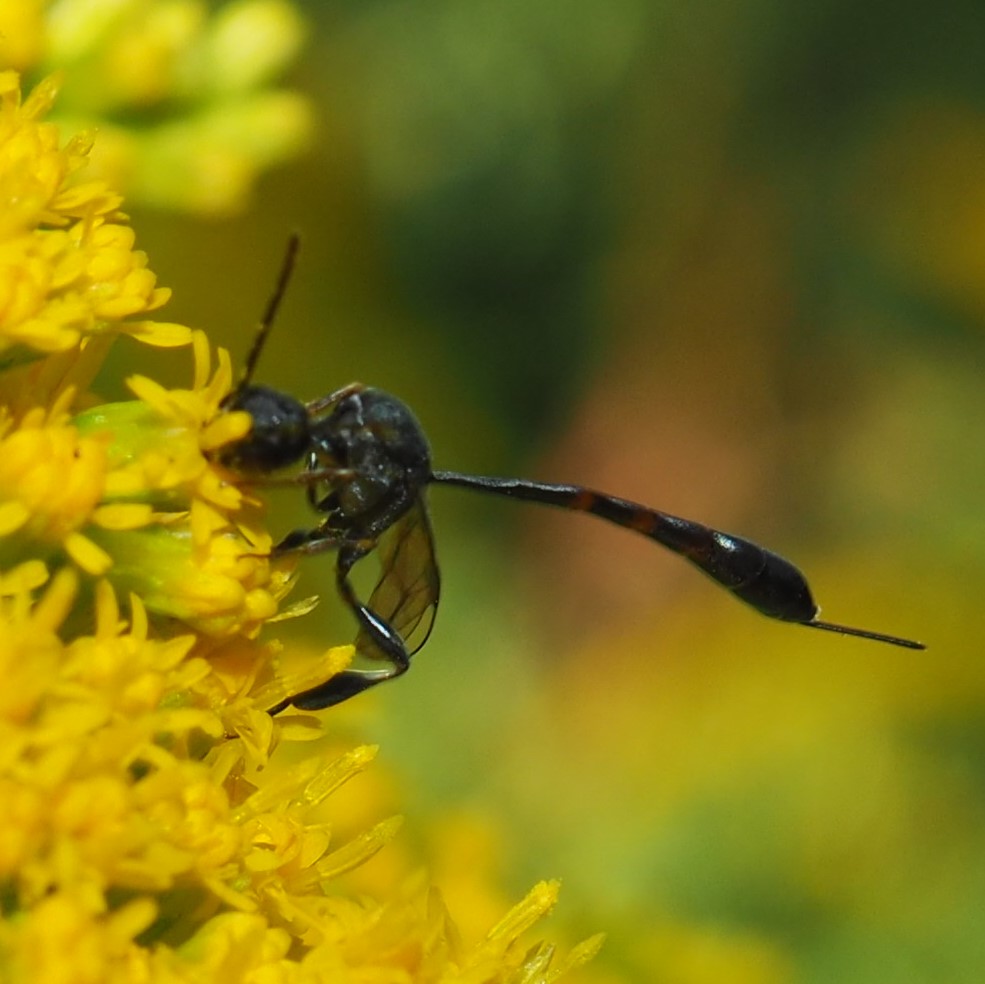
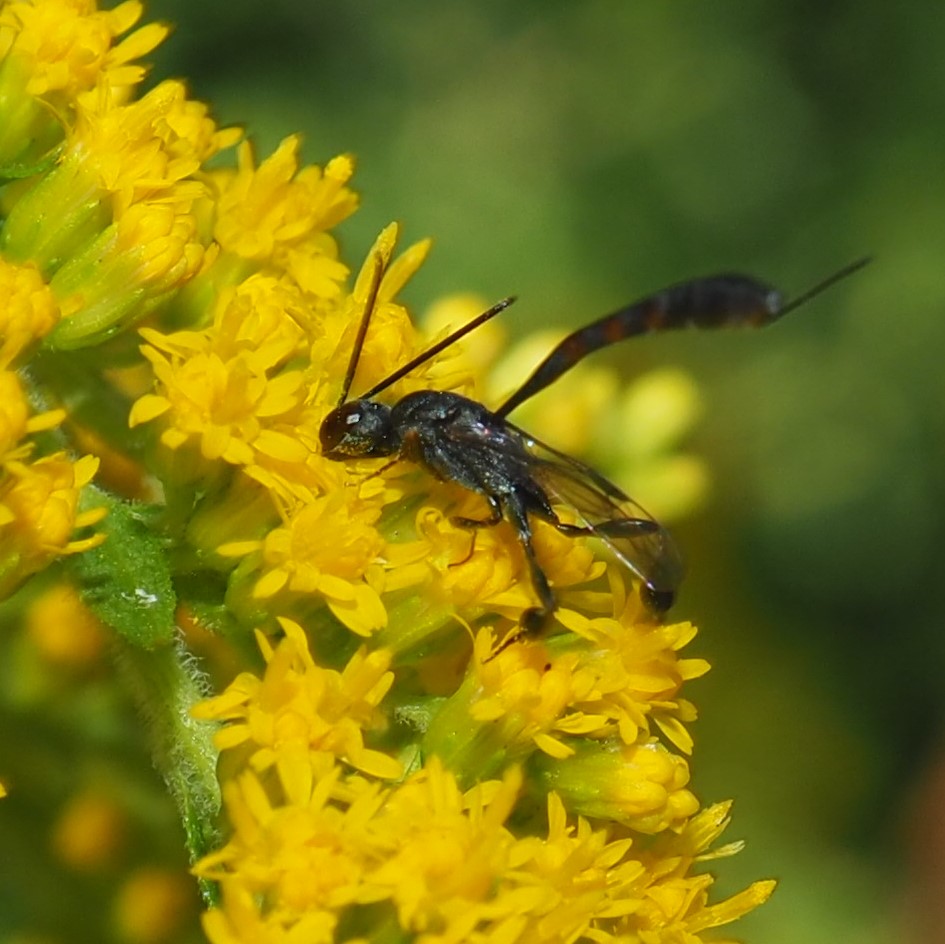
Here is a little Yellowjacket which let me get a few close pictures, especially its facial view, which identifies it as Vespula flavopilosa (Wasp downy- (or blond-) haired).
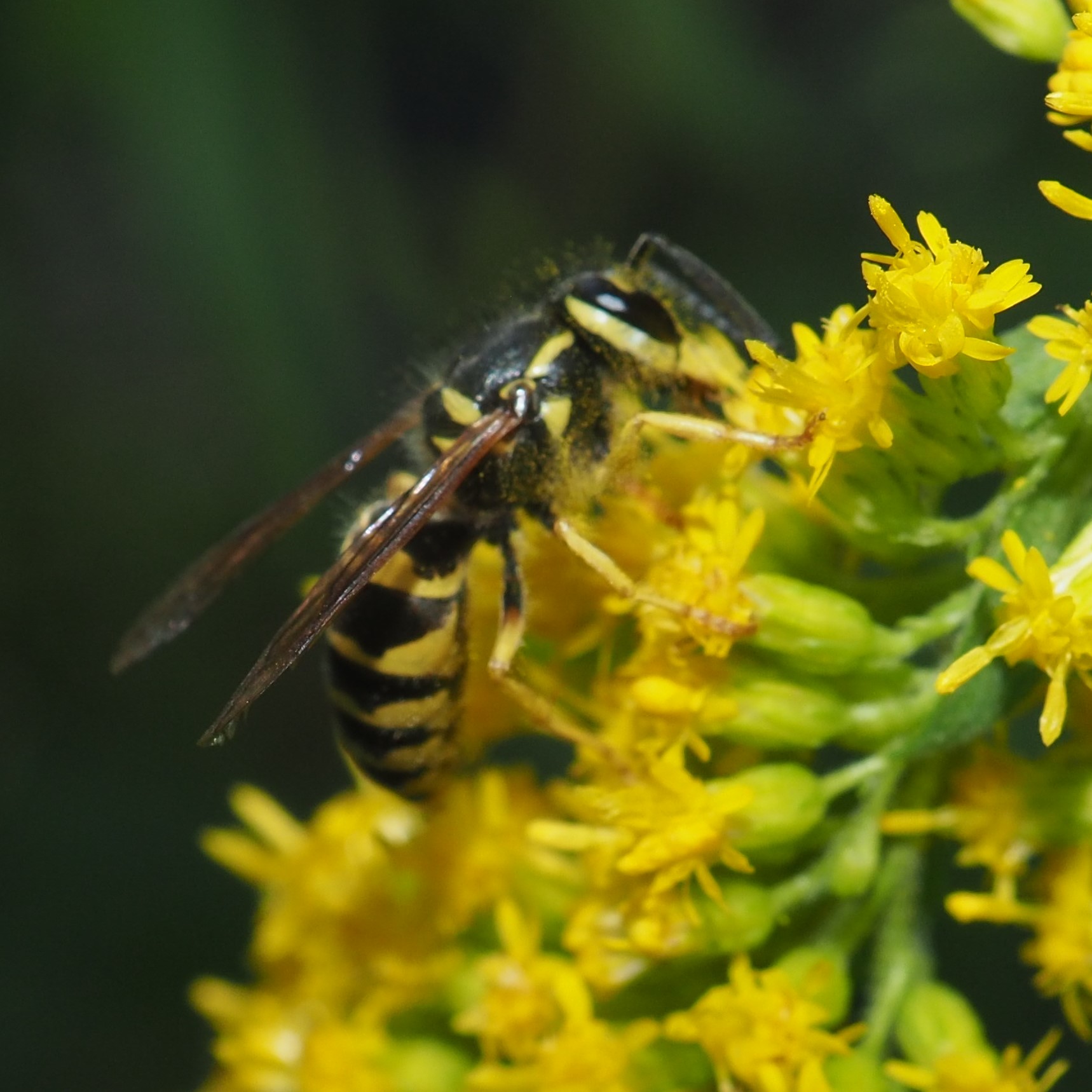
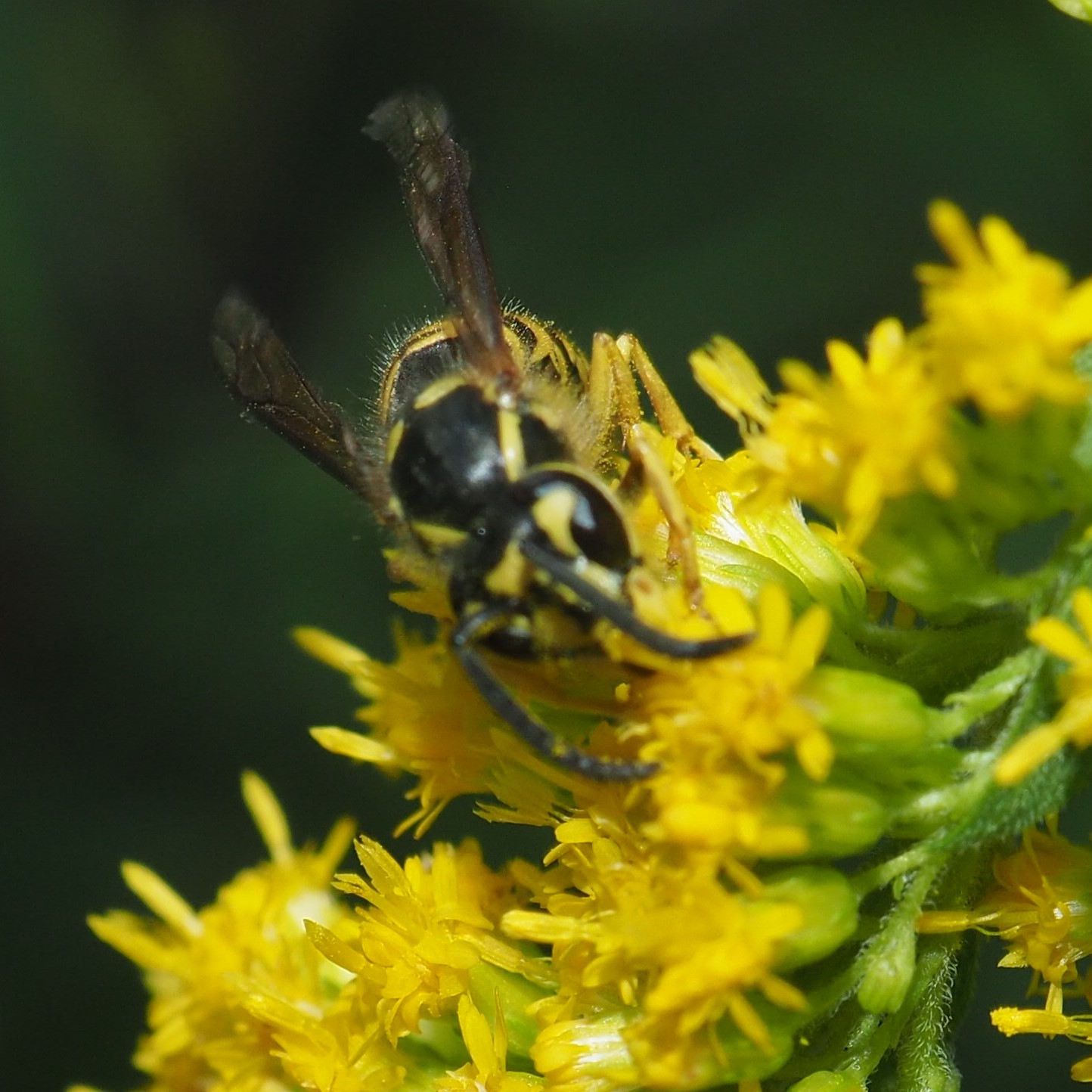
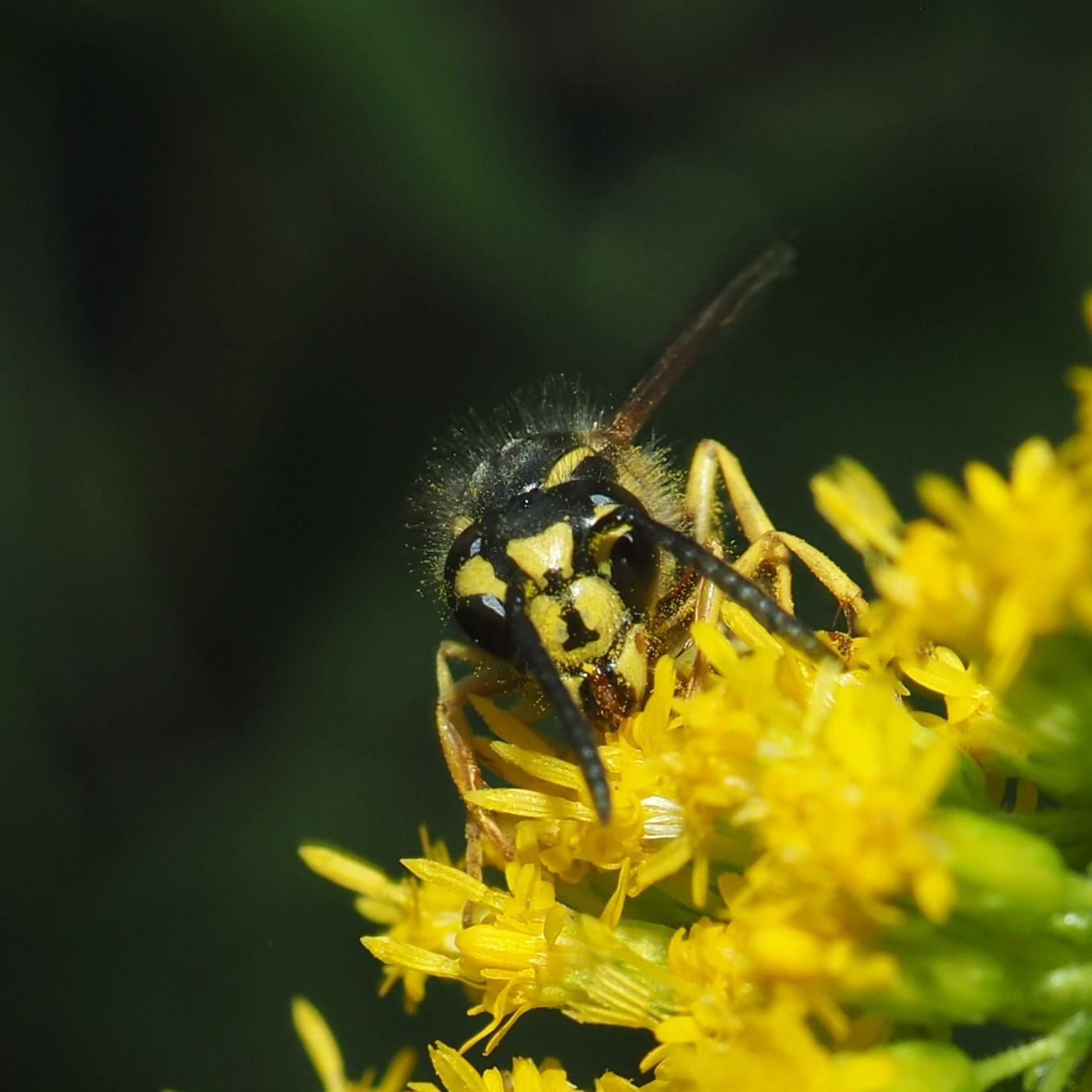
This brings us to the end of this week's pictures and stories. The Raccoon who caused so much havoc still comes out of the storm drain at dusk and does what he can do to get fed and above all have a little fun. He almost killed all the fishes but the fact that the pump input was just an inch or so above the actual pond bottom, and those fishes, who are as dedicated as he is to living and feeding and having themselves a little fun, came up as the pond refilled to show me their healthy hungry little bodies still with us. Not only that.
The little frog was sitting by the pond as Chaim came around that corner and we were talking about life, the universe and everything. As we chatted I heard near my feet a small frog-like "chirp?". TWO little frogs had survived the onslaught. One, a little male who chirped at my feet, and another, near Chaim on the other end of the pond. Here they are later, sitting not too far from each other. One, dark from moisture, is sitting in the water, and the other, normal colors, is sitting on top of the barley bale it calls its seat on the world.

How much better can life get than THAT?
Love, Martha
Oh. Didn't I tell you that I would show you some of the "Morphings" I'd gotten from some of last year's Japanese Anemones?
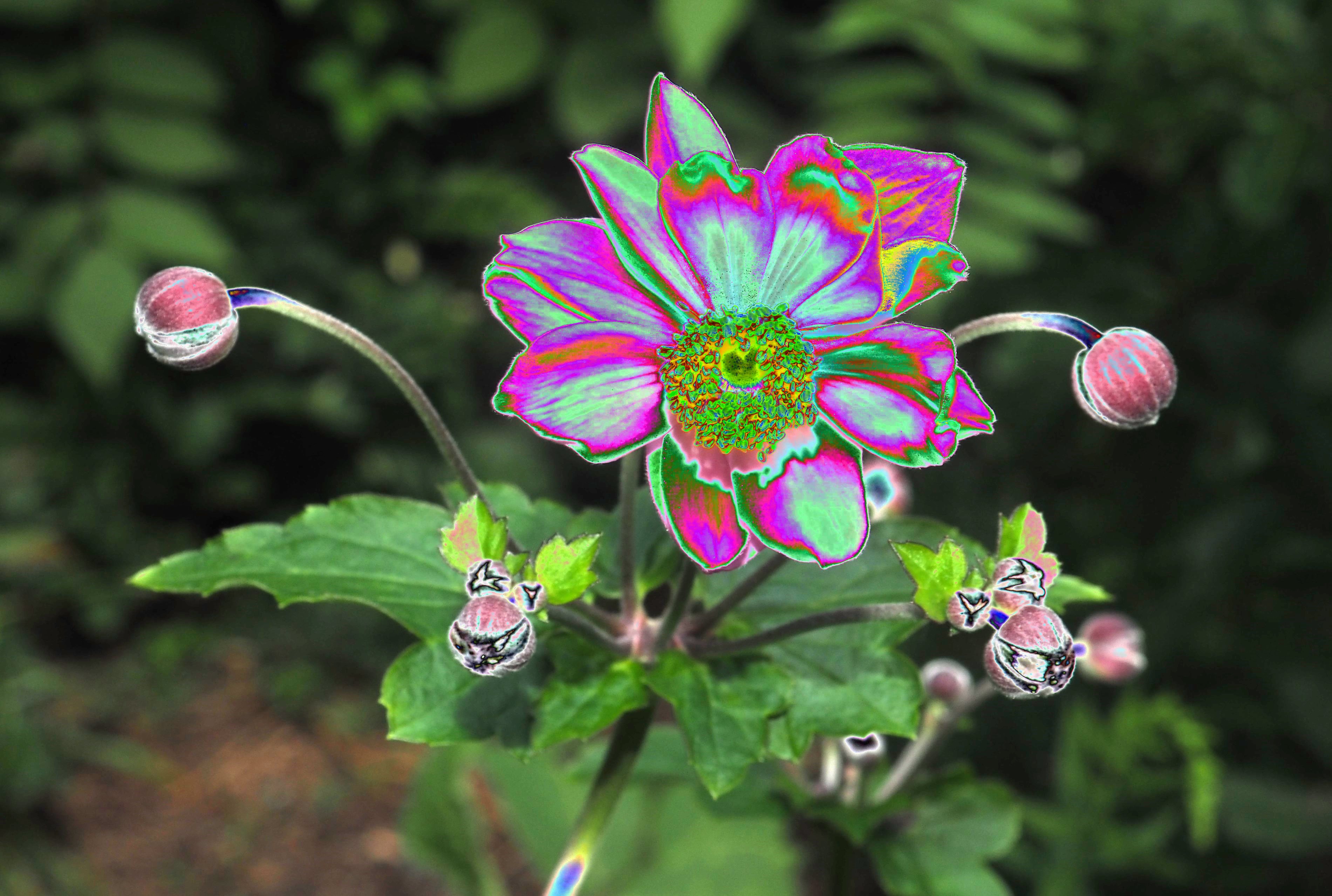
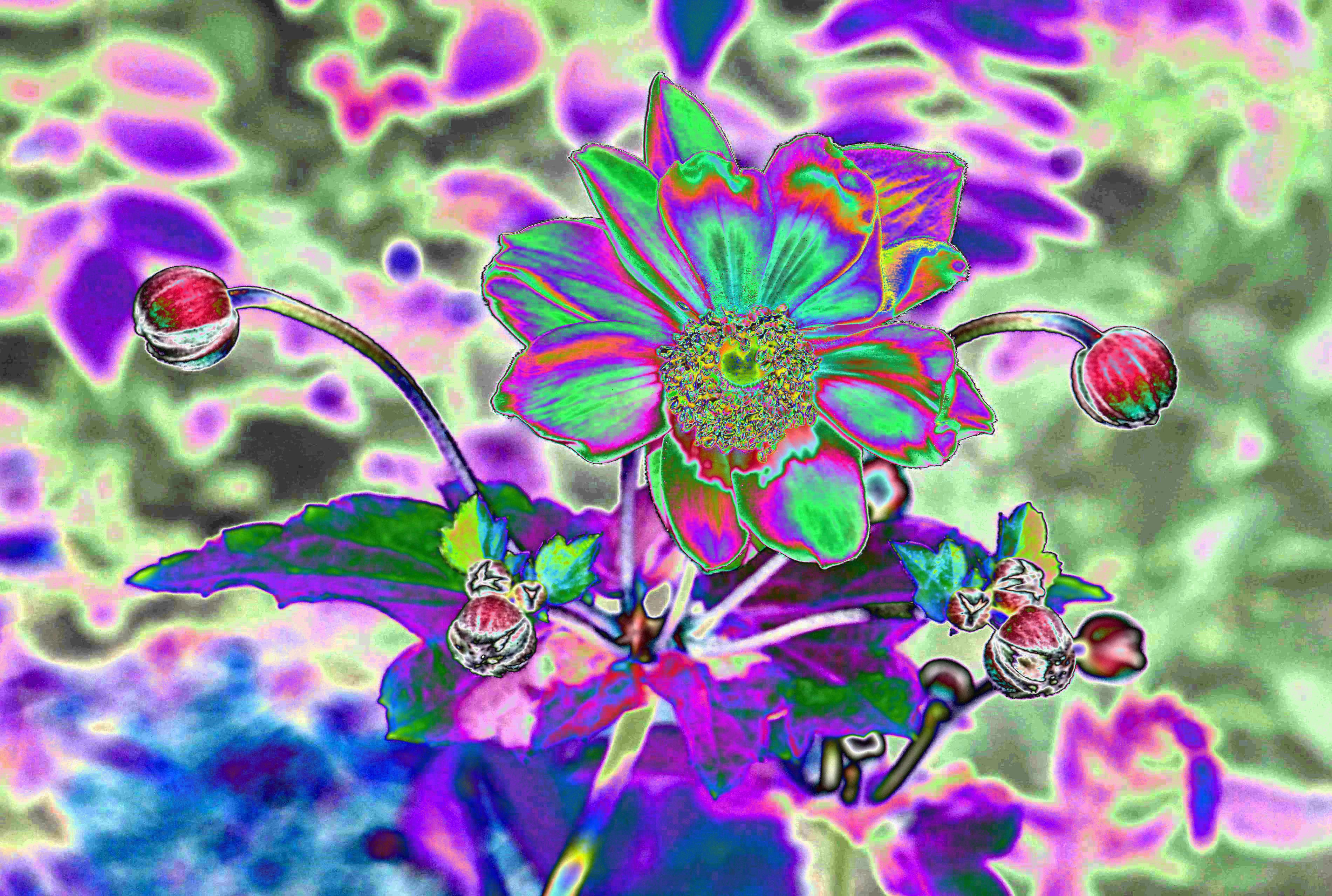
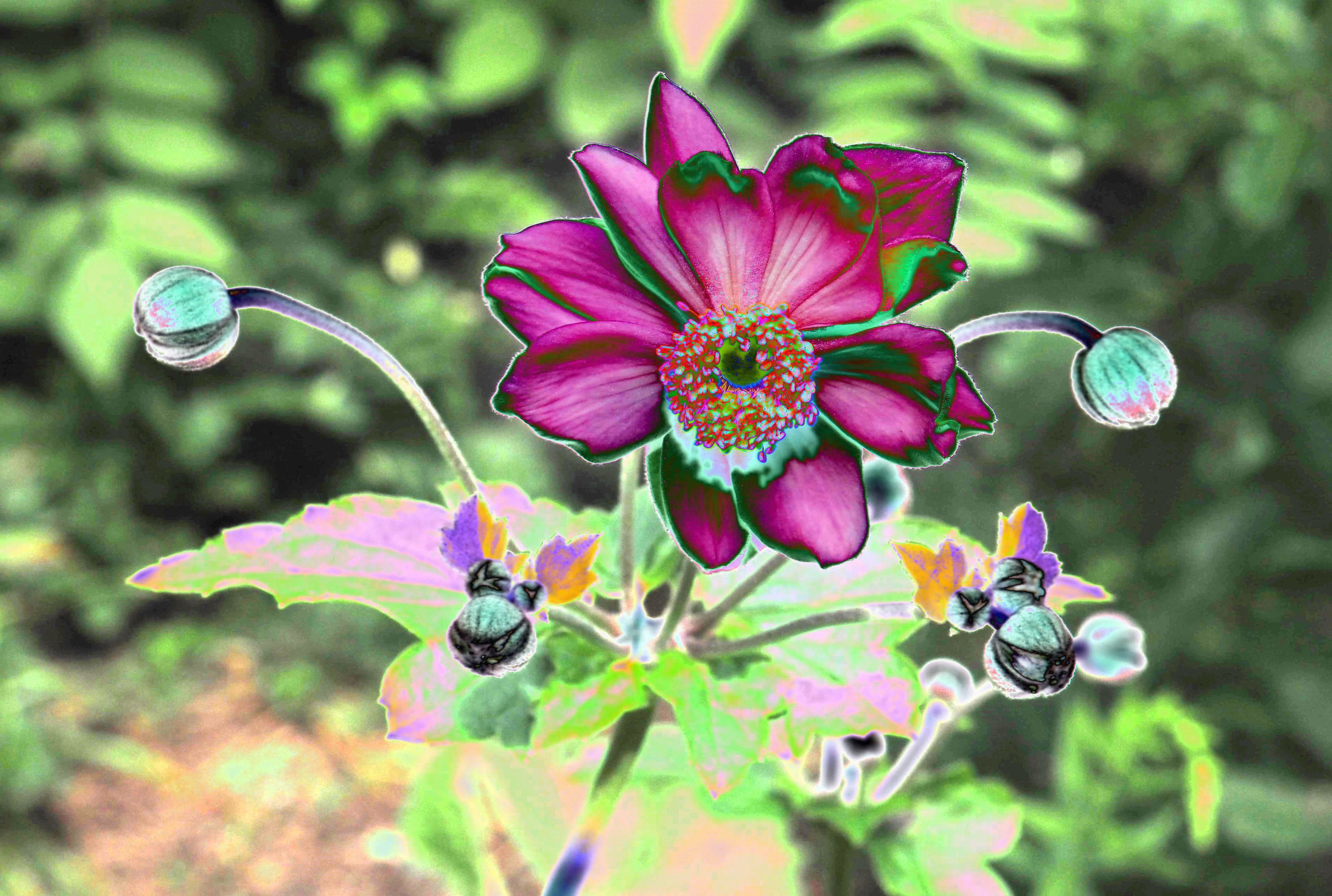
Back to August 29, 2021
Forward to September 12, 2021
Back to main menu
copyright Martha O'Kennon 2021















































































































